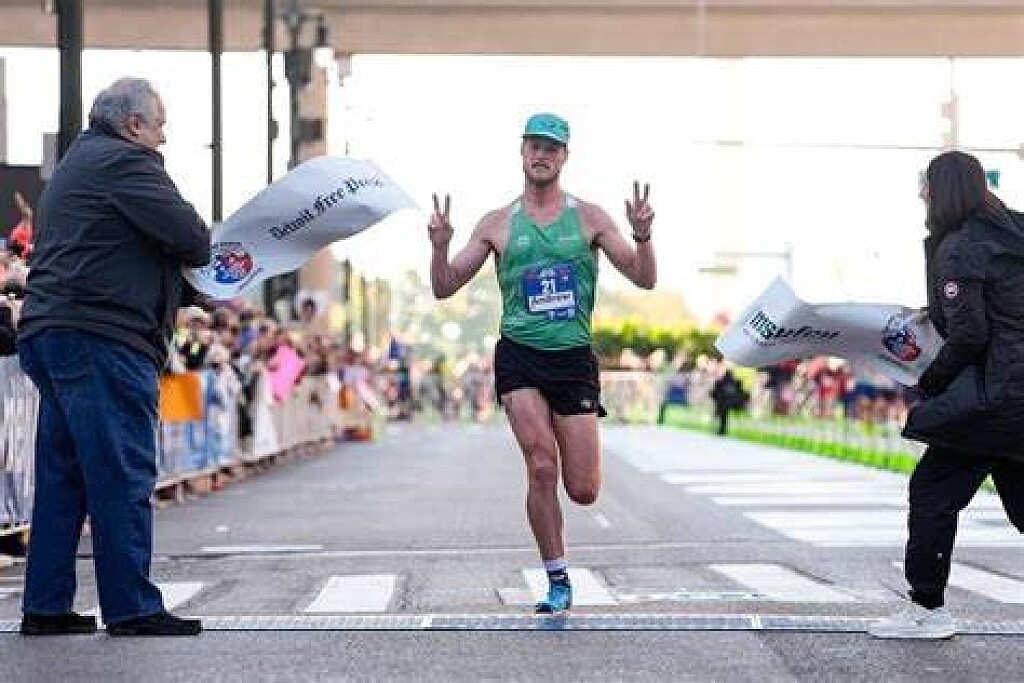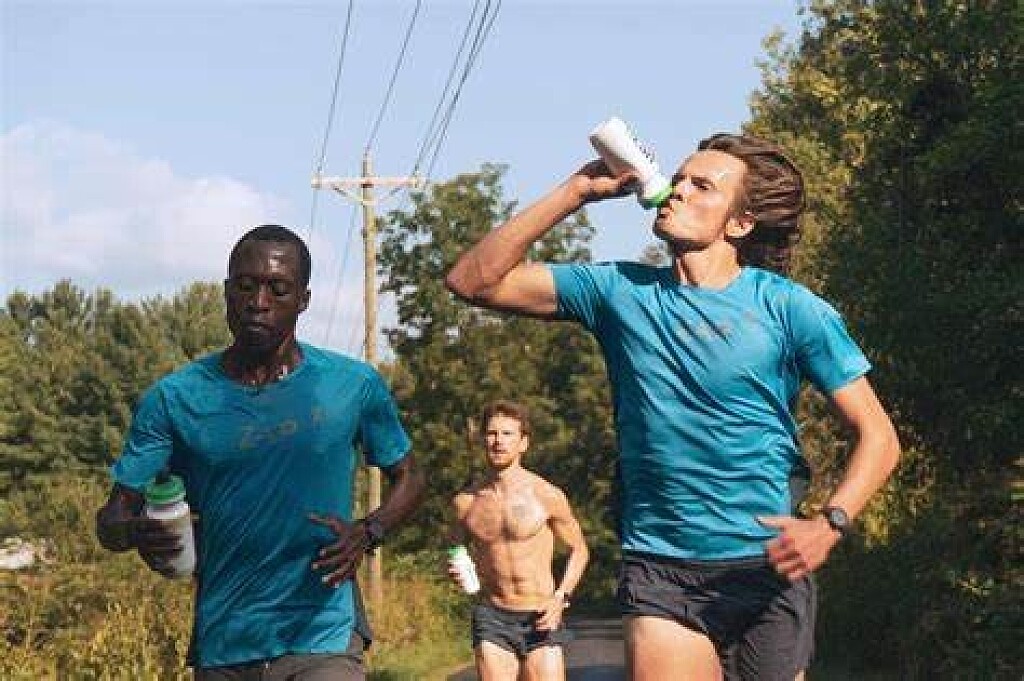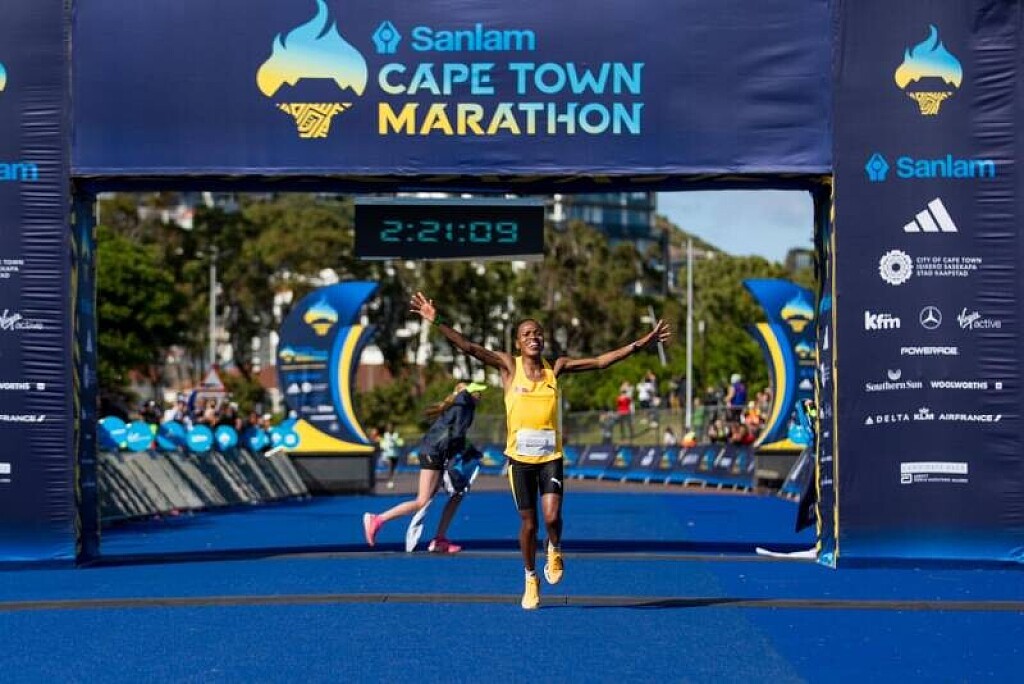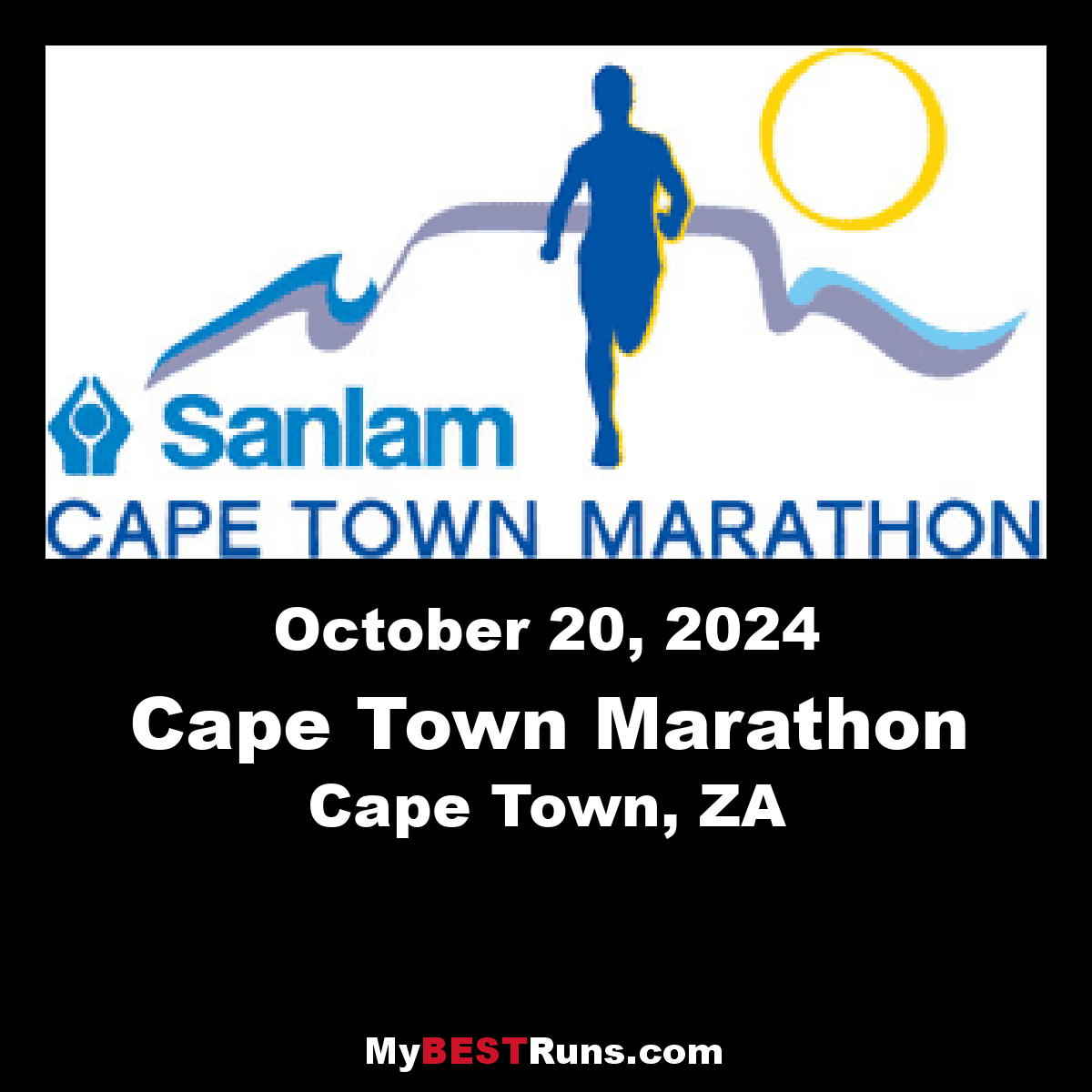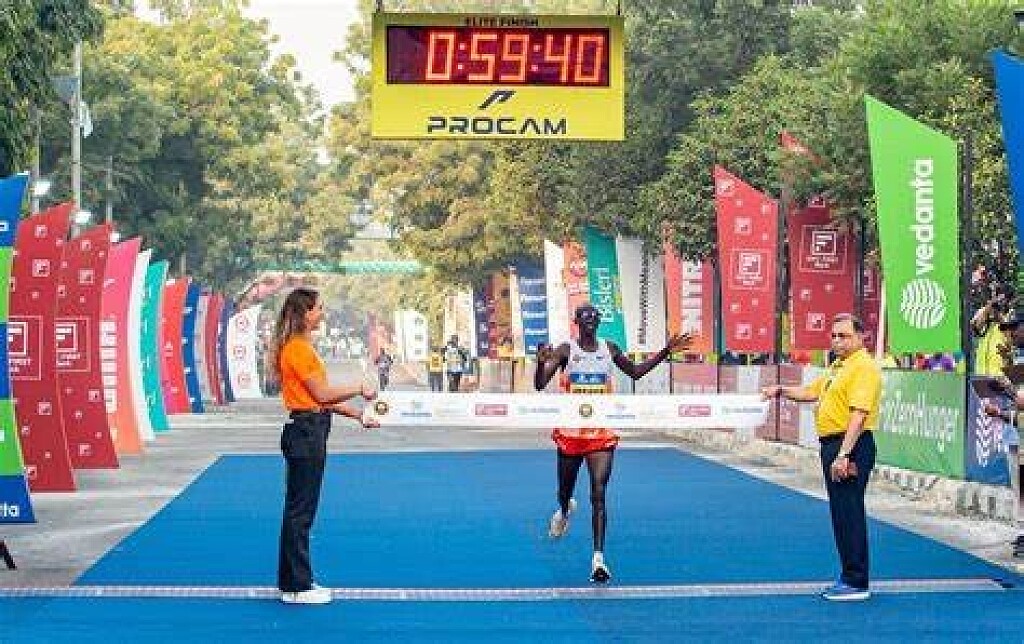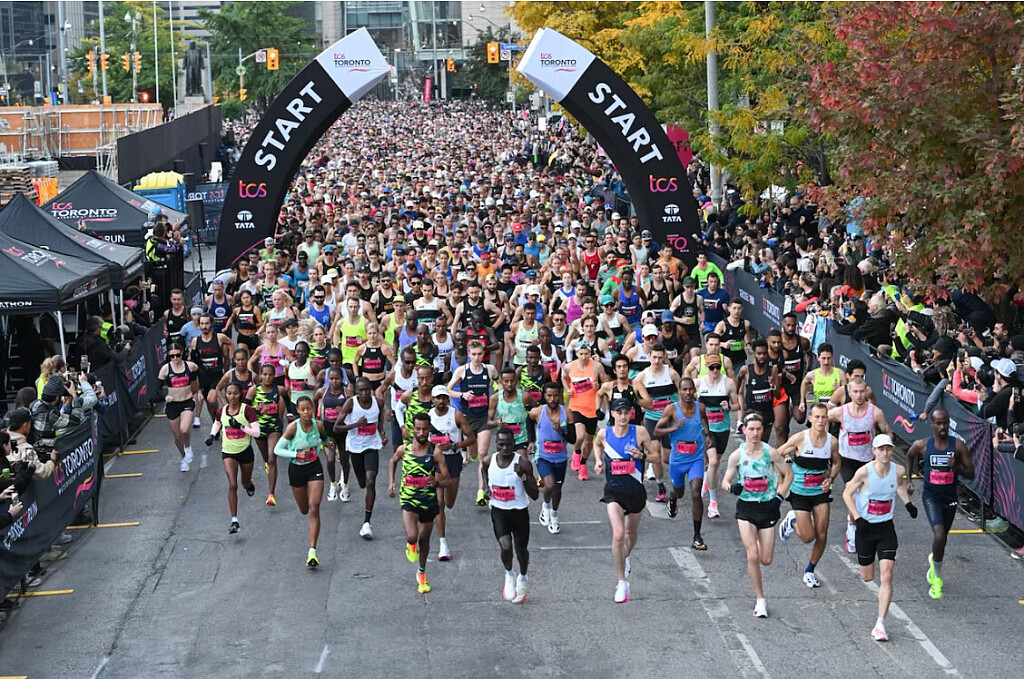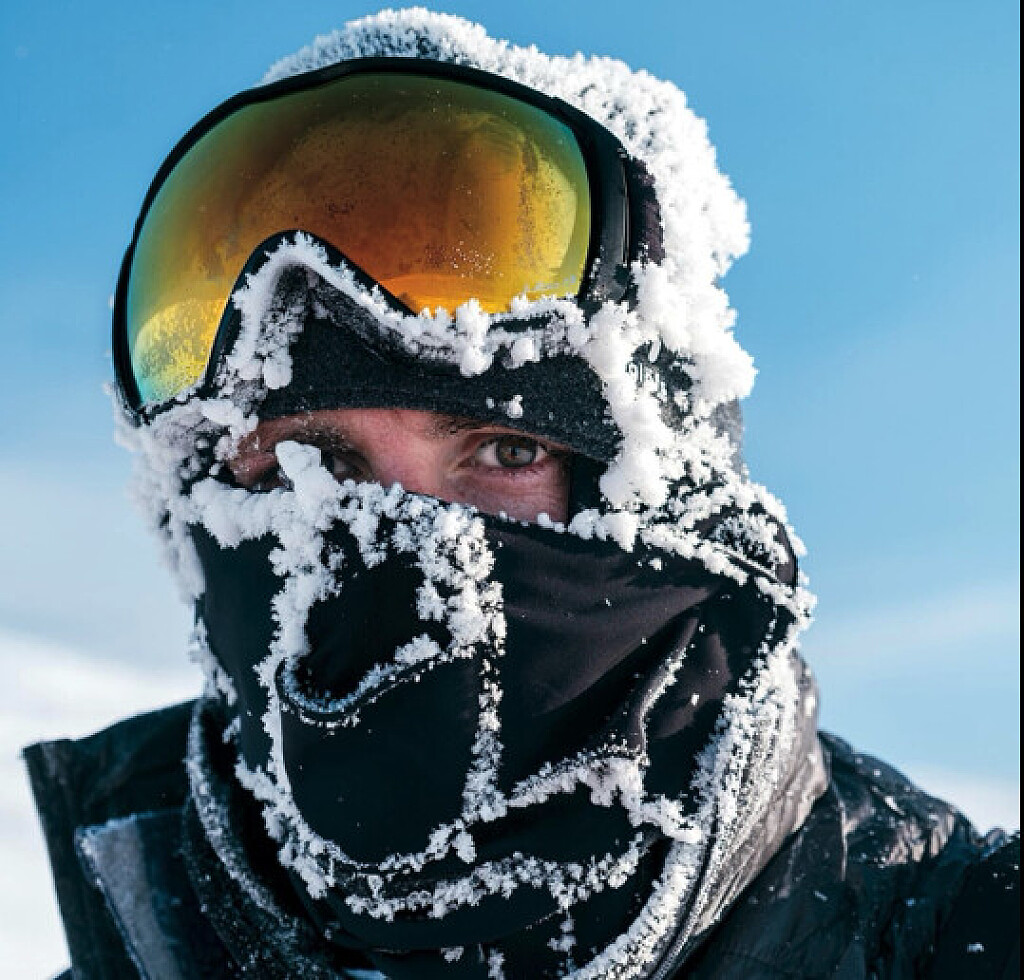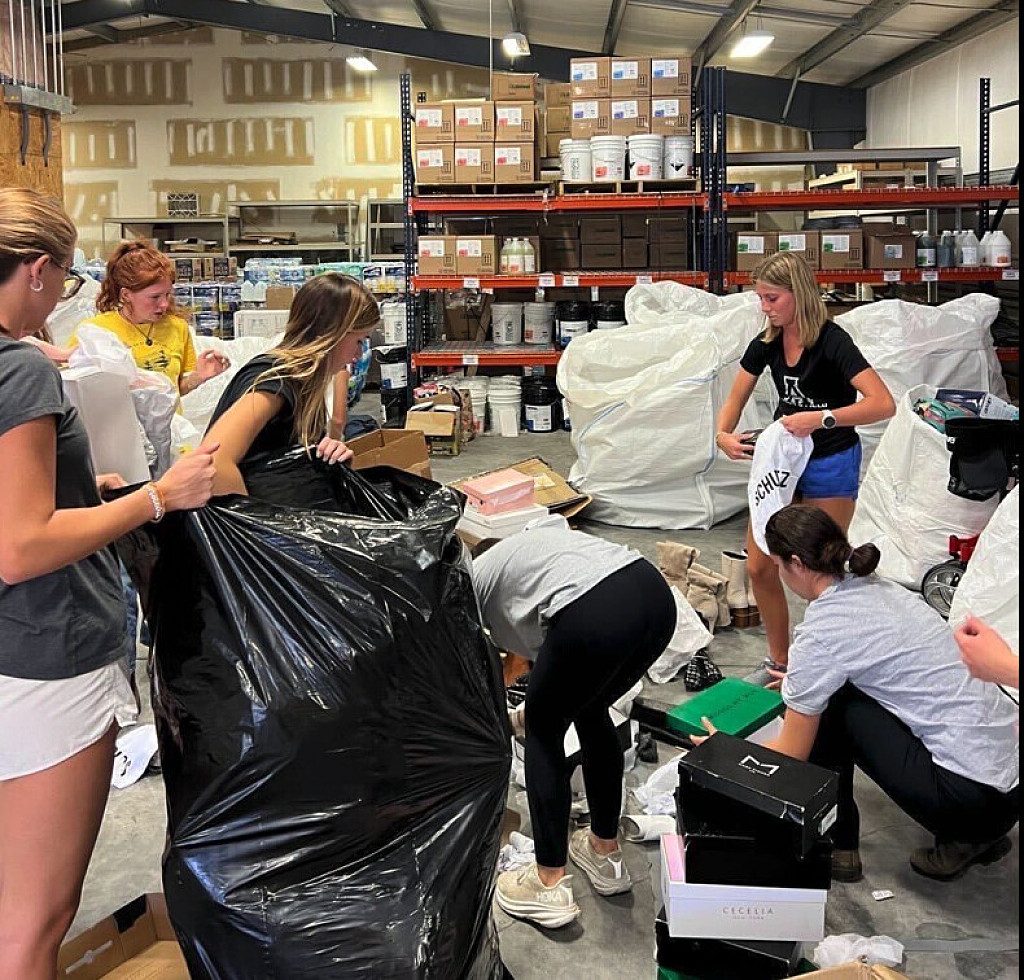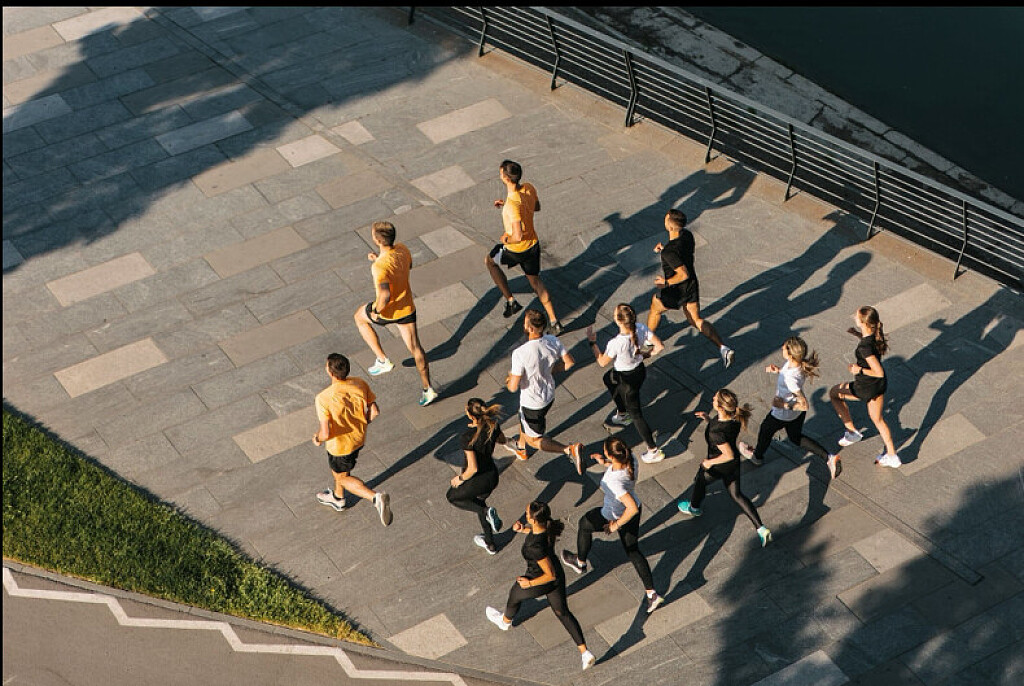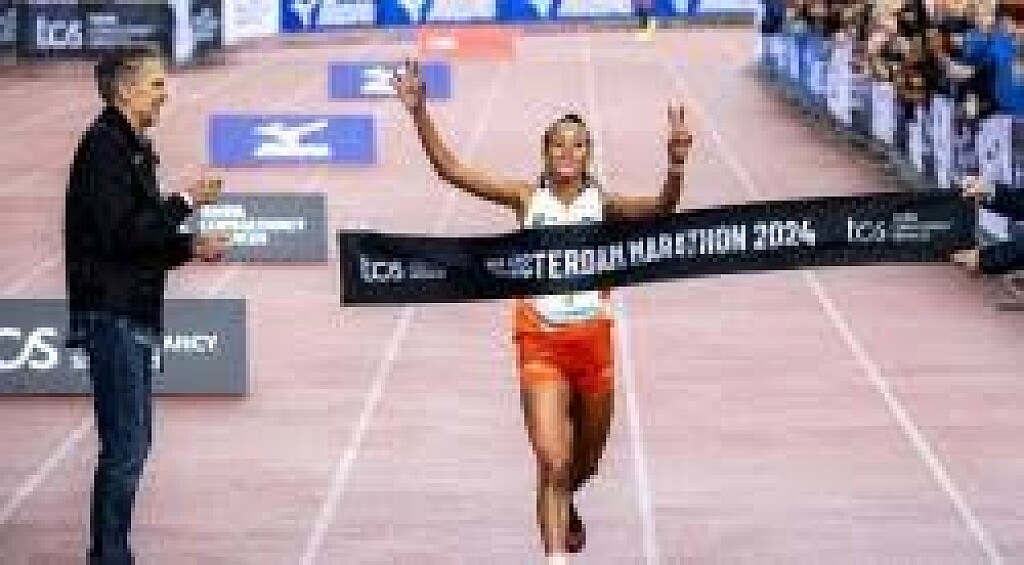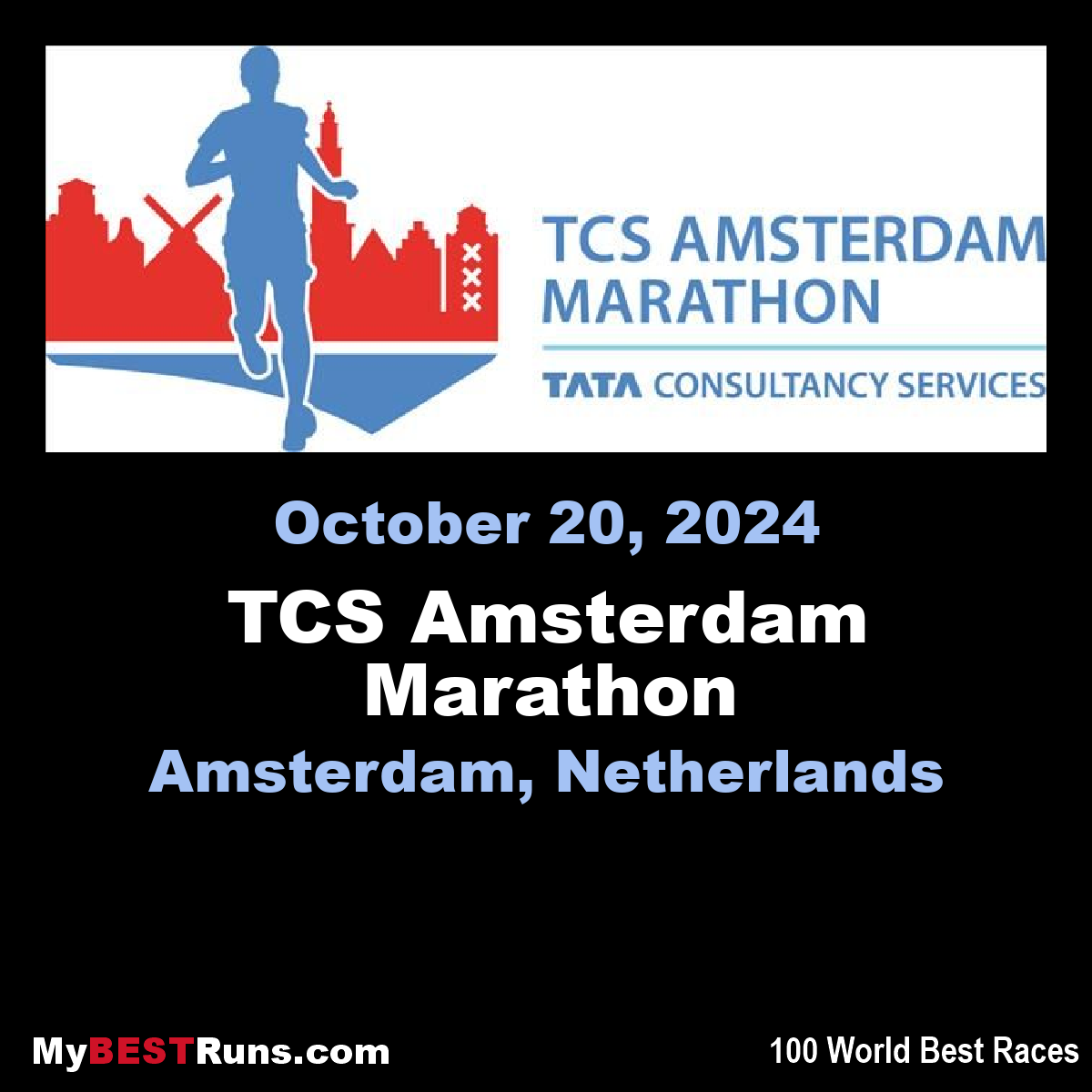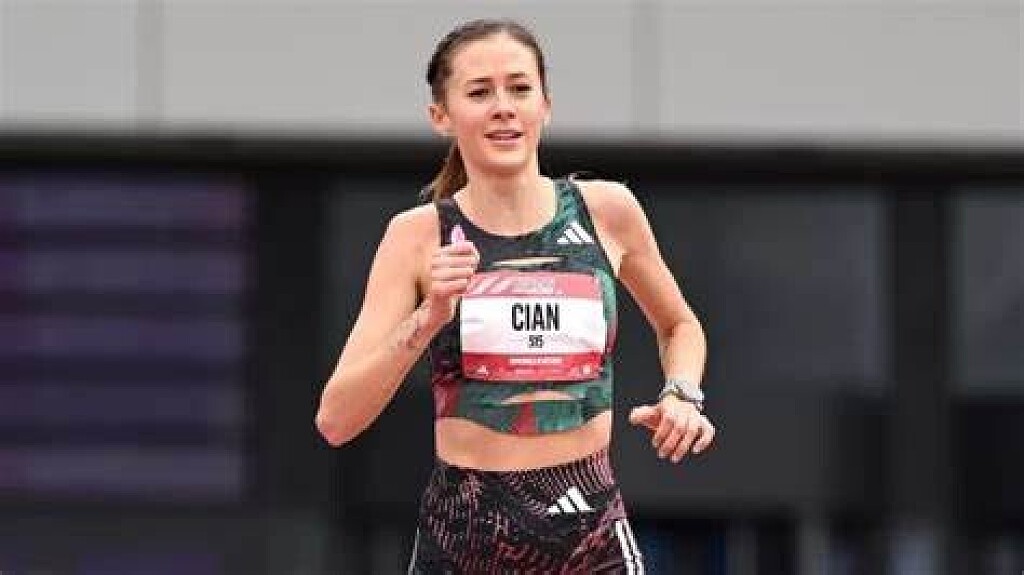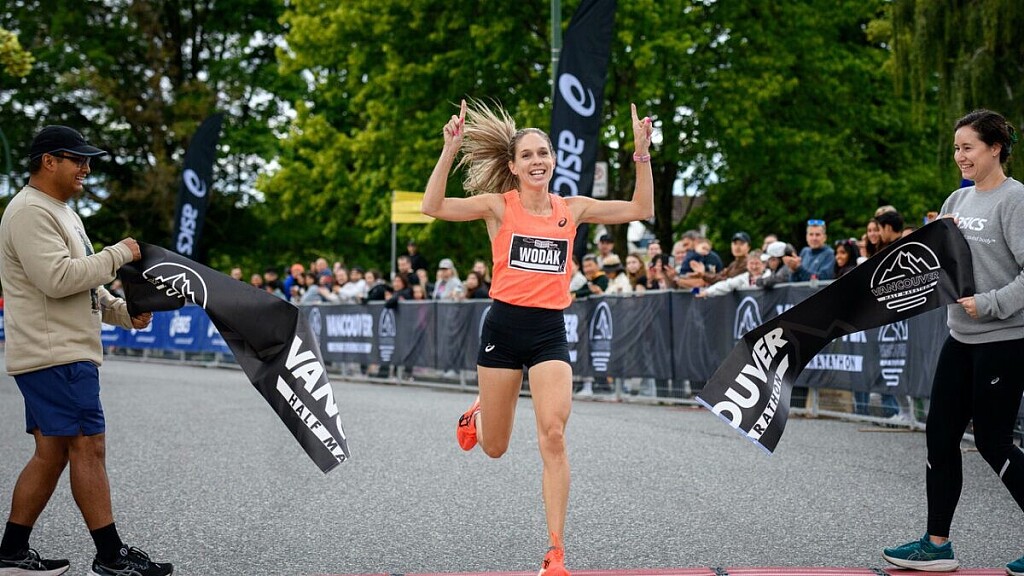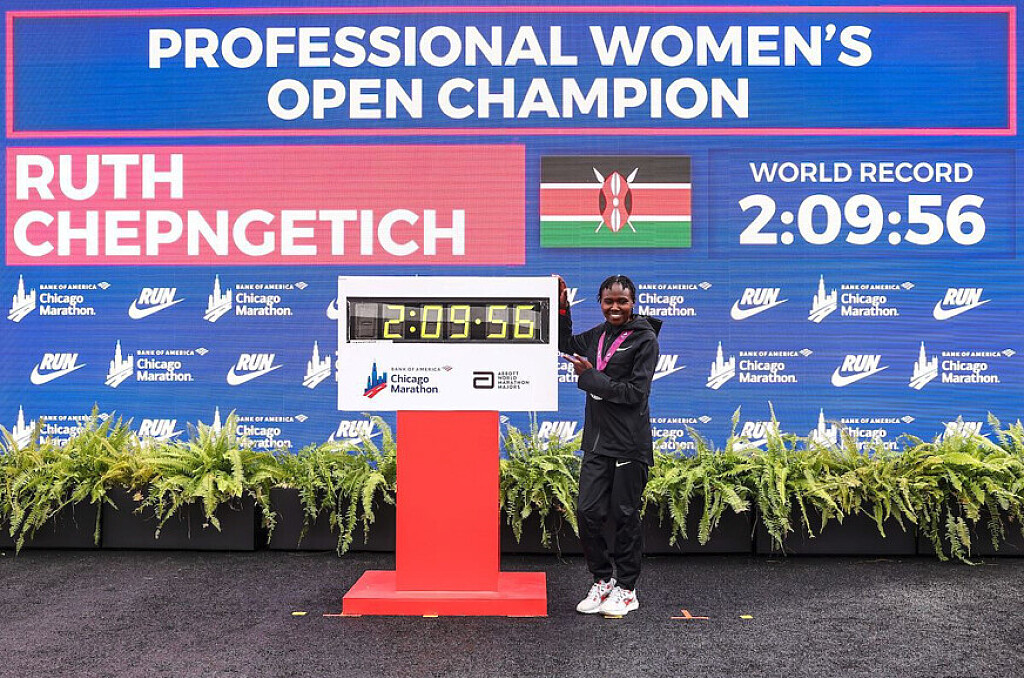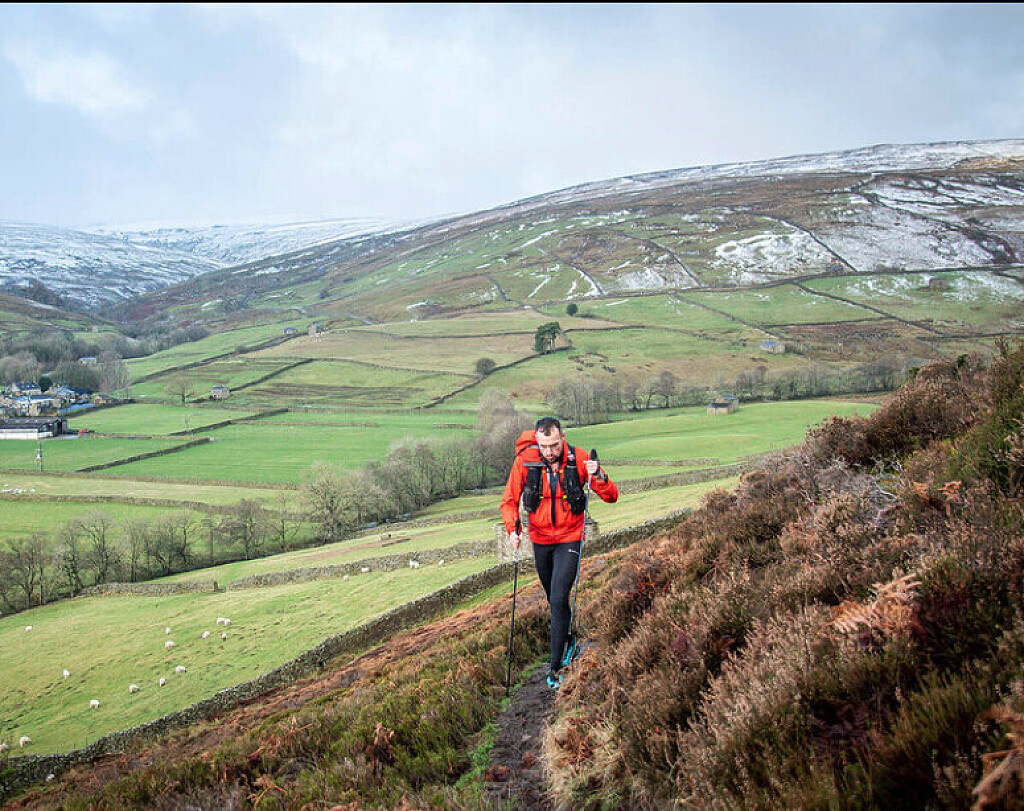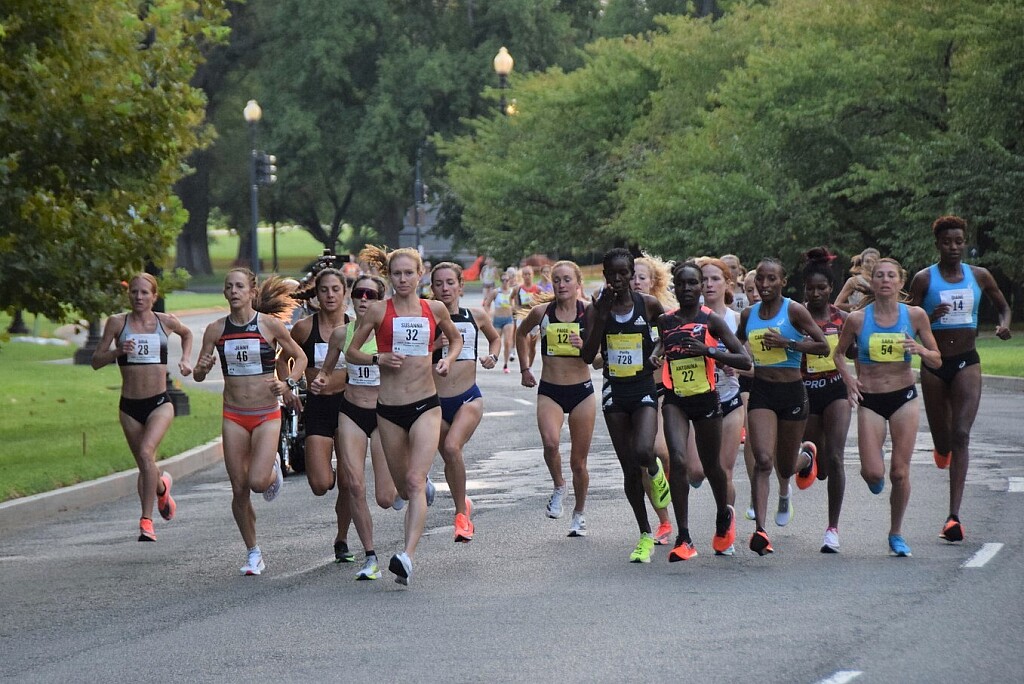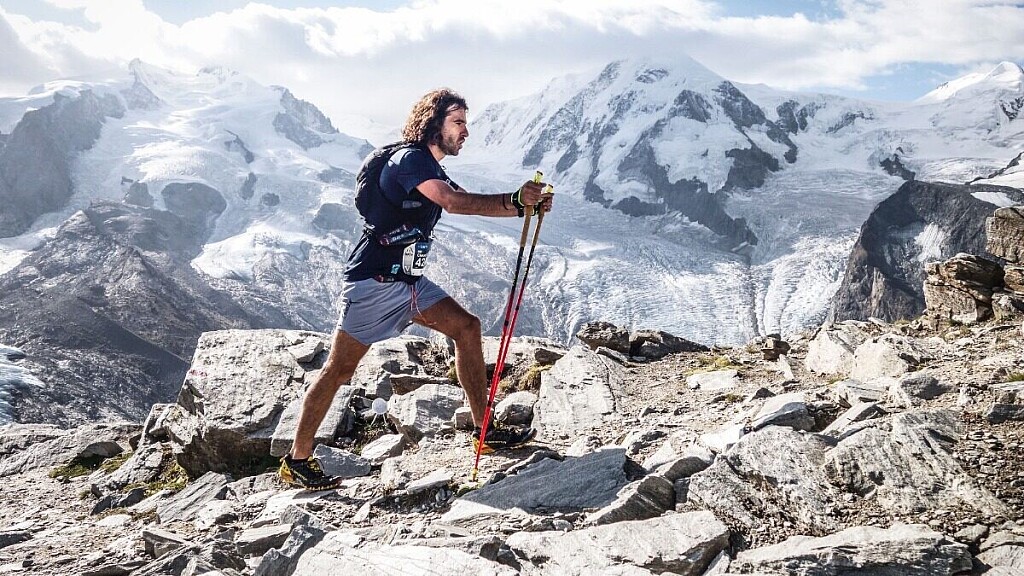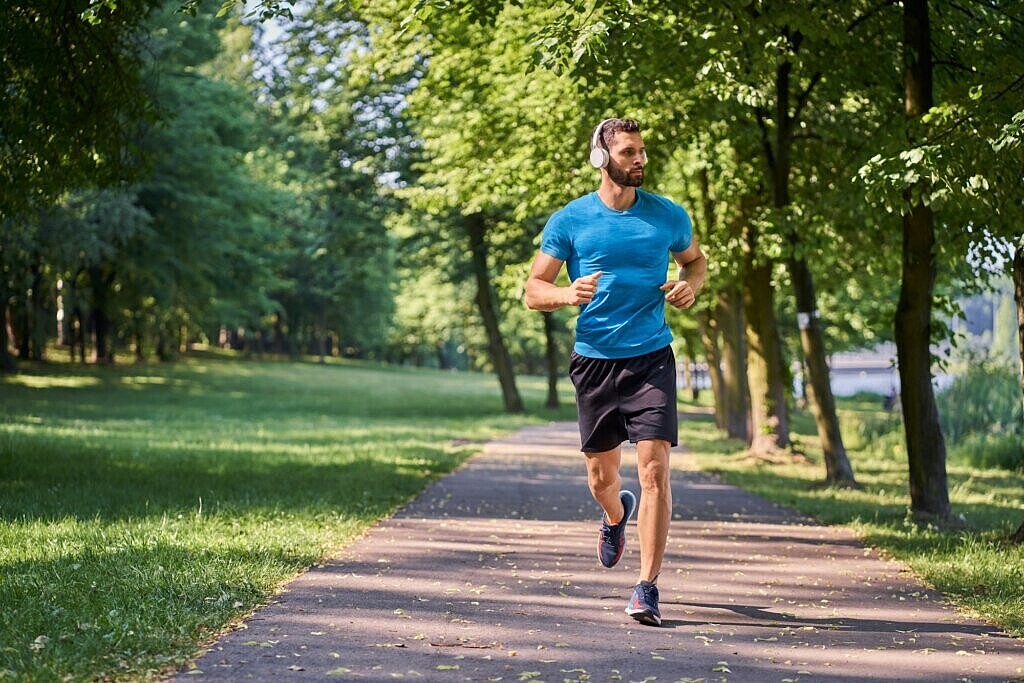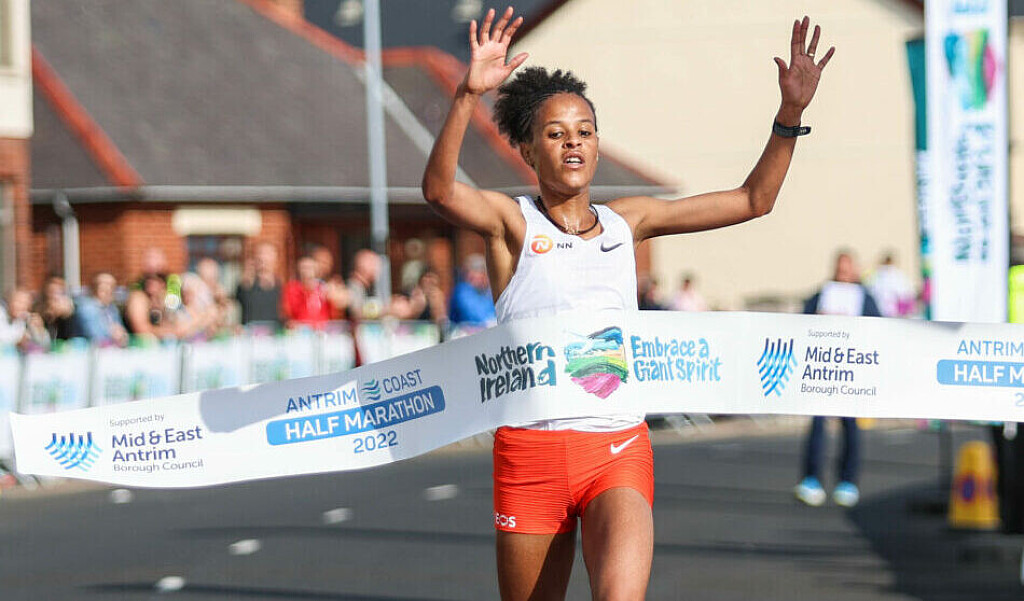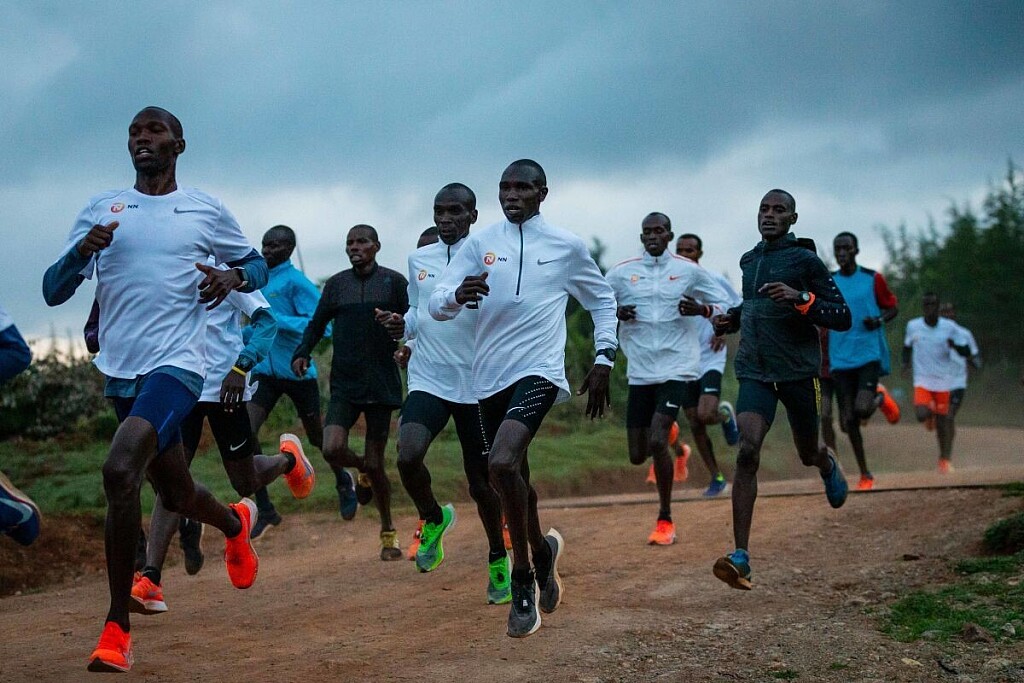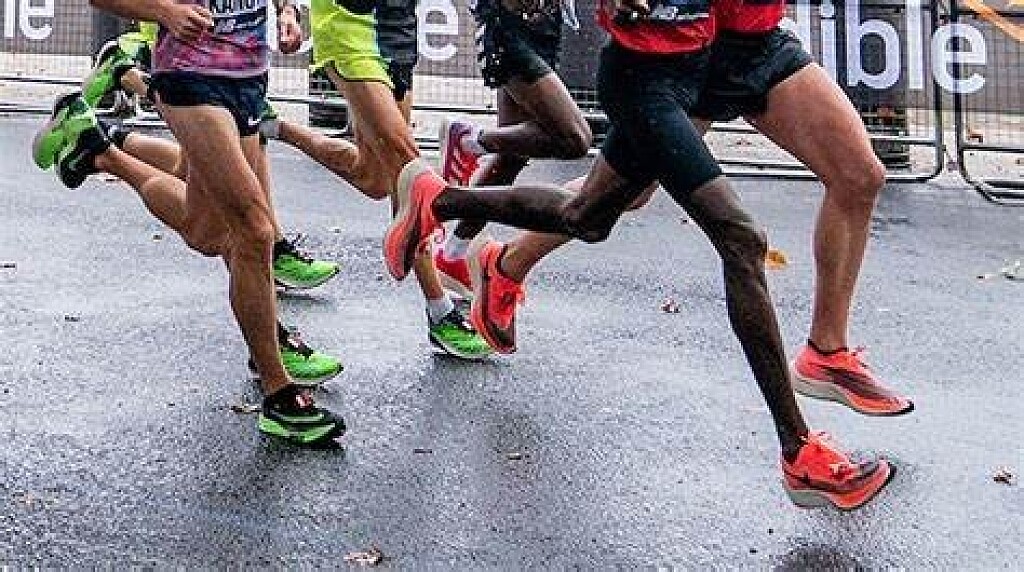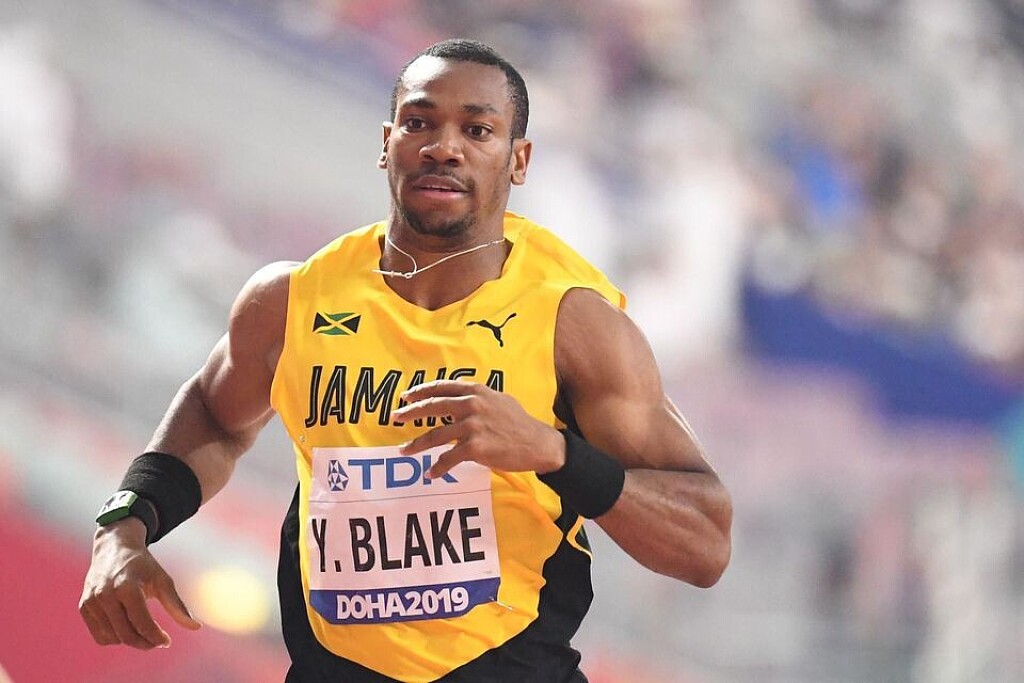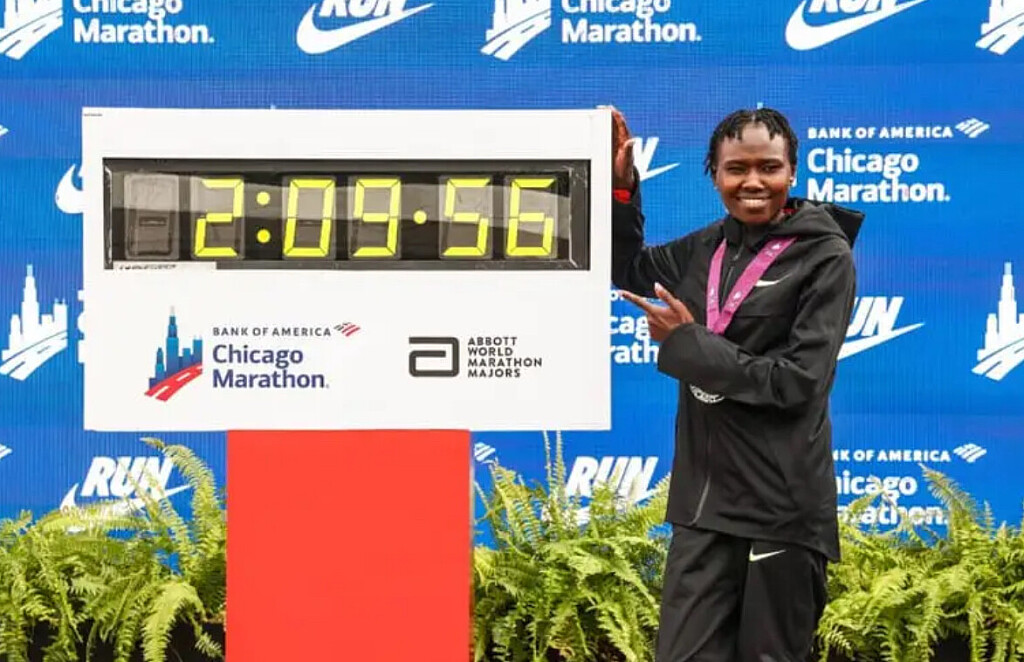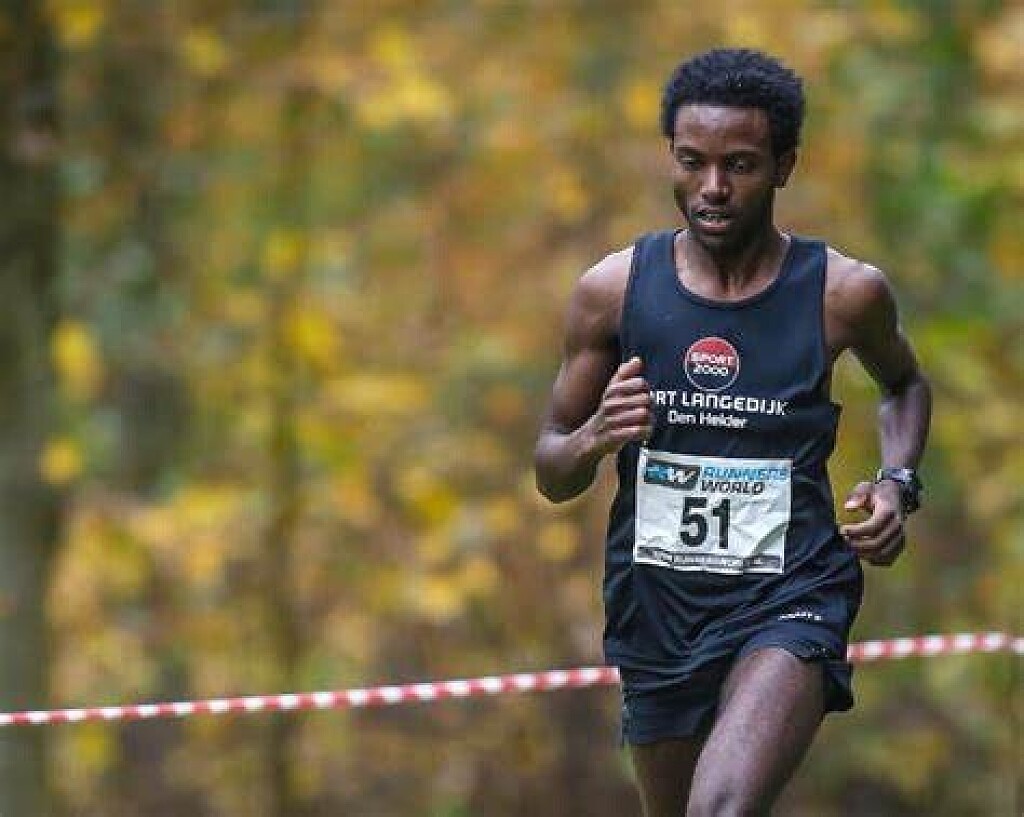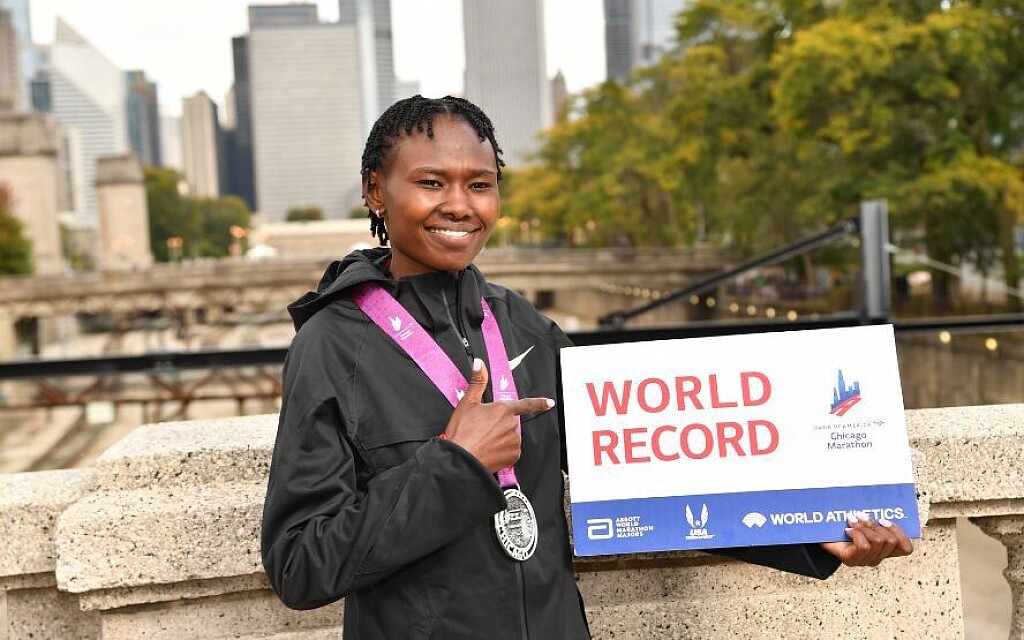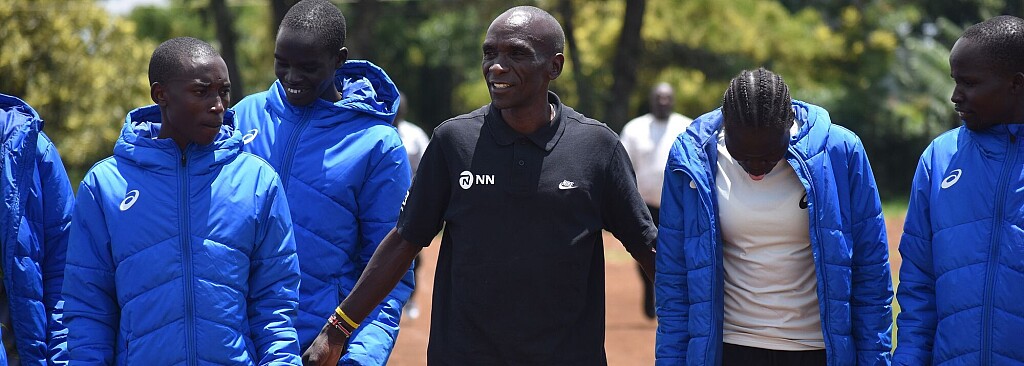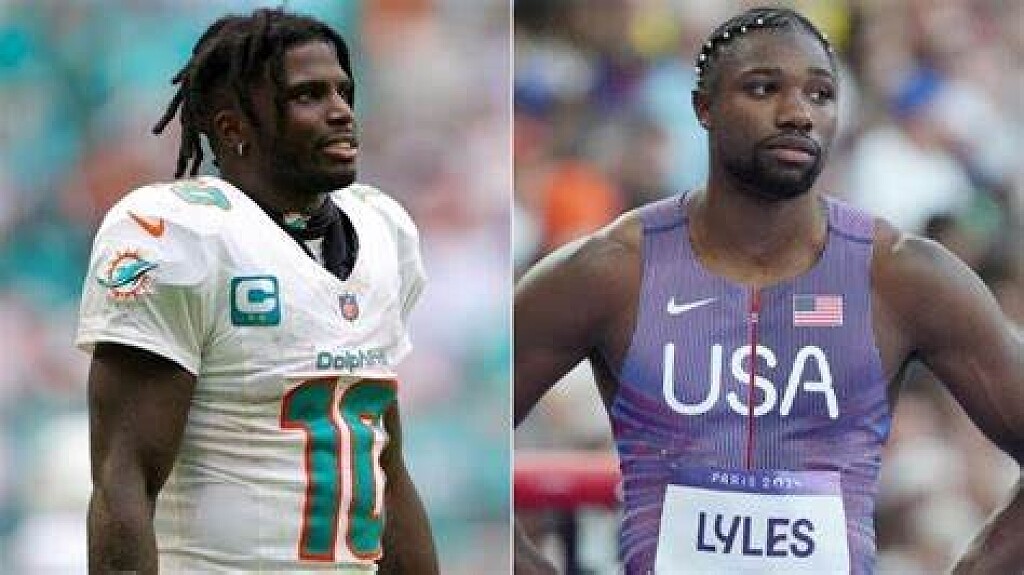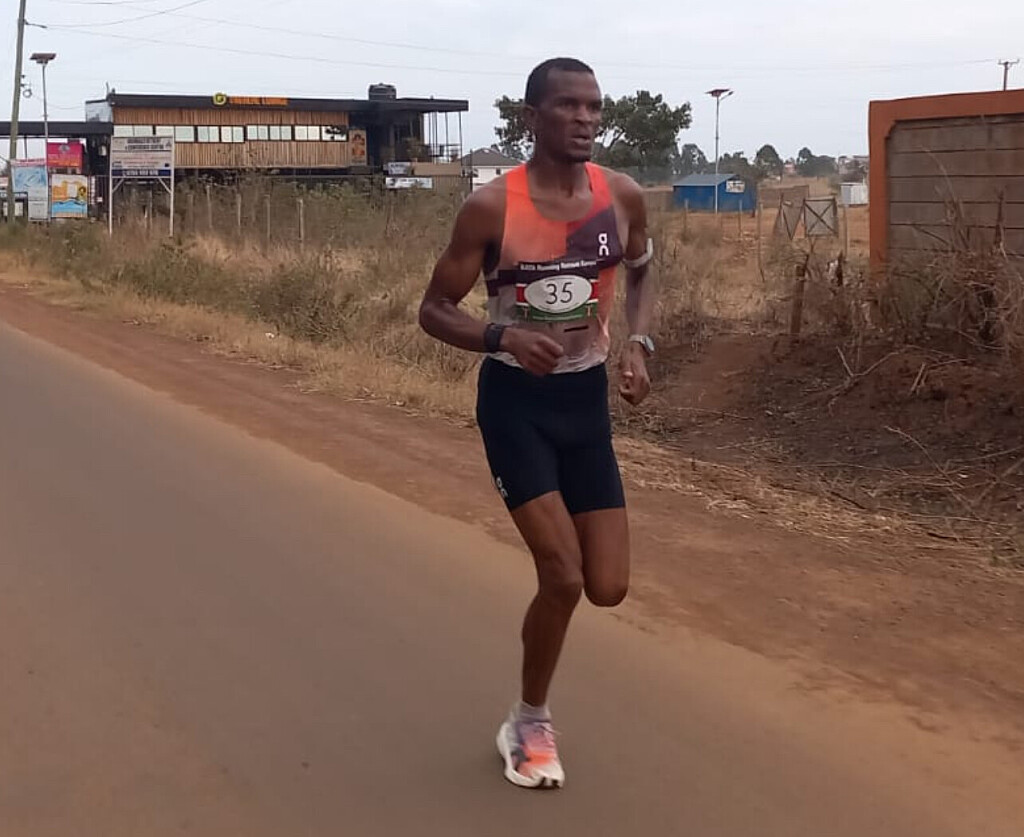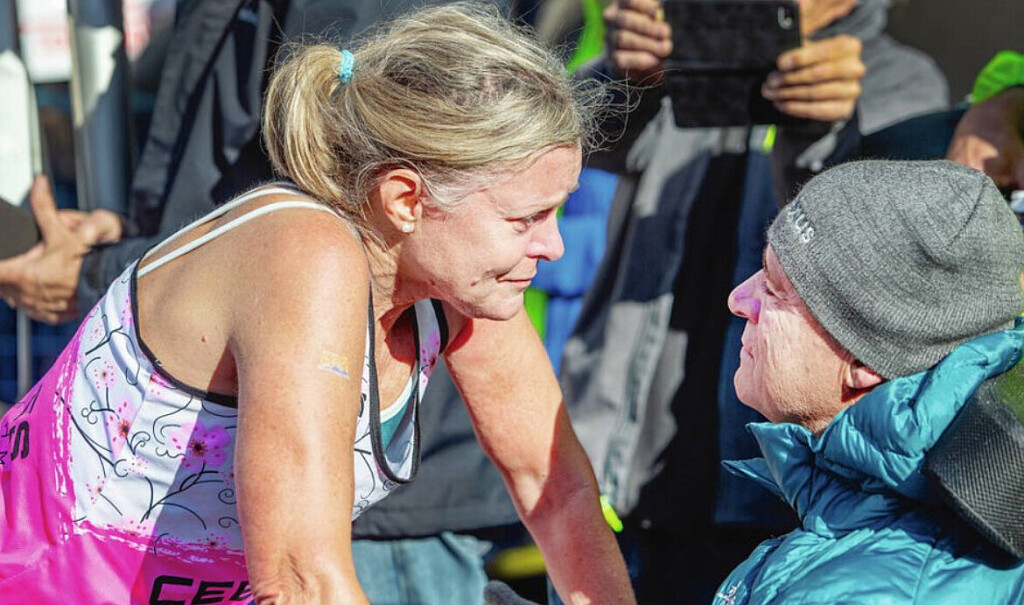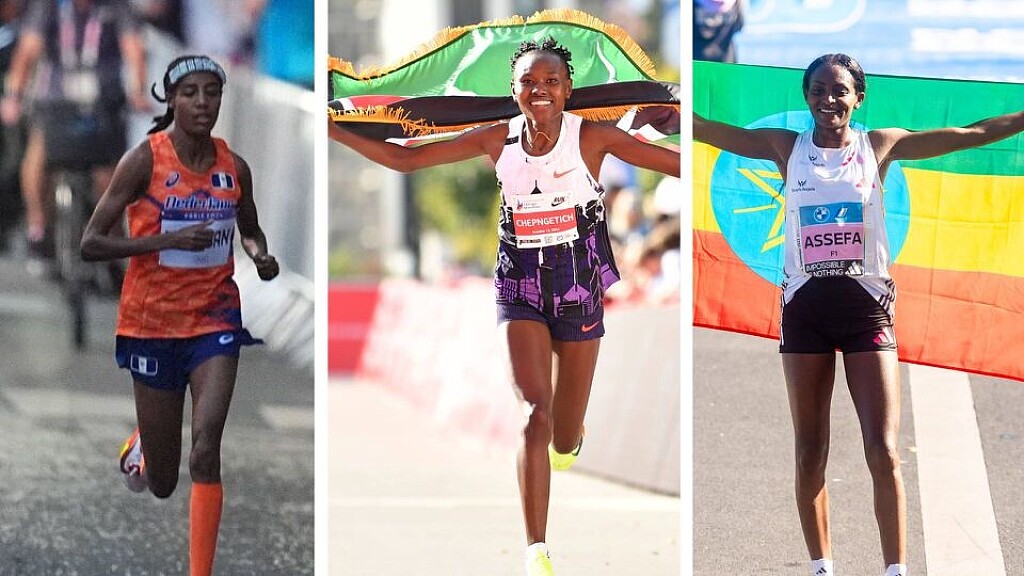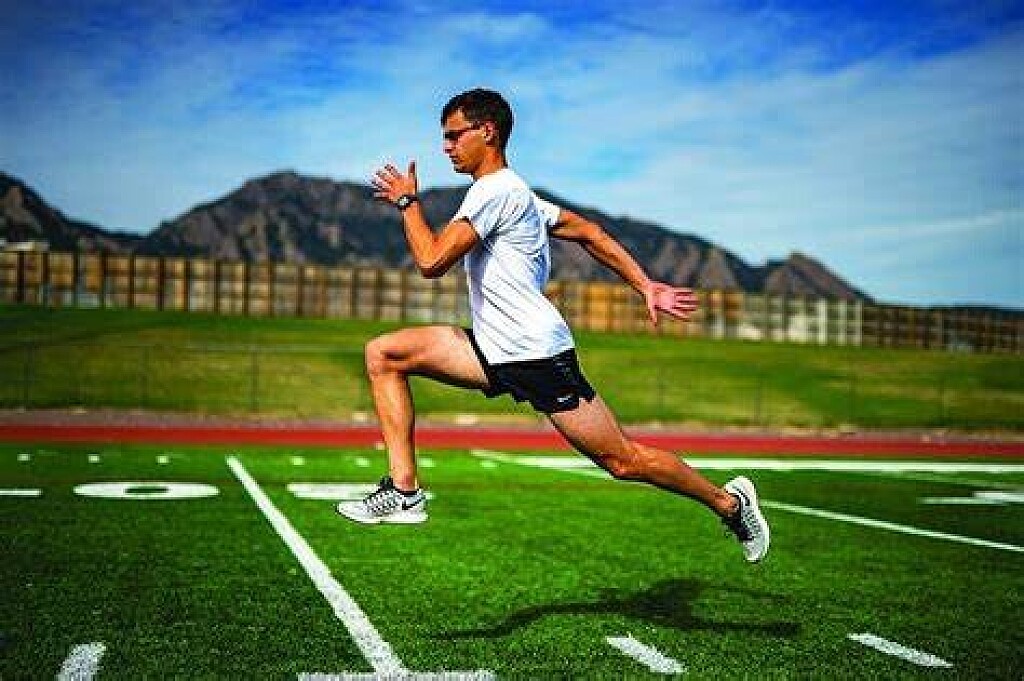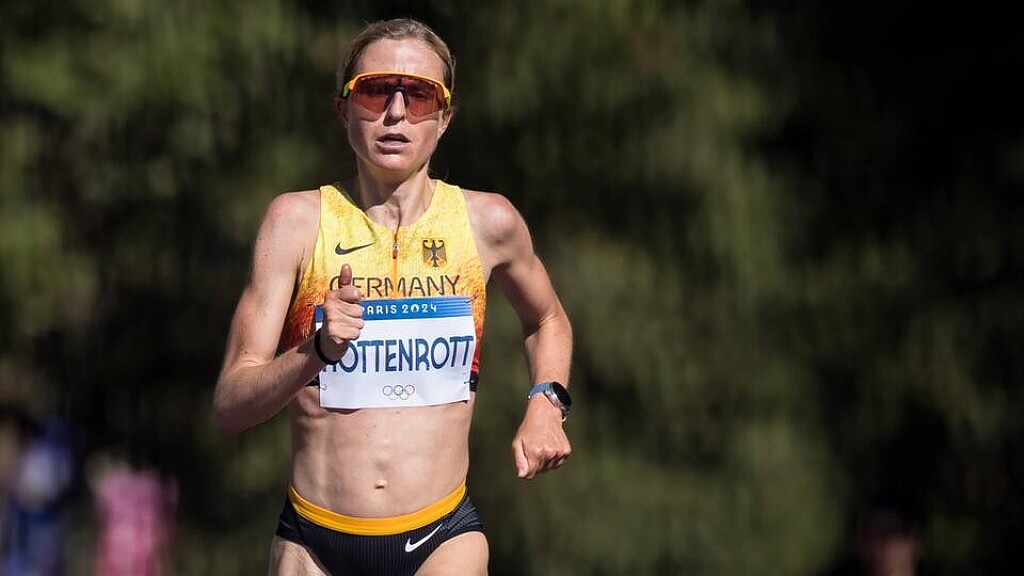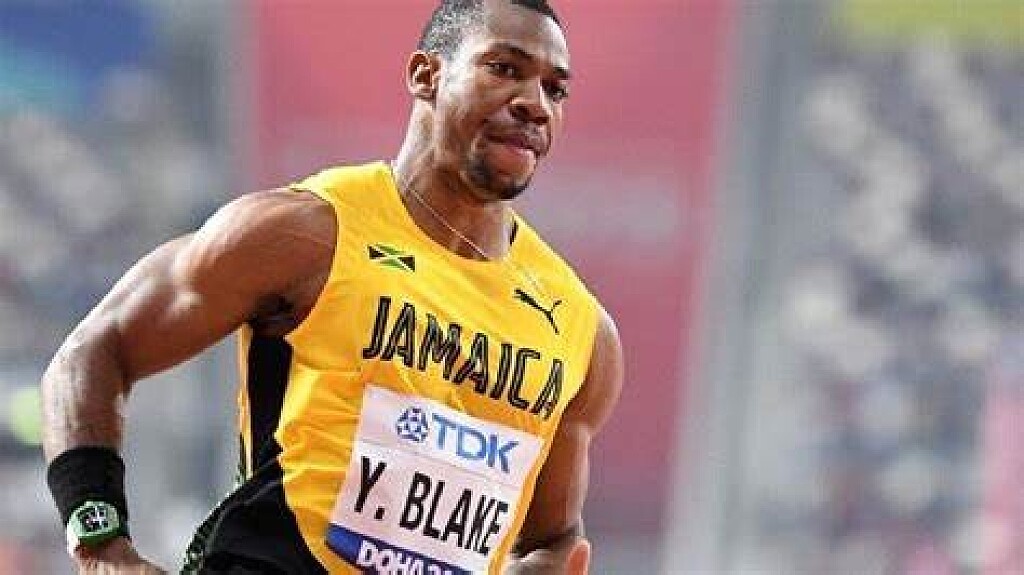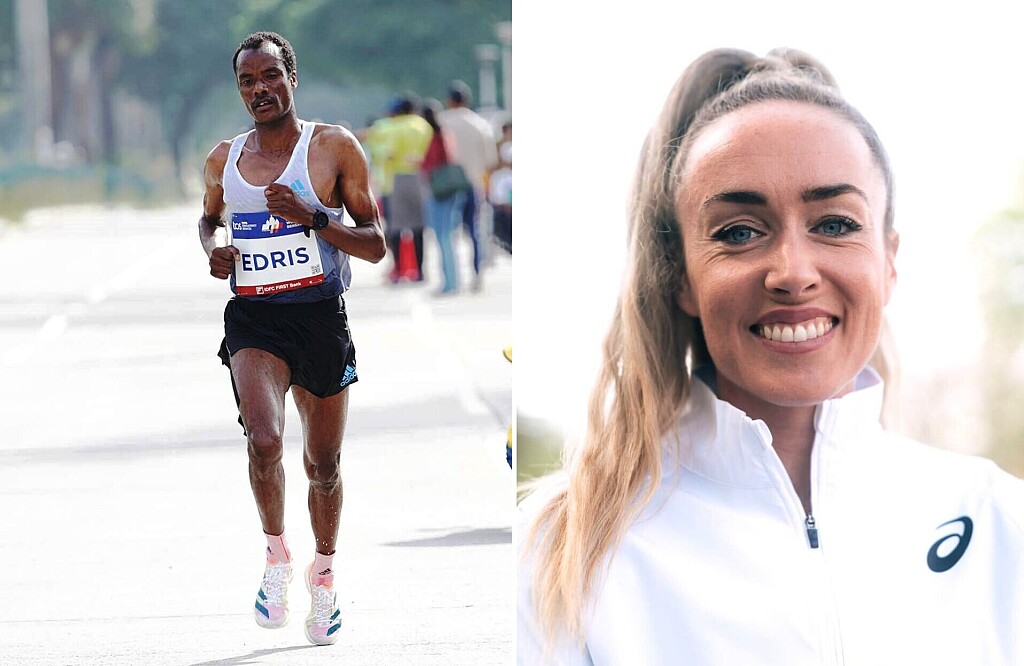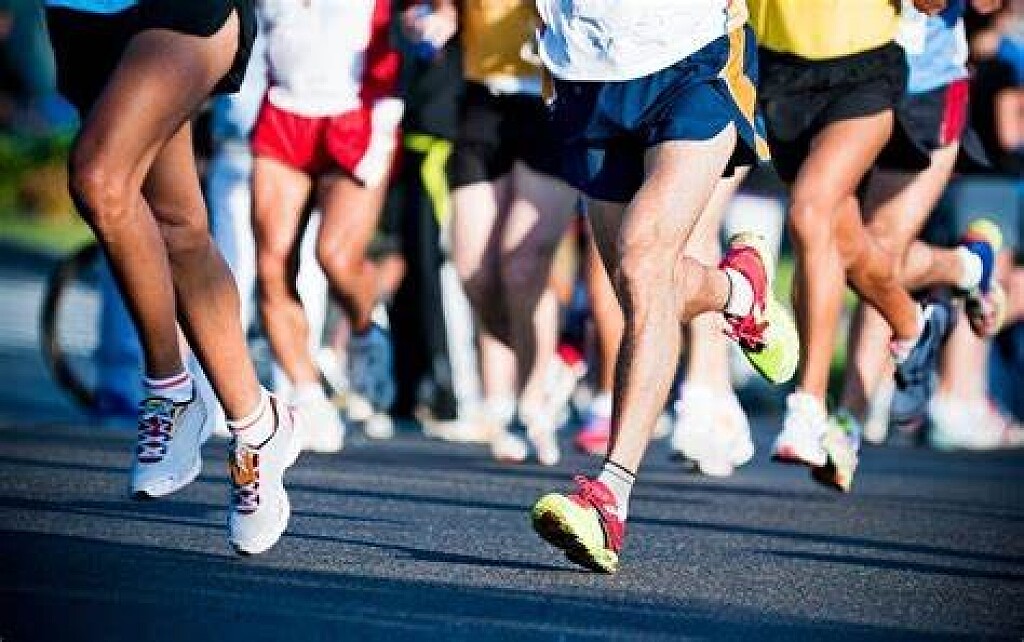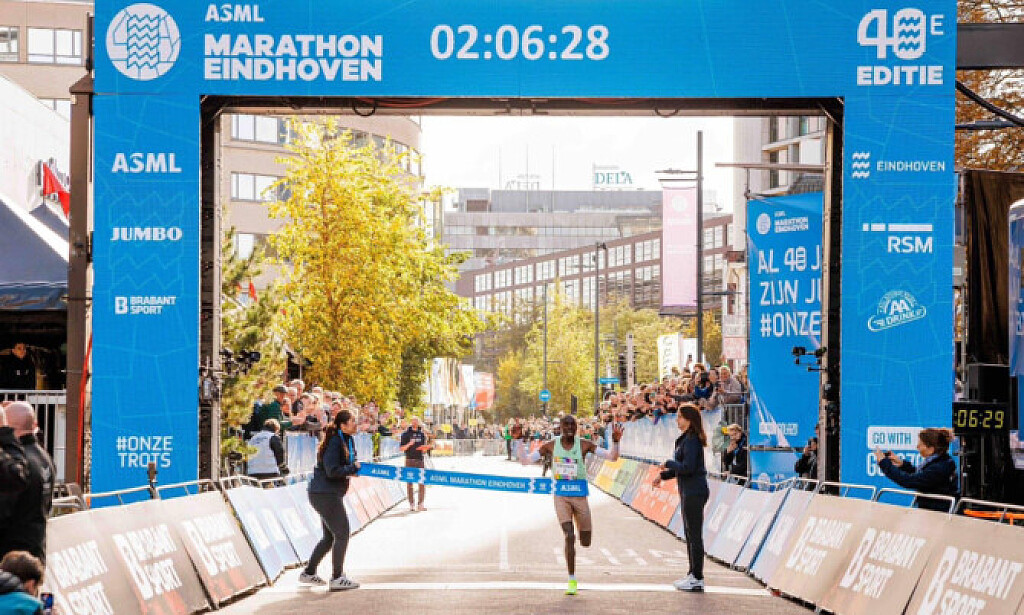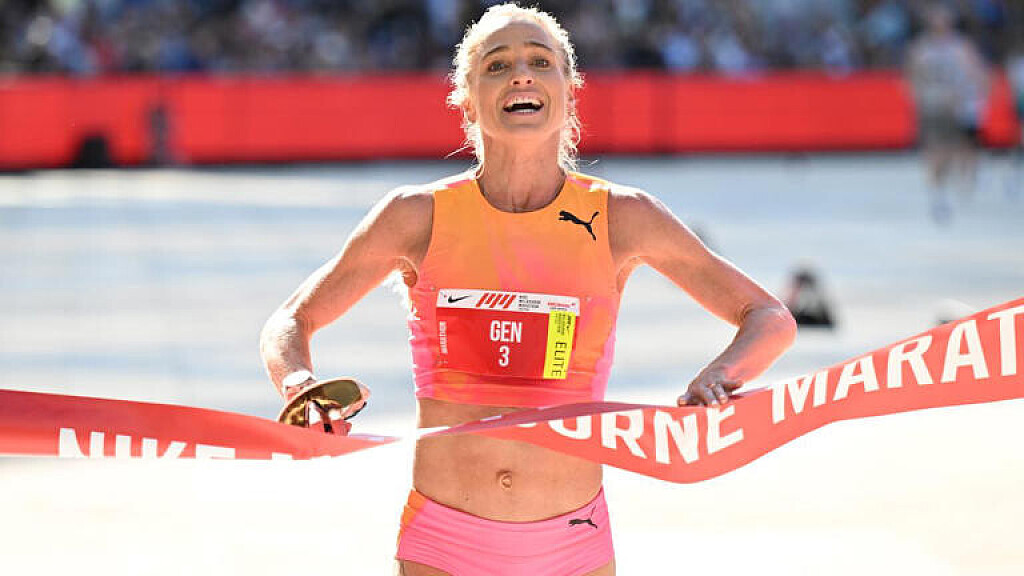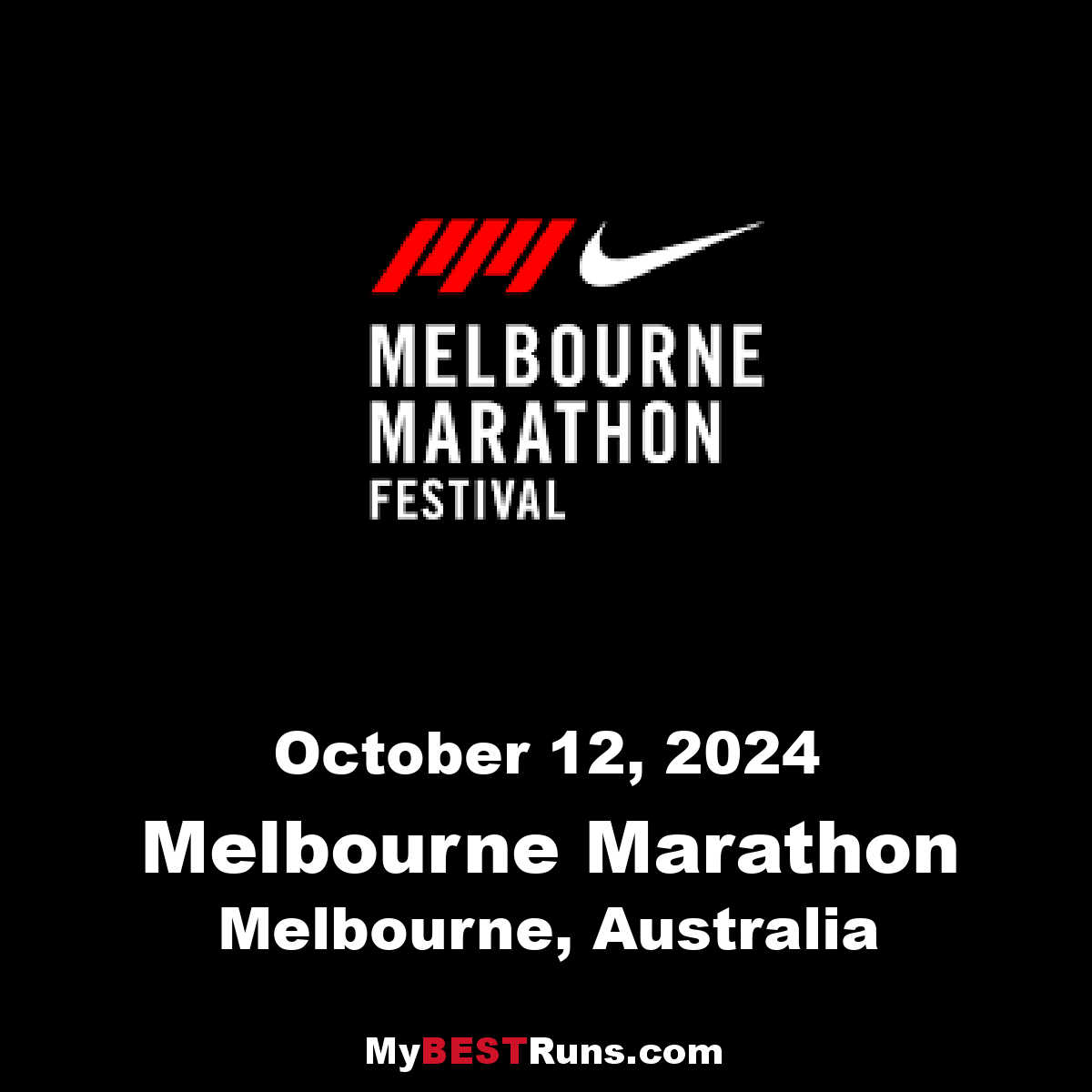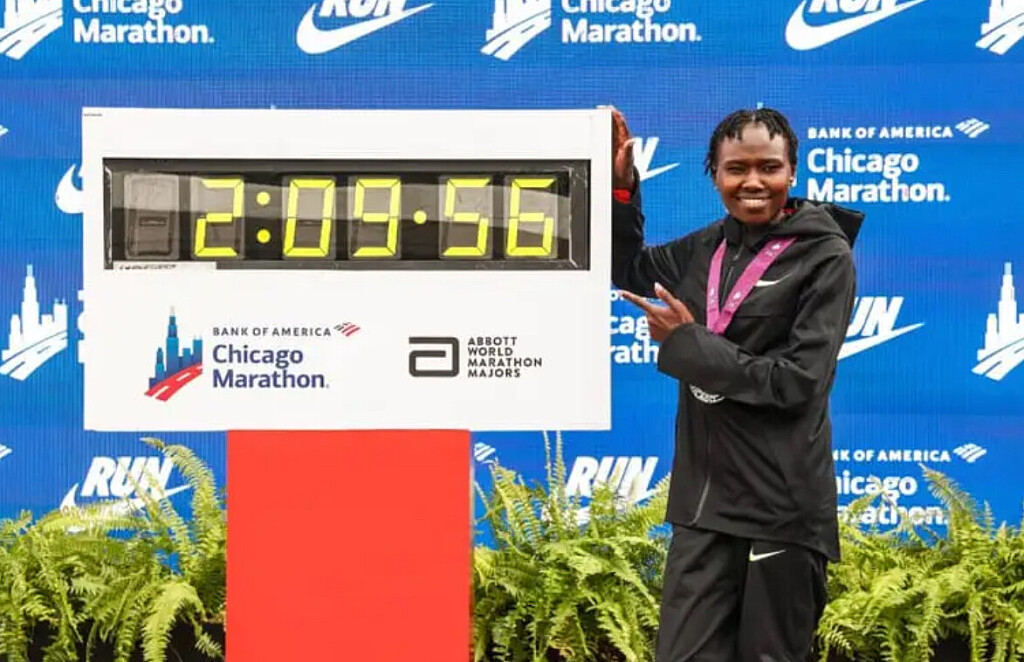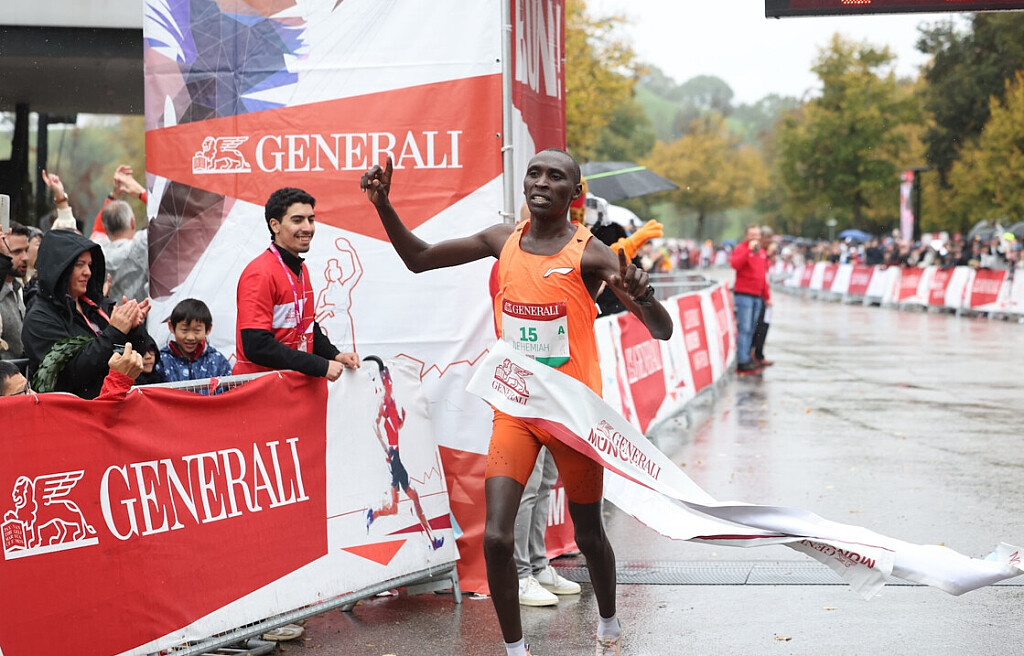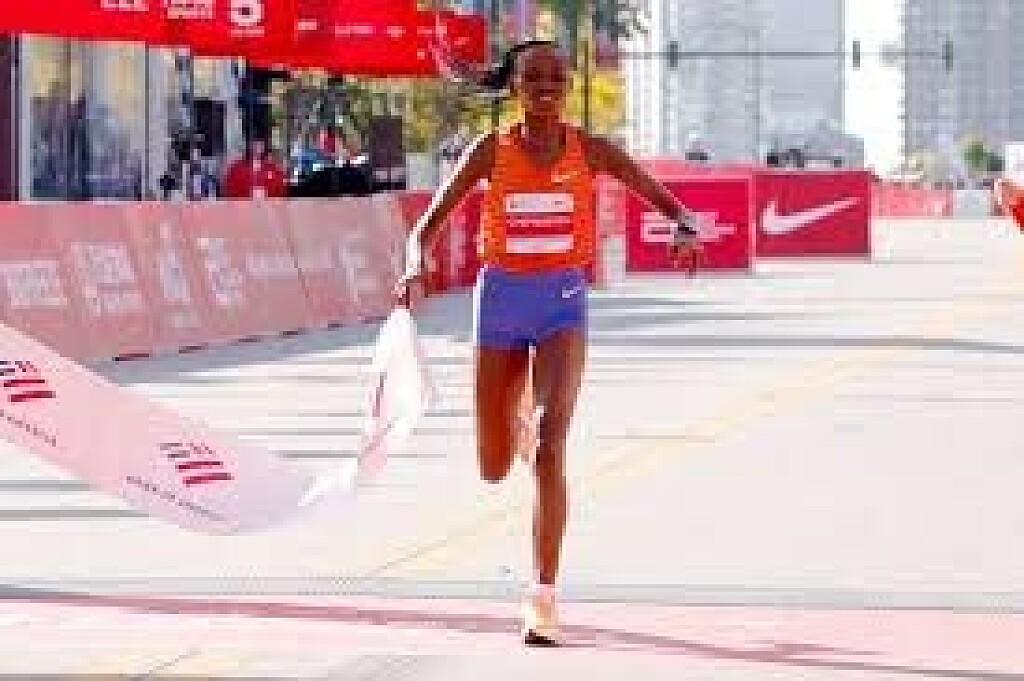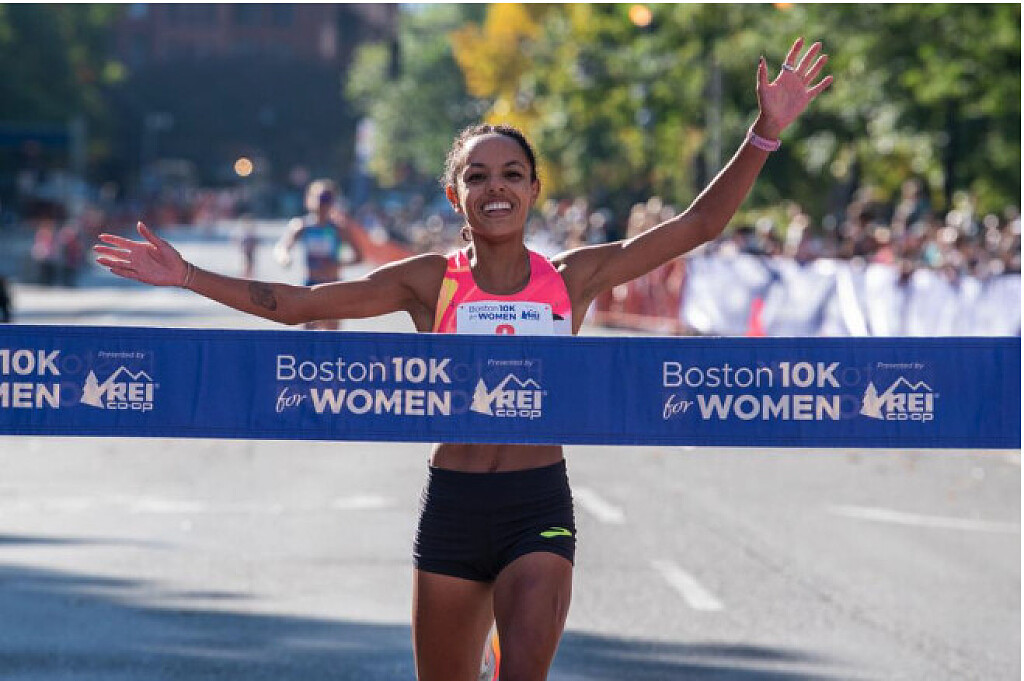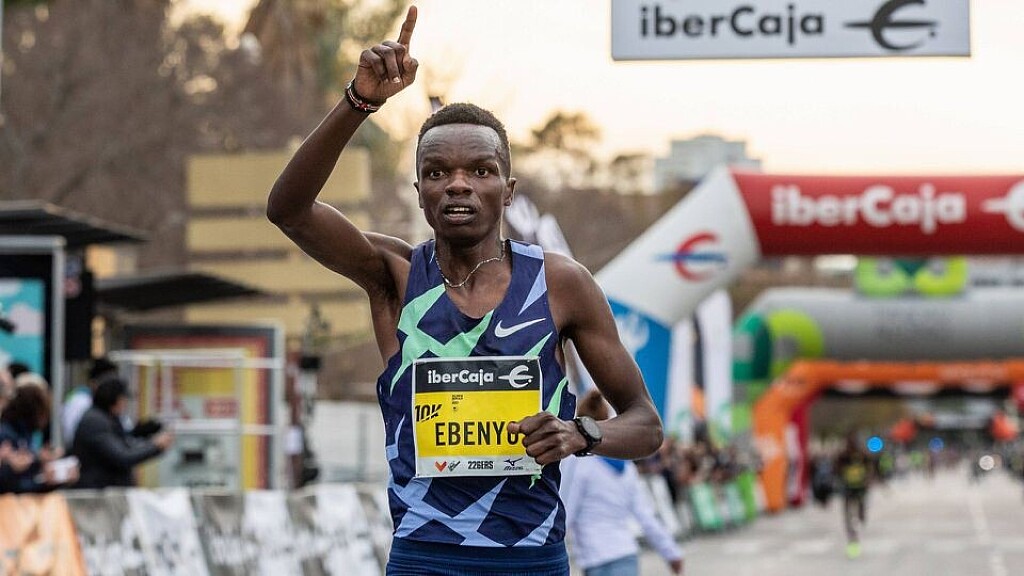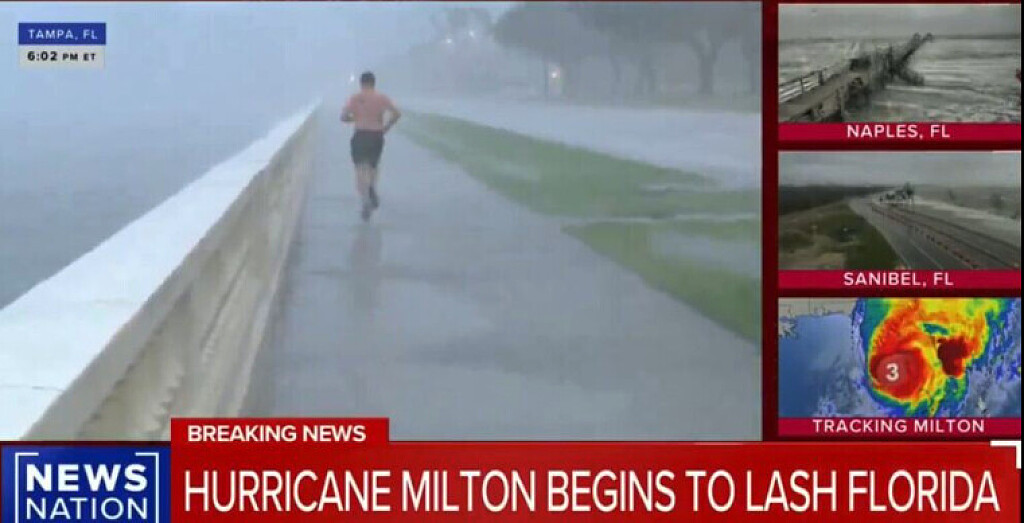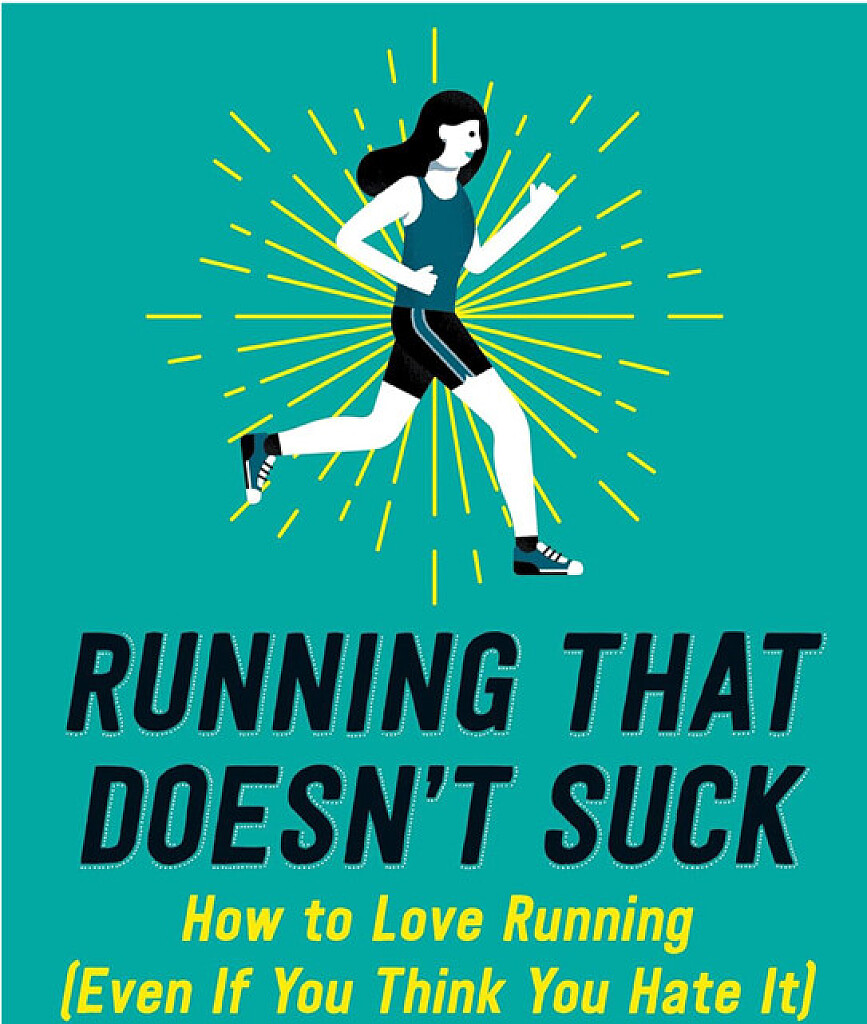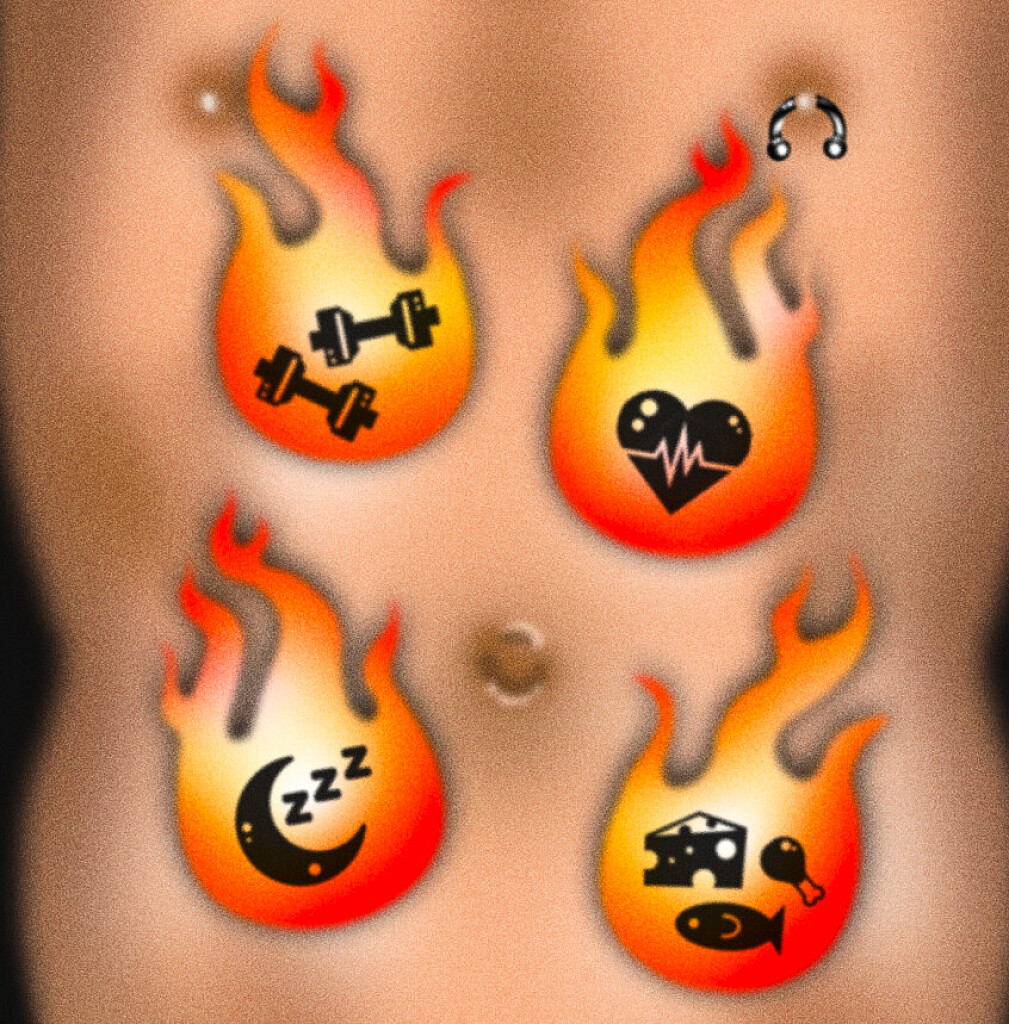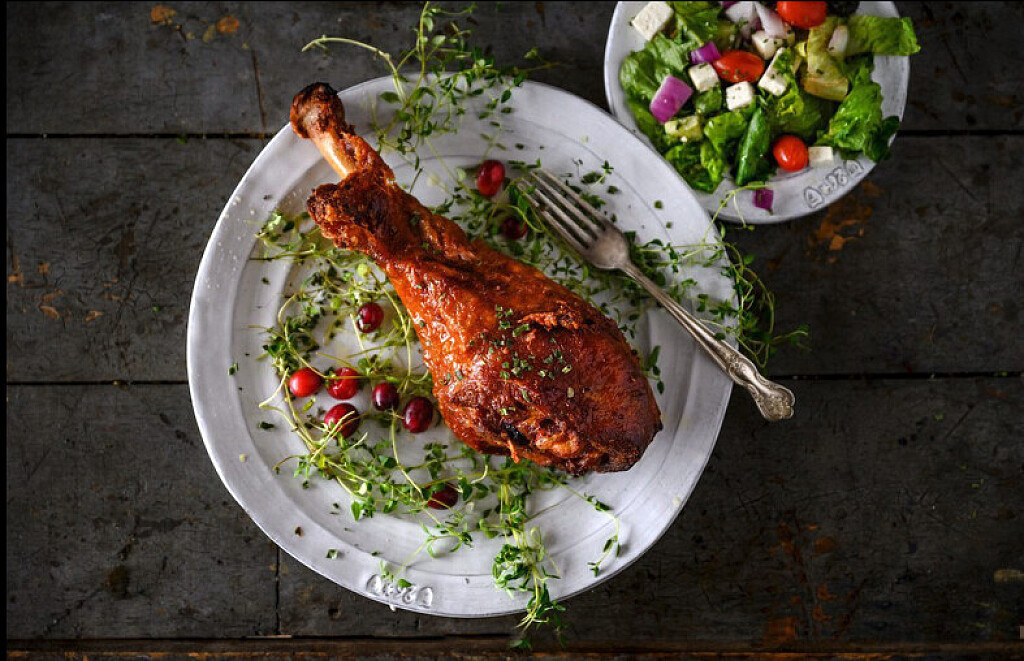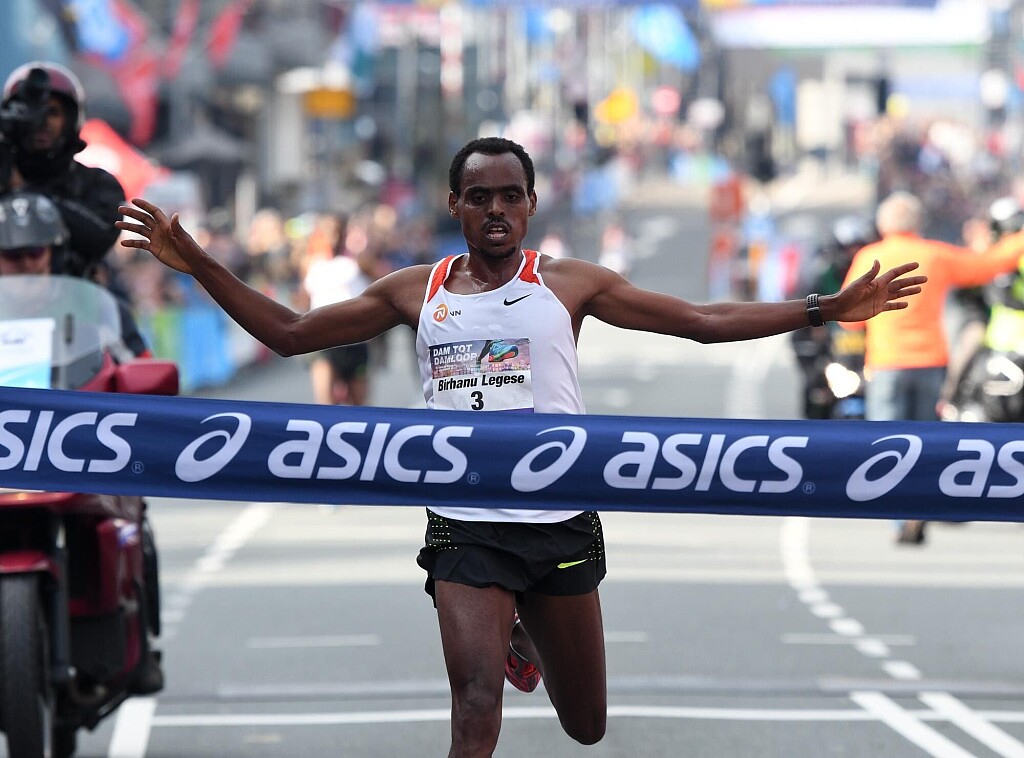Running News Daily
Running News Daily is edited by Bob Anderson in Los Altos California USA and team in Thika Kenya, La Piedad Mexico, Bend Oregon, Chandler Arizona and Monforte da Beira Portugal. Send your news items to bob@mybestruns.com Advertising opportunities available. Train the Kenyan Way at KATA Kenya. (Kenyan Athletics Training Academy) in Thika Kenya. KATA Portugal at Anderson Manor Retreat in central portugal. Learn more about Bob Anderson, MBR publisher and KATA director/owner, take a look at A Long Run the movie covering Bob's 50 race challenge.
Index to Daily Posts · Sign Up For Updates · Run The World Feed
Andrew Bowman wins Detroit Free Press Marathon men's race; then greets his triumphant wife
Andrew Bowman said it was all part of the master plan.
The 30-year-old from Ferndale held up his end of the deal when he captured the men’s title with a time of 2 hours, 17 minutes and 47 seconds in Sunday’s 47th Detroit Free Press Marathon presented by MSU Federal Credit Union.
And just 25 minutes later, he was waiting at the finish line with a big hug and embrace of his wife, Sydney Devore-Bowman, who captured the women’s title with a 26.2-mile clocking of 2:42:46.
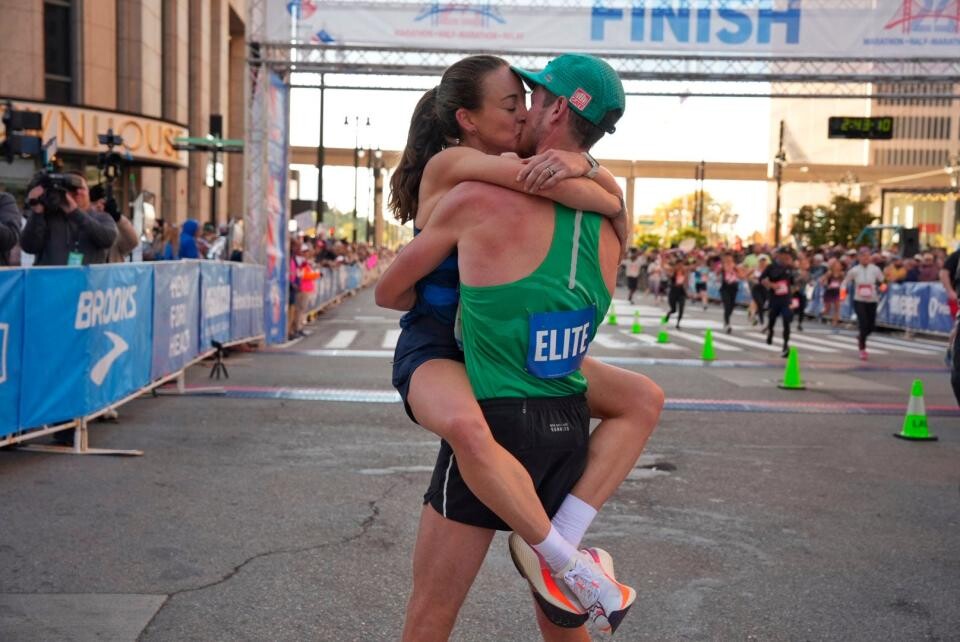
Both had previously won marathons at Pittsburgh, Sydney in 2018 and Andrew on May 5 of this year, but this was a first time to celebrate together in their burgeoning long-distance running careers.
Good weather, but unwelcome wind at the end
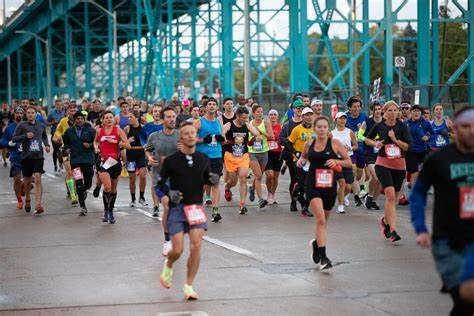
“The motivation with Pitt is where she had won it,” said Andrew, a running coach and personal trainer. “That’s where her marathon career took off and she’s the one that got me into marathon running. And she was like, ‘This could be a shared moment for us.’ And I’m so grateful for that. It’s another moment to share in this thing that we’re passionate about — all the highs and the lows. And it’s just a good reminder, we have this common interest, but even coming into this with all the nerves, we just kept looking at each other and we’re like, ‘Even if we don’t pull it off, I still love you and I’m still grateful to be on this journey with you and to enjoy this moment.’ ”
The race was run under nearly ideal conditions, low 40s at the start and winds up to 11 mph on the international course that crossed both the Ambassador Bridge and Detroit-Windsor Tunnel. The route also featured Detroit neighborhoods, including Woodbridge and Indian Village, passing through the Eastern Market and along the Dequindre Cut before ending at Campus Martius.
“The wind was a factor,” Bowman said. “It got a little bit breezy, especially coming towards the finish. Especially when that starts to happen and you are at the end of your rope. It’s that much more difficult to stay motivated to keep pushing.”
Bowman, a 2024 U.S. Olympic Marathon Trials qualifier with a personal best 2:15:54, pulled away from South Haven’s William Cadwell (2:21:06) and Lansing’s Zacchaeus Widner (2:21:22) over the final 6.2 miles of the race, but it wasn’t easy.
Bowman, posting an average pace of 5:24 per mile, felt like he was cruising during the early portions of the race, but it got much harder later on.
Impressing their Ferndale friends
“I kept telling myself, ‘Keep it easy, keep it easy.’ By my 10K it’s like 5:02 or 5:03 (minutes per mile) and it feels terrific and fairly easy, but then I started doing 5:13, there was a 5:20 in there,” Bowman said. “You just feel like a snail and all you can think about is, ‘Oh, goodness, I hope nobody is coming up behind me.’ All you’re trying to do is smile at the people, keep yourself in it, stay excited. And it’s the toughest spot ever because it’s you against that voice that keeps saying, ‘You’re not going to make it, you’re not going to make it. You’re in a bonk, you’re going to start walking.’ And, so if you can overcome that … I think that’s the biggest feeling of relief right now. I saw the banner for 26 (miles), I knew where I was, I made turn, ‘Just get there. You’ve got this.’ ”
Just getting the finish line proved to be challenge.
“You’re depleted by that point to have the will to be able to keep going forward," Bowman said. "It’s extraordinarily difficult no matter how many times I do this. Whether it was Pitt, Ottawa, the (Olympic) Trials, you’ve got to stay in it. Couldn’t be more grateful and adjusting my body to be able to do this.”
Bowman hails from the small farm town of Marlette, where he led his high school cross-country team to a runner-up finish in the Division 3 state meet. He went on to run for coach Paul Rice at Oakland University.
Following his wife’s win, Andrew was looking forward to celebrating the victories later on in the day with their Ferndale friends.
“We have a running group that we with meet with every Thursday. And so, to do this in front of them — and like I have athletes that I coach here — to show them what’s possible ... it means a lot. I’m just happy to be in this position to be able to show them like, 'Here’s what you can do if you really like stay consistent and just love what you do.’ It’s my second win in the marathon and to do it here is special, too.”
For the first time, the Detroit Free Press Marathon included an Elite field, featuring more than 80 top runners from Michigan, Canada and North America. Winners of the men's and women's division each win $3,000; the handcycle winner takes home $600.
The record for male runners was set by Greg Meyer, who needed just 2:13:07 to cover the 26.2-mile course in 1980. Doug Kurtis holds the record for Detroit marathon victories with six (1987-92), with Christopher Chipsiya (2018-19), Zachary Ornelas (2013, 2015) and Ryan Corby (2021-22) also claiming repeat titles.
(10/21/2024) Views: 41 ⚡AMPby Brad Emons
Detroit Free Press Marathon
Our marathon course offers international appeal, traversing both downtown Detroit and Windsor, Ontario, crossing the border at both the Ambassador Bridge and Detroit-Windsor Tunnel. You will run through historic neighborhoods, around beautiful Belle Isle, and along the spectacular RiverWalk. ...
more...Three super-speedy sessions for time-crunched runners
Feeling like you’re racing through life but can’t seem to squeeze in a workout? For runners with packed schedules, fitting in quality training can feel challenging. Don’t worry—even with limited time, you can boost your fitness and improve your speed with these smart, efficient workouts. These quick sessions focus on intensity over duration to give you maximum results in minimal minutes.
1.-Tempo blitz
Warm up with 3 minutes of easy running.Run at a comfortably hard pace for 5 minutes, then slow down to an easy jog for 2 minutes. Repeat 3 times.Cool down with 3 minutes of easy running.

The tempo blitz builds endurance and mental toughness by holding a speedy pace for short bursts. It’s a great way to work on your race pace, even when you’re short on time.
2.- Power surge intervals

Warm up with 2-3 minutes of easy running.Alternate between 30 seconds of sprinting and 30 seconds of recovery running. Repeat 10 times.Cool down with 2-3 minutes of easy running.
This interval workout is perfect for giving your heart rate a quick boost and improving your speed. You’ll feel the burn in no time.
3.- Hill sprint boost
Warm up with 2-3 minutes of easy running.Find a hill and do 6 x 20-second uphill sprints. Walk or jog back down as recovery.Cool down with 2-3 minutes of easy running.
Hills are a super simple way to increase strength and power without wasting time. These short bursts will get your heart racing and boost leg strength.
Slide these sessions into your training routine whenever you need to fit in a challenging workout in minimal time. Make sure to follow with an easier running day, and as always, hydrate well.
(10/21/2024) Views: 43 ⚡AMPby Keeley Milne
Glenrose Xaba Shatters South African and Sanlam Cape Town Marathon Records on Debut
There was delight for South Africa as Glenrose Xaba shattered the National and Sanlam Cape Town Marathon records, on marathon debut; on Sunday, 20 October. The current South African 5 000 and 10 000 meter, as well as the 10 kilometer road record holder, clocked an impressive time of 2 hours, 22 minutes, and 22 seconds, to shave 1 minute and 40 seconds off the course record (2 hours, 24 minutes, and 2 seconds) as well as a further second off Gerda Steyn’s previous best marathon time for a South African (2 hours, 24 minutes, and 3 seconds).
The 2024 men’s champion, Abdisa Tola also broke the course record – though his impressive feat was somewhat overshadowed by the South African Air Force Gripen fly over which Xaba’s performance received.
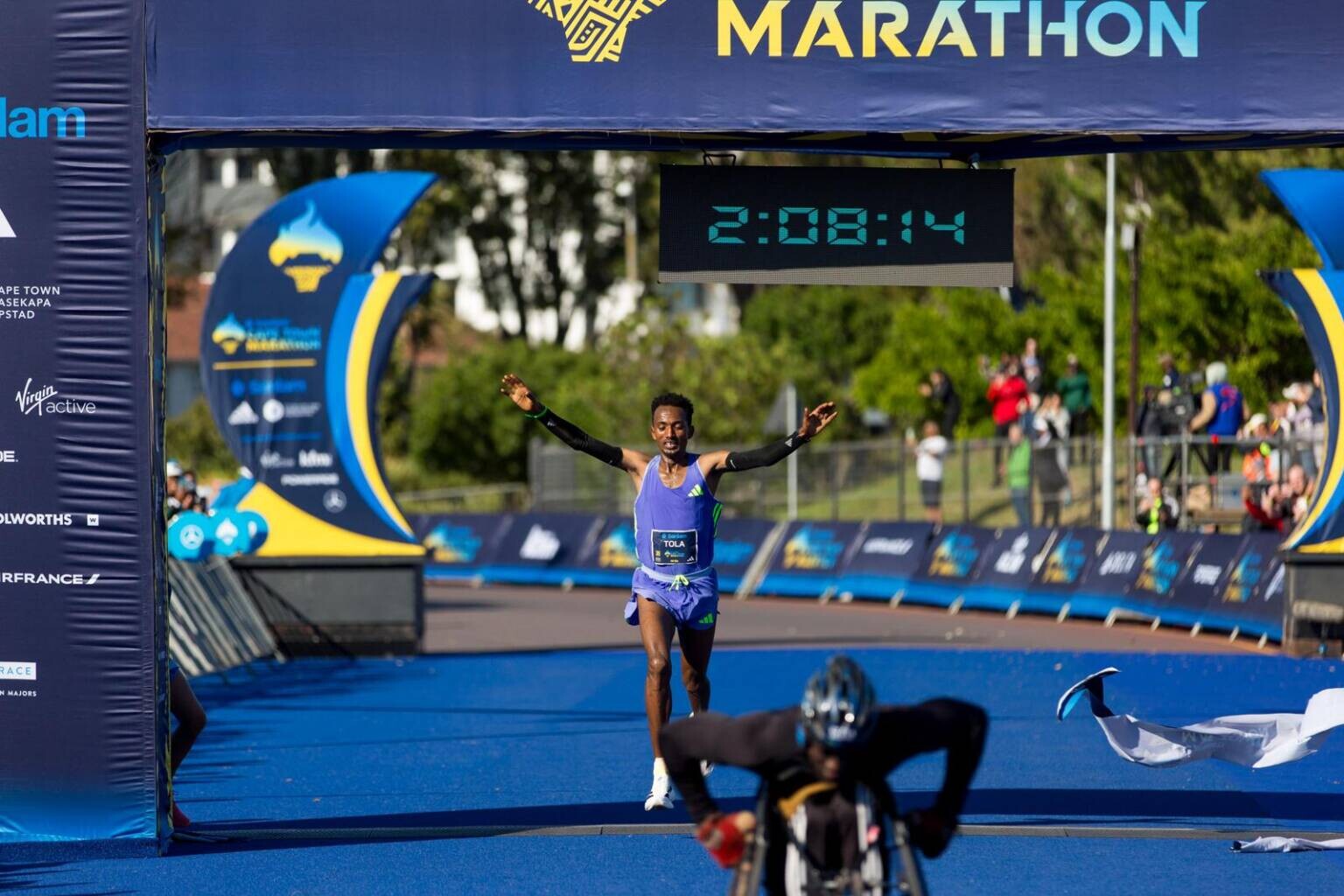
Xaba was joined on the start line by 16 800 fellow starters as well as the deepest ever field assembled for a marathon on African soil. Sadly, the Cape Doctor, as the Mother City’s prevailing summer south easterly wind is known, did not get the memo. The rest of the city pulled together though and the crowds countered the winds with raucous cheers along the route. Their applause, the support of the City of Cape Town local government, and the new record times will all aid the Sanlam Cape Town Marathon’s cause in its bid to become an Abbott World Marathon Majors event in the coming years.
The goal of Abbott World Marathon Majors status, in 2026, may still be on the horizon but Xaba’s dreams came true on the blue carpet in the shadow of the DHL Stadium. She and her fellow elite women had started fast, with the pace setters maintaining a tempo better than the record pace. Fellow South African pre-race favorite, Cian Oldknow, opted not to go with the pace makers and was out of contention for a podium place early in the piece.
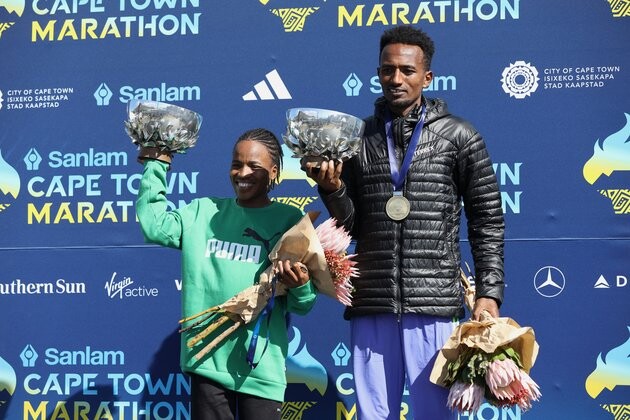
One by one the women dropped from the group, but Xaba and Mare Dibaba Hurssa, in particular, ensured the pace never eased off. It was a surprise when the defending champion, Tsige Haileslase, was distanced near the 30 kilometre mark. This was the first sure sign that records would tumble.
Coming into the final 10 kilometers only Kenyna’s Pascalia Chepkogei remained in contention with the South African and the 2015 World Marathon Champion. After stretching their legs on the downwind gallop through Sea Point the top three turned for home with 4 kilometers to go. This U-turn meant they would run the closing kilometers into a headwind, which suited the powerful style of Xaba. She distanced Chepkogei and finally Dibaba Hurssa, to enter the finishing straight alone.
Soaking up the applause, Xaba crossed the line with both the South African and Sanlam Cape Town Marathon records comfortably secured. “I didn’t want to say before the race, but my goal had been the course record,” Xaba smiled. “I didn’t want to put extra pressure on myself. Even if I had finished in 2:26 I would have been happy, because this was my first marathon. But I’m honestly shocked to have broken the course and national record. I’m humbled to have taken Gerda [Steyn]’s South African record.”
Reflecting not only upon her rival’s stellar debut but also on Ruth Chepngetich’s World Record breaking run in Chicago, the week before, Dibaba Hurssa said: “The women’s marathon is getting really, really, fast. I hope that this generation will keep setting faster times and that the generation to come are inspired by them to run even quicker.”
“I was feeling really strong and my training had made me very relaxed coming into the race,” Xaba noted. “From kilometers 5 to 25 I felt good, the first 21 kilometers were basically a tempo run for me. Then for a bit until the 33 kilometer mark I had to stay strong, focused, and brave because I dropped off the front group slightly. Once I worked my way back, I felt good again and was able to push to the finish.”
“I want to thank my manager, my coaches, and my team at Caster Semenya Training Group!” the 2024 Sanlam Cape Town Marathon champion concluded.
Xaba’s margin of victory was 15 seconds over Dibaba Hurssa. Chepkogei was third, 28 seconds off Xaba’s winning time. Viola Chepngeno and Emmah Cheruto Ndiwa, both of Kenya, completed the top five places. Oldknow finished thirteenth, 20 minutes down.
In the men’s race the battle for victory went into the final kilometers too. It had seemed from early in race that the battle for victory would be fierce, but only a fast second half ensured that the course record was broken. Having set the previous best men’s time in 2018 Stephen Mokaka was the chief pace maker for the 2024 race.
He took a strong lead group through the first 25 kilometers in 1:16:47 before the attacks splintered the field. South African favorite, Melikhaya Frans was the first to surge as they passed through Observatory. His move pulled five Ethiopians clear, these included the eventual winner as well as Gaddisa Tafa Dekeba, Mitku Tafa Dekeba, Adeladlew Mamo Gebreyohannes, and Adane Kebede Gebre.
Over the next 5 kilometers the men from the mountainous nation worked Frans out of the lead group and then whittled it down to just Mitku Tafa Dekeba, the defending champion Kebede Gebre, and Tola. “Once we passed the 33 kilometer mark I knew the three of us would be battling for victory,” Mitku Tafa Dekeba reflected. “At that point I was happy it would be an Ethiopian 1, 2, and 3.”
Mitku Tafa Dekeba was the first of the three to suffer as they rounded the final bend and began the headwind slog along Beach Road in Sea Point towards the Green Point finish line. This left Kebede Gebre and Tola in a two-way tussle for the title. Striding into the wind the younger Tola brother, whose elder brother Tamirat Tola was crowned Olympic Marathon Champion in Paris, was able to dig deep and surge clear.
With the win secured Tola was able to enjoy the finish line and celebrate his new course record. Crossing the line in 2 hours, 8 minutes and 16 seconds the 24 year old did enough to shave 15 seconds off Mokaka’s six year old benchmark. Kebede Gebre had to be content with second, 16 seconds back. Mitku Tafa Dekeba completed the all-Ethiopian podium ahead of Edward Konana Koonyo, of Kenya. Frans was the first South African home in fifth.
“I earned what I trained really hard for today,” Tola acknowledged. “A lot of hard work went into this run. It was a beautiful race and I’ll certainly be back to defend my title.”
(10/21/2024) Views: 41 ⚡AMPby Seamus Allardice
Cape Town Marathon
The Sanlam Cape Town Marathon is a City Marathon held in Cape Town, South Africa, which is sponsored by Sanlam, the City of Cape Town and Vital Health Foods. The marathon is held on a fast and flat course, starting and finishing in Green Point, near the Cape Town Stadium. Prior to existing in its current format, the Cape Town...
more...Vedanta Delhi Half Marathon: Joshua Cheptegei wins men's title; Alemaddis Eyayu bags women's crown
Olympian Joshua Cheptegei lived up to his billing to take home the men’s crown, while Alemaddis Eyayu pushed pre-race favourite Cynthia Limo behind for a surprise win in the women’s race in today’s Vedanta Delhi Half Marathon, a World Athletics Gold Label Road Race, at the Indian capital.
Kenya’s Alex Matata (27) led a major part of the race with his teammate Nicholas Kipkorir, who ran his maiden half marathon internationally. Kipkorir was a bronze medalist in the 5 km World Championships last year.
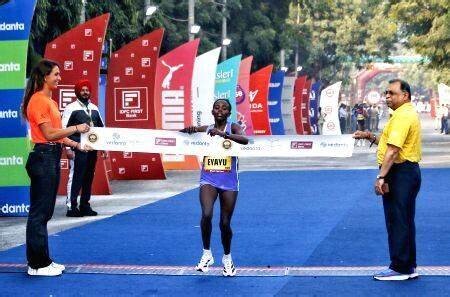
Matata was unbeaten in all three races he took part in in Europe earlier this year, with two sub-60 minutes clocking in two of them. That made the race exciting, and everyone was looking for a fast finish timing from the men’s winner. Matata keeps the lead until the runners turn toward the finish line in the Jawahar Lal Nehru Stadium, where the race commenced less than an hour earlier to decide the 2024 title.
Cheptegei, running seconds behind the Kenyan, realized the now-or-never situation and came from behind to snatch the lead from Matata to win in 59 minutes 46 seconds. Matata (59:53) and Kipkorir (59:59) complete the podium with the Ugandan.
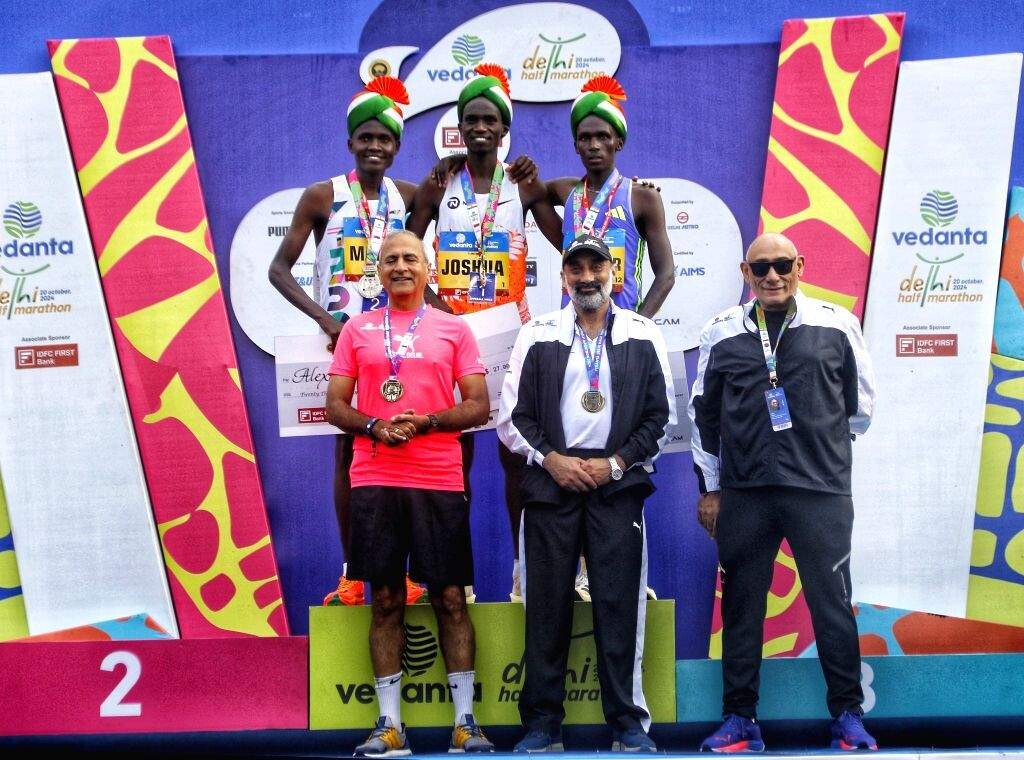
Incidentally, the Vedanta Delhi half marathon was one of the fastest races in the World and usually saw incredible timings by the participants. Ethiopian Deriba Merga was the first to post a sub-60-minute winning time in 2008 when all the podium finishers dipped under 1 hour. This action was repeated several times in some of the subsequent editions at Delhi, wherein 2014 witnessed a record number of nine runners finishing within 60 minutes.
Former world champion Muktar Edris from Ethiopia, another pre-race favourite, finished fifth (60:52), while Tanzania’s Alphonce Simbu (60:40) got the fourth place.
Cheptegei, with multiple world titles on his cap, said that “this win in Delhi was special to me because it is my first-ever victory in a Half Marathon. India has been important for my career, and this country now means a lot to me. I felt good throughout the race despite the slow start. My first aim was to catch up with Nicholas (Kipkorir) and then Alex (Matata) in the final few kilometres of the race. I am delighted with my performance and hope to continue in the same manner in the future races”.
Thank you, Vedanta Delhi Half, for a wonderful race. This has been a special race that tested my mind. Initially, I felt some problems in my feet around 16-17 km, but I decided to push and catch up with Nicholas, and then for about two kilometers, we pushed each other. I took it slow because I didn’t want to burn out, and I wanted to finish strong. Now I go back home with a feeling to conquer the roads”, he further revealed.
Eyayu beats favourite Limo to win the women’s title:Alemaddis Eyayu extended the Ethiopian winning streak in Delhi. Kenya’s Cynthia Limo, the pre-race favourite, led the field right from the beginning while Scotland’s Commonwealth Champion Eilish McColgan trailed behind all the time. McColgan had the fastest and only sub-66 minute timing among the elite women who took the starting lineup today. However, two Ethiopians, Eyayu and Tiruye Mesfin, stuck with Limo for the entire part.
Cynthia Limo, who won the women’s title here in 2015, had returned to Delhi after nine years. Following her victory in the Indian capital, the Kenyan runner secured a silver medal in Cardiff's 2016 World Half Marathon championships.Eyayu and Limo passed the 10K mark together and remained the sole leaders in the women’s race. However, the Ethiopian runner pulled ahead in the second phase of the race, leaving Limo 10-15 seconds behind. It was a crucial deciding factor at the end as Eyayu crossed the finish line 68:17 for the top spot, while Limo did so 10 seconds later. Mesfin clocked 69:42 for third and McColgan 69:55 to finish fourth and outside the podium.
“I had a good race, tried to keep my pace and aimed to finish well. I am happy to have achieved it” Eyayu said during the post-event press conference.
Limo said she was happy to join the Delhi podium after nine years. “Securing second place is incredible, one that fills me with pride. The atmosphere was electric, with people lining the streets and cheering us. It’s heartwarming to see how the city comes together. This experience has been truly special; the support from the spectators, their enthusiasm, and the overall energy of the event have made this return to Delhi unforgettable,” was Limo’s reaction to the race.
The total prize purse for the Vedanta Delhi Half Marathon is USD 260,000. The podium finishers both men and women will take home USD 27,000, USD 20,000 & USD 13,000 respectively.
Sawan Barwal betters previous performance
Sawan Barwal will go home with the gold medal this time around after finishing on the podium of the Vedanta Delhi Half Marathon for a second straight edition. With a timing of 1:02:46, Barwal finished ahead of Puneet Yadav, bettering his personal best in the process. Kiran Matre grabbed the third spot to complete the podium for the Indian Elite Men's event.
Barwal, who won bronze in 2023, was behind Puneet at the 10-kilometer mark, but left his best for the final stretch of the race. Taking advantage of an opening, he pushed himself in the final quarter and eventually secured the top spot with a difference of almost 1 minute and 9 seconds.
After the race, an emotional Sawan was ecstatic about turning the bronze to gold as he shed some light on his performance, saying, "It has been a great ride from the last Vedanta Delhi Half Marathon to the current edition. We are nearing the end of the season, and I was happy with the preparations throughout the season, and I used that to my advantage this time around. I did not enter thinking about finishing in 62 minutes, but the way I started and when I settled into the race, I knew I could go all the way."
Lili Das has dream debut
In the Indian Elite Women's category, Lili Das was miles ahead of her competitors, securing the gold with a timing of 1:18:12. Coming in second was last year's winner Kavita Yadav, who clocked 1:19:44 as she finished in the top 3 for a second straight edition of the Vedanta Delhi Half Marathon. In third place was 2022 Asian Games bronze medallist Priti Lamba, who crossed the finish line at the 1:20:21 mark.
In the 9th position at the 10-kilometer mark, Lili upped the ante to reach the top spot at the 15th kilometer. She maintained the lead with a massive effort and went on to win the gold by a massive difference of 1 minute and 32 seconds ahead of Kavita.
Lili, who fought cramps on the way to her gold, spoke about the experience of landing on the podium in her very first Vedanta Delhi Half Marathon, "It is a very good feeling to win the Vedanta Delhi Half Marathon in my very first attempt. I felt a little bit of dehydration during the race which I was worried about, but I am glad that I was able to finish the race. I cramped up around the 19th kilometer and it was a scary moment, but I fought it and worked very hard to finish the final 2 kilometers. After doing well in track and field events, winning gold in a half marathon feels great."
The people of Delhi came together once again to showcase the spirit of their city and promote healthy lifestyles at the Vedanta Delhi Half Marathon. Thousands of runners, from seasoned athletes to enthusiastic amateurs, took to the streets, turning the event into a vibrant celebration of fitness and community. The race not only highlighted the city's commitment to well-being but also raised awareness for various charitable causes, embodying the essence of unity and social responsibility that Delhi is known for.
(10/21/2024) Views: 41 ⚡AMPby Republic World
Vedanta Delhi Half Marathon
The Airtel Delhi Half Marathon is a haven for runners, creating an experience, that our citizens had never envisaged. The streets of Delhi converted to a world-class running track. Clean, sanitized road for 21.09 kms, exhaustive medical support system on the route, timing chip for runners, qualified personnel to ensure smooth conduct of the event across departments. The race...
more...Ethiopians Make Impact at TCS Toronto Waterfront Marathon
On a record setting day more than 6,200 runners crossed the line making the 2024 TCS Toronto Waterfront Marathon the largest marathon in Canada.
Ethiopian women once again filled the top four places with the first three smashing the course record.
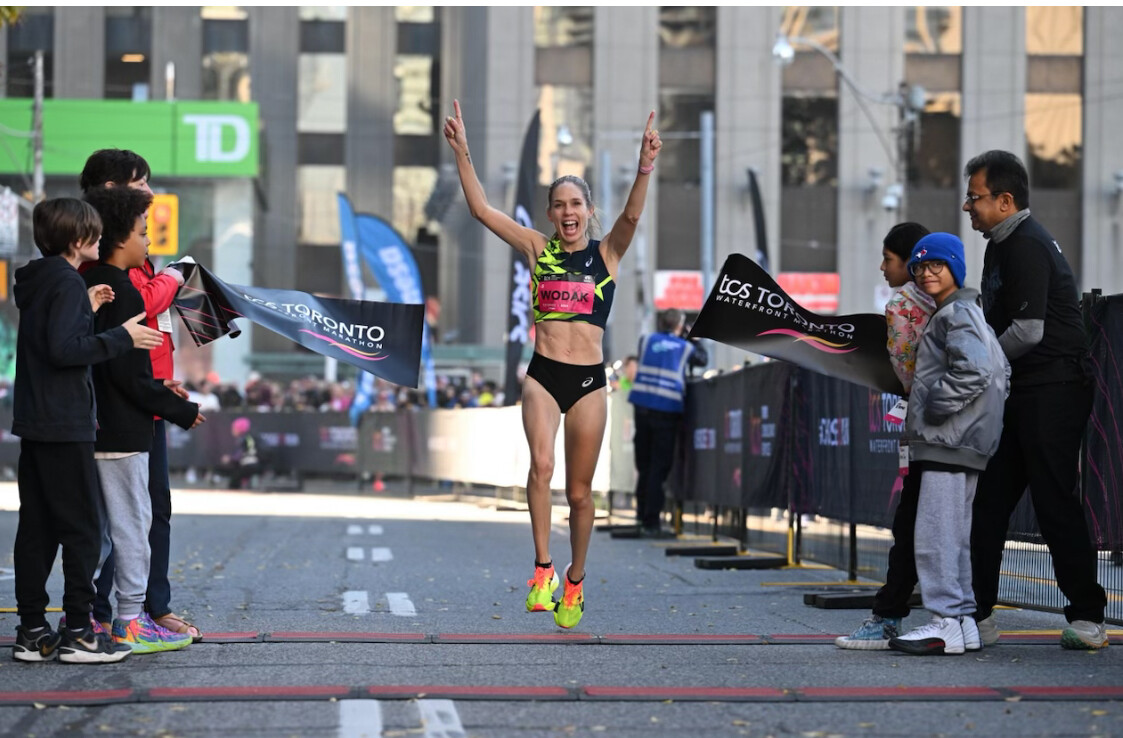
Waganesh Mekasha crossed the line first in a marvellous time of 2:20:44 to claim the $20,000 winners’ purse together with $10,000 for beating the course record. The record of 2:22:16 had been set by Kenya’s MagdalyneMasai in 2019.
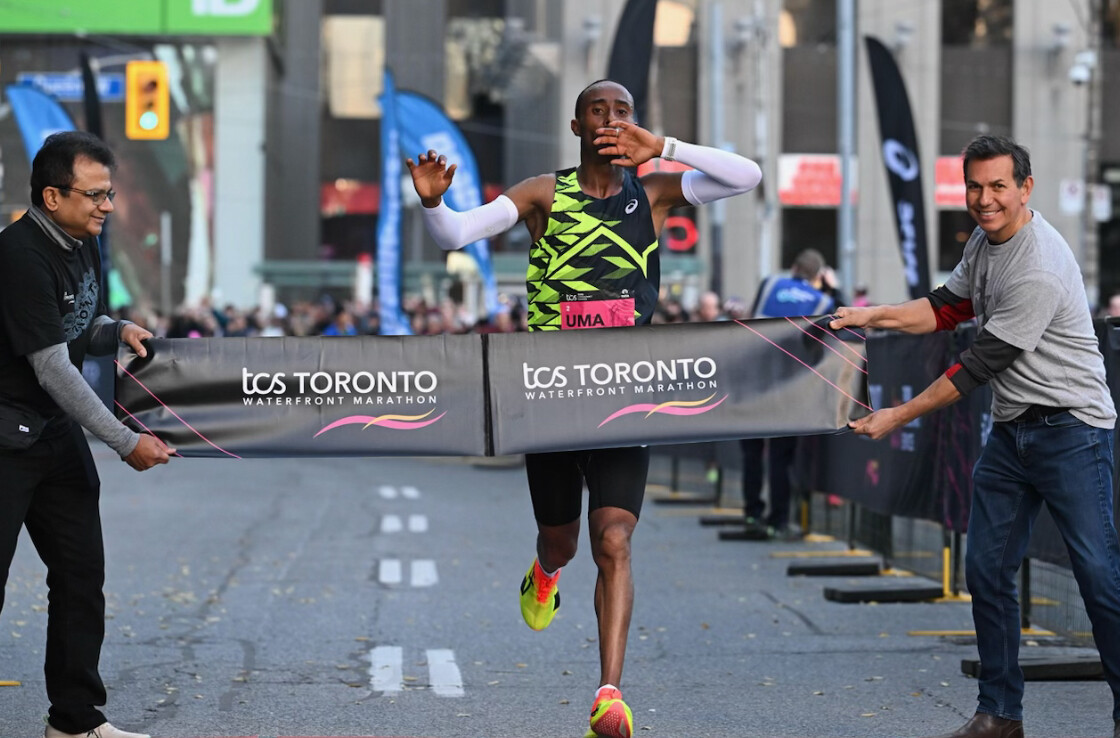
A year ago Waganesh had finished one second behind the winner and returned here with victory in mind.
“I had prepared very well and I thought I could get the course record,” she said through a broad grin. ‘I thought I might get 2:21. I didn’t expect 2:20 so I am very happy.”
Second place went to Roza Dereje, who was returning to marathon racing after taking three years off to start a family. The Olympic 4th place finisher in 2021 she has a personal best of 2:18:30 and had been boldly insistent that she wanted a pacemaker to take the leaders out at course record pace. She got her wish.
The four-woman Ethiopian contingent passed half way in 1:10:19 but at 30km there were just three of them left, Waganesh, Roza and Afera Godfay.
“Around 35 -37km is where I made my move,” Waganeshsaid afterwards while waving to a Toronto spectator who hails from her village in Ethiopia. “From there I pushed on and that is where I was able to separate.”
Roza was pleased with her performance and praised her compatriots.
“I praise the Lord first, I am very happy with the run and with the time,” she declared. “I am happy for my kids and my husband. It has been three years (since her last marathon) and I am happy. I came to win but I am very happy with what I got.”
Following Roza home was Afera Godfay to repeat her third place finish from a year ago but this time she was rewarded with a a new personal best of 2:21:50.
The TCS Toronto Waterfront Marathon is a World Athletics Elite Label race and doubles as the Canadian Championships. It was Natasha Wodak, a two-time Canadian Olympian and current national record holder at 2:23:12, who claimed the championship gold medal while finishing 5th overall.
After chasing the Olympic standard in 2023 and early 2024 and falling short she was delighted with her first championship in her favoured distance. She drew encouragement from the fact her time of 2:27:54 was her fastest since 2022.
“I am really happy that I was able to win,” she said as her parents and her coach Trent Stellingwerf looked on. “ Ididn’t feel awesome in the second half but I had an amazing pacer who was encouraging me and when I needed to slow down we would slow down and when I felt good we would speed up.
“I didn’t feel that great which is a little frustrating but to still run sub 2:28 when you are not feeling great on a windy day I am happy with that.”
The Canadian championship silver medal went to Leslie Sexton (2:33:15) with the bronze going to Rachel Hannah (2:34:33).
Mulugeta Uma, who is a member of the Ethiopian armed forces, won the men’s race in 2:07:16. He had also come to Toronto hoping to produce a course record (2:05:00). When the pacer dropped out at halfway reached in 63:01 he pushed the pace all the while encouraging those around him to share pacemaking duties.
Eventually Kenya’s Domenic Ngeno took on the role and opened up a ten-second lead which appeared to undo the field. But Mulugeta was unfazed.
“I was running my own pace I saw (Domenic) move ahead but I knew he would come back to us because I was running my own pace,” he revealed later. “It was very hard. It was cold and very windy so it was very difficultrunning. I didn’t get the time but I got the win.”
Ngeno hung on for second place in 2:07:23 a three second improvement over his previous personal best.
“I was thinking I would run ahead of that guy from Ethiopia,” said Ngeno. “I knew he was very strongbecause he has a personal best of 2:05:33. When the group caught me I knew I would be on the podium. I am happy with my second place.”
Third place went to Noah Kipkemboi of Kenya who also recorded a personal best with 2:07:31.
The Canadian men’s title went to Vancouver’s Justin Kent who ran a personal best of 2:12:17. He had run aggressively from the start accompanied by a dedicated pacemaker who took him through half way in 65:13.
"I felt fantastic - until we hit the wind in the last 8k,” he said afterwards. “I felt really, really good, holding back a lot, and then the pace faltered a little bit. I was just zoned in on the pacer. There were two 5km splits there where we were running 15:50, which allowed them to come back a little bit. My legs felt great just the wind was not so fun.”
At one point a chasing pack of Canadians closed the gap paced by his friend and training partner, Ben Preisner. Yet, he was able to hold them off before extending the margin .Second place went to Lee Wesselius in 2:13:52 with Andrew Alexander, who was making his marathon debut, taking the bronze medal in 2:14:13.
“I knew at the first turnaround they were a lot closer than I thought,” Kent continued. “I knew that was potentially going to happen but I knew they were just as sore as I was. I was a little bit worried that they might work together in the wind. That’s a hard stretch to run into the wind that last 8km. I was able to pull away the last couple of kilometres.”
Both Kent and Wodak earned valuable World Athletics points for their Canadian Championships which they hope will earn then places on Canada’s 2025 World Championship team bound for Tokyo.
(10/20/2024) Views: 40 ⚡AMPby Paul Gains
TCS Toronto Waterfront Marathon
The Scotiabank Toronto Waterfront Marathon, Half-Marathon & 5k Run / Walk is organized by Canada Running Series Inc., organizers of the Canada Running Series, "A selection of Canada's best runs!" Canada Running Series annually organizes eight events in Montreal, Toronto and Vancouver that vary in distance from the 5k to the marathon. The Scotiabank Toronto Waterfront Marathon and Half-Marathon are...
more...A cold, hard look at extreme winter races
Winter is when races careen from the cosy, coddling courses of autumn into a forbidding tundra that both terrifies and exhilarates. It’s in this frozen landscape that the most extreme races are forged—competitions that take things to unsettlingly unconventional extremes, like sporting the scariest name or boasting the largest field of hungover revellers.
From a race season positively steeped in superlatives, here’s a sampling of extreme cold-weather races that boast the most—for reasons silly and chillingly serious—and strategies for making the most of them.
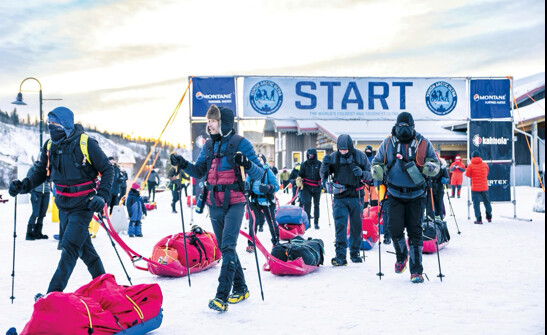

THE WILDEST
Polar Bear Marathon
Nov. 23, 2024
Churchill, Man.
Distances: 21.1 km, 42.2 km, 50 km
albertmartens.com
An event where vehicles tail runners in case a polar bear wanders onto the course truly deserves the title of winter’s wildest race. Beginning from Churchill, Man., the course takes participants along the coast of Hudson Bay for a challenge that balances breathtaking beauty with physical and mental rigour.
“A few times there have been polar bears right on the road where they run,” says race director Albert Martens. “However, we do provide safety for the runners, escorting them with a vehicle. Often the Canadian Rangers are out and assist us, as well.”
As challenging as this event is, the joys of the race aren’t to be outdone by the hardships. “One of the highlights of the run is the beautiful sunrise at the start overlooking Hudson Bay, and the post-marathon banquet, where the runners get to know each other better,” says Martens. He adds that one of the “swag bag” items runners receive is a polar bear carved out of soapstone. Although signups for this year’s event were set to close Oct. 1, it’s a race worth keeping in mind
THE BOOZIEST
Santa Will Run for Beer 5K-ish
Dec. 7, 2024
Bethlehem, Pa.
Distance: “5K-ish”
runsignup.com/Race/PA/Bethlehem/SantaWillRunforBeer5Kish
When it comes to combining Santa and suds, this race really raises the bar. Suit up in your best Kris Kringle costume and simultaneously work up and quench your thirst as you race between more than a dozen drinking establishments. The order you hit the bars in is up to you, but you’ve got three hours to stop at them all before raising a celebratory glass with your fellow runners at Molly’s Irish Grille and Sports Pub.
Speed counts—the first 24 runners at each location get a free beer—but so does presentation, so don’t skimp on style when putting together your Santa look. “Don’t go easy on your costume,” suggests Rochelle Romeo Kane, managing director of Run Lehigh Valley, which organizes the race. She also recommends mapping out your “beer strategy” beforehand: “Are you more of a ‘run fast and hit the close bars’ or ‘go for the early long-haul’ kind of runner? Either way, come with your plan and know it will change!” Runners must be at least 21, but it’s a race that
THE JOLLIEST
Santa Shuffle Fun Run & Elf Walk
Dec. 7, 2024
British Columbia: Abbotsford, Chilliwack, Langley
Alberta: Edmonton, Calgary
Saskatchewan: Regina
Manitoba: Winnipeg
Ontario: Hamilton, Kemptville, Kingston, Ottawa, Sudbury, Thunder Bay, Toronto, Whitby
Quebec: Montreal
Prince Edward Island: Charlottetown
Nova Scotia: Halifax
Newfoundland and Labrador: St. John’s
Additional virtual events
Distances: 1 km, 5 km
santashuffle.ca
What started in 1990 as a fundraiser by Running Room members to support Salvation Army programs in Edmonton has become a countrywide celebration of seasonal giving, as legions of speedy Santas are unleashed from start lines coast to coast. Santa Shuffle races, which continue to benefit the Salvation Army, boast the most Santas in Canada’s winter-running scene, but also pull in plenty of reindeer, elves and assorted festive fashionistas. Clever costuming pays at the events, with prizes for the best individual, group and pet get-ups (see the event website for details).
THE PRICIEST
Antarctic Ice Marathon
Dec. 13, 2024
Union Glacier, Antarctica
Distances: 21.1 km, 42.2 km
icemarathon.com
With a registration fee approaching $30,000, the Antarctic Ice Marathon isn’t a race you’ll enter on a whim, but the experience it offers is as rich as its price tag, and it’s sure to earn a spot on many runners’ bucket lists. You’ll be whisked by jet from Punta Arenas, Chile, to Union Glacier in the Antarctica interior, within a few hundred kilometres of the South Pole. Although aid stations, snowmobile support and medical personnel will be available, completing either the event’s marathon or half-marathon will take plenty of self-motivation; as race organizers point out, there won’t be any crowds to cheer you on—not even penguins venture this far south. Runners should also note this race can be as unpredictable as it is unforgettable. “The Antarctic Ice Marathon presents a unique challenge with its extreme cold and unpredictable weather,” says race director Becca Pizzi. “We advise runners to prepare for low temperatures and be ready for sudden shifts in conditions. Proper layering and mental resilience are key to tackling this unforgettable race.”
THE HEAD-POUNDINGEST
The 18th Hangover Hike
Jan. 1, 2025
Dewsbury, England
Distances: 15 km, 27 km, 34 km
ldwa.org.uk/TheIrregulars/W/2112/hangover-hike.html
An event that gives a refreshingly honest nod to the realities of New Year’s revelry, the Hangover Hike in northern England encourages hikers and runners to get an early and (mostly) sober start to 2025. The New Year’s Day run/hike around the rural roadways, hills and hiking trails of the town of Dewsbury (about 15 km south of Leeds) will ease participants into the challenge ahead with tea and toast at registration. The event’s three hikes—15 km with just over 300 m of ascent, 27 km with about 520 m of climb and 34 km with almost 550 m of ascent—start and end at The Leggers Inn. The Irregulars group of the Long Distance Walkers Association, which organizes the event, puts it succinctly: “A brisk walk or run, a breath of fresh air, a wee dram en route and a hair of the dog at The Leggers. What better way to start the new year?”
THE LOOPIEST
Frozen Falcon
Jan. 12, 2025
Falcon Beach, Man.
Distance: As far as you can go in eight hours
ontheedgerunning.com/home/frozenfalcon
Looped courses can help take the sting out of daunting distances by breaking down the kilometres into bite-sized chunks. The Frozen Falcon’s 6.5-km course at Falcon Trails Resort in southeastern Manitoba is the perfect length to keep your run manageable without it becoming monotonous, but be aware of the course’s unique challenges: “This race is run on groomed trails, however, after a few laps the snow can become a little like sugary mashed potatoes,” cautions race director Joel Toews. “Get working on that lower-leg strength! Also, you’re going to head into the yurt each loop, where there is food and a wood stove. It’s pretty cosy, so don’t get sucked into the comfort. Get back out there as soon as possible.”
THE SCARIEST-SOUNDING
Hypothermic Half Marathon
Vancouver: Jan. 19, 2025
Edmonton: Feb. 2, 2025
(A planned second Edmonton event was not confirmed before publication.)
Kelowna, B.C.: Feb. 9, 2025
Halifax: Feb. 16, 2025
Calgary: Feb. 23, 2025
Winnipeg: Feb. 23, 2025
Additional virtual events
Distances: 10 km, 21.1 km
hypothermichalf.com
The Hypothermic Half Marathon is no walk in the park, but this intimidating-sounding series of winter races has a bark that’s worse than its frostbite. That’s due in large part to the warmth and hospitality shown by volunteers and supporters during and after the races. There are other ways to stay toasty at the Hypo Half, however—at last year’s event in Edmonton, local runner David Eliuk sported 120 T-shirts in a bid to set a new world record for the most T-shirts run in a half-marathon. He achieved the feat, but was bested by American Dan Harvey—who donned 127 shirts at an event a few months later—before Eliuk’s record could be ratified.
THE LONGEST
Montane Yukon Arctic Ultra
Feb. 2–14, 2025
Teslin, Yukon
Distances: 340 km, 640 km
arcticultra.de/home
This race could be a contender for the most extreme in several categories—winds whip up with unfathomable force while temperatures can plummet to -40 C—but its length is what really makes it a standout. Starting from the village of Teslin and finishing in the town of Faro, the ultra’s shorter race totals 340 km, while the main event (including a 150-km route out and back from Faro) adds up to an eye-watering 640 km. Competitors can tackle these either on foot or skis or by mountain bike.
“Many races with these kinds of distances are organized in stages,” says race director Robert Pollhammer. “In our race, athletes are on the go day and night, sometimes up to an average of 20 hours per day.” He cautions that sleep deprivation can be dangerous in such an extreme environment and emphasizes the importance of having a strong race strategy.” While cautioning that the race isn’t for everyone, he says, “If you like the cold, the vastness of nature and being in a race with a family-like atmosphere, the
THE LARGEST (LATITUDINALLY)
6633 Arctic Ultra
Feb. 27 to March 8, 2025
Eagle Plains, Yukon
Distances: 120 miles (193 km), 380 miles (612 km)
6633ultra.com
Canada’s most northerly winter foot race, the 6633 Arctic Ultra (named for the latitude of the Arctic Circle in the Yukon—66 degrees, 33 minutes north) tests the ambitious and adventurous in a gruelling trek across two Canadian territories. Beginning in Eagle Plains, Yukon, runners who tough it out will cross the Arctic Circle to finish lines in the Northwest Territories hamlets of Fort McPherson (193 km) and Tuktoyaktuk (612 km).
Blistering wind and cold make the 6633 one of the most physically punishing races on Earth—but the competition’s mental challenge is greater still, according to race co-director Stuart Thornhill. “The mental fatigue experienced and resilience required cannot be underestimated,” Thornhill says. “Our athletes experience long periods of isolation in the dark and extreme cold, leading to extreme hallucinations.” Sticking to script, he says, is key to success at the 6633: “Those who make it through have a plan which they follow, eating when they need to, sleeping when they need to. They don’t get caught up racing someone else and breaking their plan. I have seen people who have been at the back of the pack for most of the race and have come in the top three finishers, because they stuck to what worked best for them.”
THE SPICIEST
Chilly Half Marathon
March 2, 2025
Burlington, Ont.
Distance: 21.1 km
raceroster.com/events/2025/84601/2025-chilly-half-marathon
The Chilly Half Marathon is a cold-weather race that throws some serious heat. While most of the events on this list aren’t really built for racking up personal bests, the course through downtown Burlington and along Lake Ontario’s western shore is perfect for burning rubber. “This will be the 29th year of the fun, fast, flat race that welcomes 4,000 runners to downtown Burlington,” says Kelly Arnott, co-CEO and co-owner of race organizer VR Pro Inc.
An event that marks the start of the spring road-running season in eastern Canada, the Chilly Half is just as popular for its post-race revelry as for its scenic, zippy course. Spectators and runners can shake off the March chill by coming together for a bowl of piping hot chili. “If it is a chilly day, we will warm you up with a bowl of hot Stagg Chili following the great race,” says Arnott.
THE MOST ENDURING
Around the Bay Road Race
March 30, 2025
Hamilton
Distances: 5 km, 10 km, 15 km, 30 km, additional virtual events
bayrace.com
Launched in 1894—three years before the Boston Marathon—Hamilton’s storied Around the Bay Road Race is North America’s oldest long-distance running event. More than a testing ground for generations of runners, Around the Bay is itself something of an endurance feat. Despite some challenging obstacles (in recent years organizers have had to switch up the course due to renovation and construction projects in the city), the 30K run around Hamilton Harbour remains a cultural focal point for the local community and favourite destination race for runners worldwide. Race-day weather has been known to swing wildly from warm and sunny one year to blizzard-like the next, so the best way to prepare is to be consistent in training, suggests race director Anna Lewis. “Keep to your training schedule even on bad weather days, because you never know what the weather will be like on race day,” she says, adding that wisely managing effort is also key to negotiating tougher terrain near the end of the race. “Don’t go out too fast, so
FROZEN FEATS
Here are some extreme winter exploits that have earned a place in the Guinness Book of World Records.
Coldest marathon
By its name alone, the Siberian Ice Marathon seems a convincing contender for the world’s coldest marathon—and it’s not just hype. Temperatures as low as -39 C were recorded at the 2001 race in Omsk, Russia. While it’s the coldest marathon recognized by Guinness, organizers of the Pole of Cold Marathon in Oymyakon (also in Siberia) reported the mercury crashing to -55 C at its most recent event on Jan. 12, 2024.
Fastest half-marathon barefoot on ice/snow
Not content to set this record by running a bone-chilling half-marathon barefoot in 1:50:42, Josef (Joska) Šálek added an extra dash of shivery showmanship by running the distance in nothing but shorts. The Czechian set the record on a course in his home country on Feb. 18, 2024.
Fastest marathon by a female dressed as Santa
From snowmen to ice-cream cones, there’s no end to the cold- and winter-centric costumes runners will don to break records, but most of these attempts are made in spring or fall. Hand it to British runner
WINTER RACE TIPS FOR FIRST-TIMERS
Don’t dress just for the start line
As tempting as it is to bundle up while waiting for your race to start, things can heat up pretty quickly once you’re on the move, and overheating can sap your performance and enjoyment of the race. If temperatures are dry and above freezing, dressing as though it’s 10 C warmer than it really is will keep your engine running cool as you hit your stride. On colder, windier days, dress in layers that can easily be discarded or passed off to a supporter on the sidelines.
Show up fully charged
The energy demands on your body when racing in colder temperatures aren’t significantly different from those of any other time of year, so there’s no need for drastic changes to your pre-race fuelling. The same can’t be said of your running tech, however. Plummeting temperatures can be a big drain on the battery capacity of your watch, headlamp and heart rate monitor, even during shorter races. Make sure the devices you rely on are fully charged; don’t assume the GPS that saw you to the end of a summer 5K on a 15 per cent
(10/20/2024) Views: 57 ⚡AMPNoah Lyles commits to race NFL star Tyreek Hill
After months of trash talk between Olympic and world 100m champion Noah Lyles and Miami Dolphins wide receiver Tyreek Hill about who would win in a 100m race, the debate will finally be settled. According to a report in Ad Age, both athletes have committed to a race organized by actor and America’s Got Talent host Terry Crews.
The competition will be part of “Super Serious on Sight”–an elimination-style tournament between Olympic runners and pro athletes co-founded by Crews. Super Serious did not reveal the date of the high-profile race, but it would presumably be after the 2024 NFL season and before the 2025 summer track season .
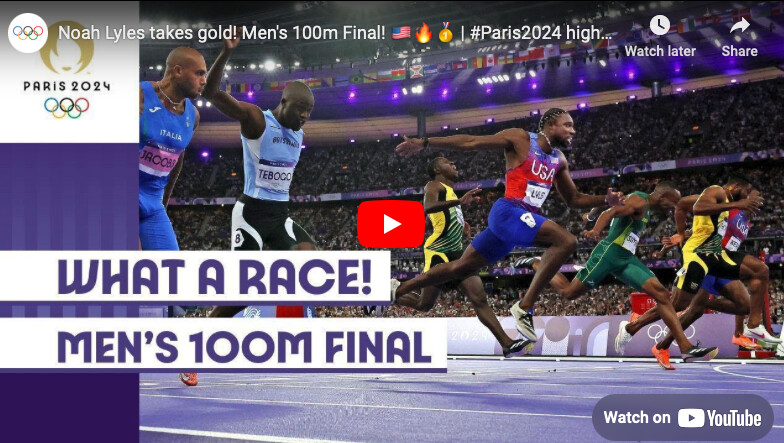
“I wouldn’t beat him by a lot, but I would beat Noah Lyles,” the NFL player said after the Paris 2024 Olympics. The 30-year-old is known for being one of the fastest players in pro football and comes from a track and field background. Hill represented Team USA at the 2012 World Junior Championships in Barcelona, winning gold in the men’s 4x100m relay and bronze in the 200m, with a personal best of 20.54 seconds.
In response, during an interview with NBC Sports, Lyles said he didn’t know who Hill was, referring to him only by his nickname, “Cheetah.”
“What’s the Cheetah guy from football, what’s his name? I can’t remember his name,” Lyles said. “What’s the football player who thinks he’s fast name?”
Lyles has a history of being overconfident while mocking other athletes–the 27-year-old also pretended he didn’t know who Team Canada was (in the men’s 4x100m relay) ahead of the Paris Olympics, where Canada brought home gold.
(10/20/2024) Views: 36 ⚡AMPby Running magazine
Hurricane Helene Devastated This Running Hotbed. Professional Athletes Are Helping Rebuild It.
“We had no idea the gravity of what was coming,” said Olympian Abbey Cooper.
On a typical Tuesday, Abbey Cooper usually tackles a threshold workout before leading practice as the coach of a youth cross-country team in Boone, North Carolina.

Last week, the 2016 Olympic 5,000-meter runner was working as a volunteer, answering phones at her church, Alliance Bible Fellowship. For hours, the new mom helped survivors of Hurricane Helene obtain generators and other necessities in the wake of a natural disaster.

When Helene made landfall in Florida as a Category 4 storm on September 26, it created a 500-mile path of destruction across the southeast. Homes were washed away, roads were destroyed, and electricity was wiped out in communities across six states, where the death toll has risen to 227. Many are still unaccounted for or missing, according to The AP.
In the rural mountain towns of western North Carolina, the hurricane decimated communities with unrelenting rain and devastating floods. And emergency response was made more difficult due to hundreds of damaged roads and downed bridges.
Now as people begin to recover and rebuild, several elite runners in Boone and Blowing Rock, North Carolina, are taking major steps to give back and raise awareness for the organizations working tirelessly to support those in need. From cleaning up trails to delivering meals and disaster kits, professional and collegiate athletes who train in the area are providing critical aid and urging others to help in recovery efforts.
“We had no idea the gravity of what was coming”
Cooper, her husband, Jacob, and their 20-month-old daughter, Mercy, live in a valley about 15 minutes from downtown Boone. In the days leading up to the storm hitting their town on Friday, September 27, a downpour descended on the area. At the height of the storm, Cooper remembered seeing waterfalls flowing off the hill and rushing toward their house.
Though they had to dig a trench to reroute water that was flowing into their garage, there was minimal damage done to the Coopers’ home. Cooper said they were lucky. One of their neighbor’s homes located next to a creek was destroyed, but the owner made it out safely. “All of us were really humbled. We had no idea the gravity of what was coming,” she said.
They lost power and water, relying on a portable camping stove and water filter to sustain them at home for three days. The couple considered driving to their friend’s house in Raleigh but decided to stay after the power was turned back on.
Tristin Van Ord Colley had a similar terrifying experience at her home in Blowing Rock, located about eight miles from Boone. The professional marathoner, who runs for Zap Endurance, was in her apartment when a tornado hit the street behind her complex on Wednesday, September 25. Without receiving any warning of the tornado, the Appalachian State University alum and her husband, fellow pro runner Andrew Colley, took shelter last minute in a room without windows. The next day, the rain started to pick up. By Friday, it became catastrophic.
Tristin said Andrew was watching a teammate’s dogs across town when water started flooding into the house. With the water rising rapidly and the electricity still on, Andrew fled with the dogs in his car and drove to their apartment. Tristin said he was forced to avoid road closures and drive through deep water as the storm progressed. “If [Andrew] had waited any longer, I’m not sure he would’ve been able to make it,” she said.
Though the basement of their apartment building flooded up to four feet, the water didn’t reach their unit on the second floor. After the power went out—and didn’t turn back on for nine days—Tristin and Andrew braved the few roads that were open but riddled with fallen trees, to drive to her mom’s house in Chapel Hill.
Recovering and rebuilding
Once they stabilized at home, Abbey and Jacob started volunteering with local relief efforts led by the Red Cross and Samaritan’s Purse in partnership with their church. Jacob, who works as the Associate Athletics Director for Sports Psychology and Mental Wellness at Appalachian State, is making deliveries to families in need and serving meals at the university. Abbey is assisting with administrative
“The people of Appalachia I feel are forgotten about a lot…Being someone who was extremely lucky in this situation, it’s hard for me to watch this community that I’ve grown to love so much crumble because of poverty and maybe not being prepared or not warned,” she said, while noting the messaging about the severity of the storm could have been better communicated in advance.
“It’s important to have eyes on this area and have people recognize that these people here matter too.”
Zap Endurance elite coach Peter Rea and his family are doing their part by volunteering at local churches and public schools, which have become distribution centers for aid since the hurricane hit. Rea, his wife—cofounder of Zap Endurance Zika Rea—and their two children are helping people get necessities, like diapers, toothpaste, bottled water, blankets, and hot meals in the aftermath of their homes getting destroyed.
The Rea family home saw minimal damage in Blowing Rock compared to other communities sitting at lower elevation, but four Zap runners were flooded from their houses, he said. Several of the athletes stayed with Rea immediately after the hurricane. They had to run on treadmills because the team’s primary training venue, Moses H. Cone Memorial Park, was severely damaged from the storm.
“There are just hundreds of trees down in the national park on all of the carriage trails that we run on,” Rea said. “A couple of our rolling dirt loops are completely flooded out. There’s lots of housing destruction on the road because it’s right next to the Watauga River, which went 12 feet over its banks.”
Most of the team left Blowing Rock and Boone to continue their respective training blocks in their hometowns. Though the team is displaced right now, Rea has encouraged the athletes to stay connected as they pursue their running goals from afar. “We’re trying to impress upon them to be excited about getting out the door everyday, and go out of your way to create community when you’re back home,” he said.
Rea is hoping the athletes will be able to
A portion of the trail clean-up effort is being led by the cross-country team at Appalachian State. Seeing the widespread damage prompted the men’s and women’s squad to pick up trash blown onto the paths they utilize every day, said Appalachian State women’s distance coach Annie Richards.
“As a distance runner, you’re out running the trails or running around town, you really have a unique connection to the place,” Richards said. “In some ways, it’s harder because a lot of the trails that we’ve been running on have been really impacted by the storm, but also I think our team has been able to really understand the scope of the disaster.”
Last week, the team volunteered to sort through donations and build disaster relief kits, which included items to help people kill mold in their home caused by water damage. Richards said they plan to do more volunteer projects while the team is in season for cross-country this fall.
Though the community has received aid from different organizations in town and around the country—Cooper said she got “chills” when she saw hundreds of camper vans belonging to volunteers who traveled many miles to assist—there’s a long period of recovery ahead.
“The people of western North Carolina have never seen anything of this magnitude,” Rea said. “Anything people can do to help is greatly appreciated.”
To learn more about Hurricane Helene relief efforts and different ways to give back, visit the following nonprofit organizations recommended
(10/20/2024) Views: 47 ⚡AMPby Runner’s World
Should You Pick a Run Club to Make Friends or to Run Faster?
Looking to join your local group after run clubs went viral this year? Here's what to know for the best possible experience.
ALL BRENDAN WILSCH wanted was a slightly different running experience. The 23-year-old New Yorker has spent most of his running life hitting the pavement solo, depending on the activity as an outlet to relieve stress. After spending every outing on his own, he decided to branch out and find some company for a change to add some socialization to his workout.
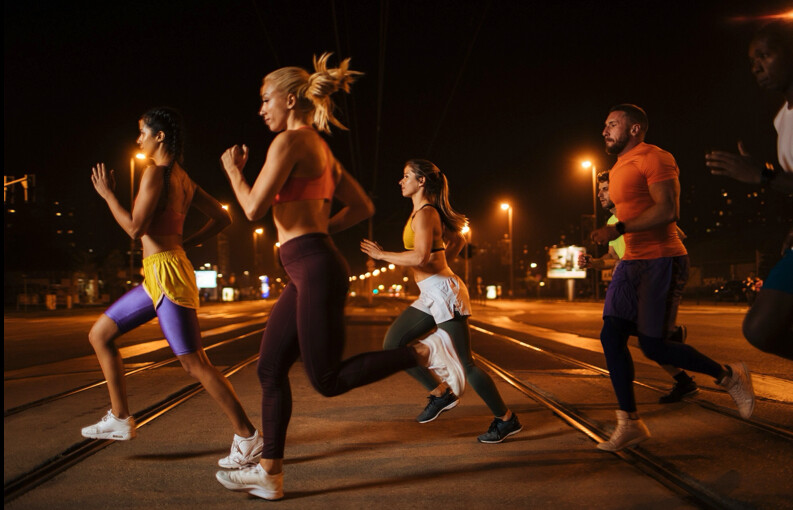
That’s what led him to join the viral run group headed by Lunge, a fitness-focused dating app for which he’d seen promoted posts plastered all over social media. The group showcased hordes of people running the streets, then hitting bars en masse afterwards. To Wilsch, it seemed like a fun way to make friends.

Except the focus on the activity at hand—running—was notably lacking. Wilsch arrived early to the group on a Wednesday evening in July. The group's organizers didn't lead a warmup, so he made time for one on his own. At about 6:50 p.m., the sizable crowd (Wilsch thought about 800 people were there, and an NBC New York broadcast report from July claimed over 1,000 people had RSVP’d to a similar event) was greeted by the run club leaders, Lunge app founder Steven Cole and group fitness instructor Rachel Lansing (Lunge Run Club organizers did not respond to requests for comment on this story). “They welcomed everybody to run club and thanked them for being there and making Lunge turn out to be something bigger than they ever expected,” Wilsch says. “Then they spoke about the app and said, ‘If you see somebody here, and you may not have the courage to go talk to them, download the app, and maybe you'll find them on there.'"
He found that most people in the crowd were outgoing and friendly, even if some seemed hesitant to jump right into mingling mode. After splitting the hundreds of people into a few
This is not how run clubs usually operate, whether they’re in NYC or elsewhere in the world. These groups have broken through run-centric subculture and entered the mainstream; Runner's World notes that Running in the USA lists 968 clubs across the country, and you can find stories about run clubs everywhere from Oakland to rural Australia. Yet it was Lunge that commanded TikTok and Instagram algorithms this summer, especially as young people yearned to meet new friends IRL amidst a “loneliness epidemic.”
There’s some logic to this for outsiders looking in; the groups consist of people sweating and getting their endorphins up doing a healthy activity together. Even better (and unlike group fitness classes at boutique studios or rec sports leagues), clubs are often free to attend or only cost a monthly fee once you become a consistent member training for a specific goal, so you don’t have to worry as much about draining your bank account while simultaneously making a few friends, leveling up your V02 max, and dropping your 5K time.
Not everyone was into this new trend, especially because of what it started to morph into. Apps and groups like Lunge pushed the idea of making
Run Club Best Practices
WHETHER A RUN club prioritizes relationship-building or PR-chasing, it'll almost always have a standard operating protocol that differs greatly from what Wilsch experienced at Lunge. There are rarely groups that large that traverse busy city streets, for one, and most will have more hands-on involvement and organization from leaders to maintain the dynamic beyond show up and jog. The run of show typically includes introductions to the coaches, pacers, and organizers and any need-to-know safety tips or other housekeeping info. Then comes an icebreaker, a warm-up, the run itself (or running workout), a cooldown, hydration, and goodbyes. In commuter cities, there’s also potentially a bag check.
Once runners hit the streets (and even in parks or on public tracks), they shouldn’t just go out in a huge group. There are cars, cyclists, and pedestrians who are on the roads too, and club members will inevitably wind up going at different paces. That’s why many run groups include two kinds of leaders guiding you through the run: pacers and sweepers. Pacers set the tone and time for the group or the smaller groups that break out according to their expected speed
Every run group, whether social-focused or PR-driven, should have structure and safety guidelines (like pacers and sweepers). But run group social dynamics exist on a much more vast spectrum. Some, like Brooklyn Track Club in NYC, are great for prepping runners for races. Others, like Martinus Evans' Slow AF Run Club, focus on inclusivity. Some even affiliate with major brands to allow members to test new gear. In any scenario, bonds are eventually formed by routine and the time spent sharing the experience. It’s a community, and the social dynamics of one persist. Some people like Amir Gamble, a 33-year-old in New York who has been running in the club scene since 2022, join multiple groups. He consistently attends two different runs depending on what he’s looking for—a few miles at a conversational pace to socialize, or focused training and track workouts. He says the groups he’s enjoyed most have established leadership and a welcoming environment, not necessarily the fastest people on the streets.
Gamble’s run sessions are much smaller than Lunge’s massive crowd of nearly 1,000 people. “That’s nearly as many as the race I just did!” he exclaimed, referring to this August’s Brooklyn Mile road race. No matter the organizers’ intentions, he worried about how anyone could safely run on busy city streets and sidewalks in such a large group.
Nearly as pertinent an issue, given Lunge’s stated mission to bring people together, is how hard it actually is to get to no anyone when a run includes hundreds of people. Many run groups count 25 runners max at a normal session, so the workout can start with everyone introducing themselves and participating in an icebreaker activity; it all takes about 15 minutes. When the group swells, that portion of the run requires more time, infringing on the run and your chances at knowing who you're keeping up with on the road. Expecting an immediate connection is like expecting that you’ll set a 10k record the first time you lace up your shoes. Friendships take work.
“Some people chat a little bit after but, usually within 10 or 15 minutes the group kind of dissipates,” Gamble says of his run groups’ social
There are some baseline expectations you should have if you attend a run club. Firstly, the group should center your safety and give you some info about what it takes to be a better runner, according to Zapotechne. “Are they providing electrolytes? Are they helping runners understand what to consider when running in the heat? Or, the safety and etiquette of running in the street in a large group? You run two across [on the street] versus 10,” she rattles off. Even groups without brand partnerships or financial resources should be providing basic running best practice information to their community.
You’ll also want to be mindful of leadership, since you’ll be trusting the coaches with your time and your safety. There are run clubs that are just small groups of friends getting together for a jog and social hour every week without a clear hierarchy—but once the group starts to include people who want to run at different speeds and tackle different goals, it becomes critical that someone takes charge and leads. Ideally, these people have extensive experience with run training and are also actively participating in the run community and culture of the area. Importantly, leaders should also make efforts to establish a safe and inclusive environment within their club. “I think a green flag when it comes to co-ed running groups is when you see both male and female leadership,” Zapotechne says.
Beyond road safety, and with the rise of run club culture via social media in particular, Zapotechne points out the importance of acknowledging boundaries among members. “I did a lot of workshops and training with my staff around what was appropriate and not appropriate, and we had to have (sometimes many) conversations around boundaries when it comes to interactions [with club attendees],” she notes. This includes more obvious things like physically touching, like hugging after runs or unsolicited help with stretching, and murkier territory like when it's inappropriate to send DMs and texts. You should know that if you join a run club and immediately start receiving unsolicited messages—especially from those in charge—something is off. “If you're in a leadership position, you don't slide in the DMs of people that are showing up to your group. That could be a pacer, crew runner, captain or coach. You're not there to date the people who come to your running group,” she says.
A good way to ID a run club that is more focused on sport and movement is to check out the way they communicate their training plans on social media. Do they use terminology like intervals, fartleks
(10/20/2024) Views: 41 ⚡AMPby Men’s Health
Yehualaw breaks Amsterdam course record, Getachew regains title
Yalemzerf Yehualaw returned to winning ways at the TCS Amsterdam Marathon, winning the World Athletics Platinum Label road race in a course record of 2:16:52 on Sunday (20).
Tsegaye Getachew made it an Ethiopian double as he regained the title he won two years ago, winning the men’s race in 2:05:38 in a close finish from compatriot Boki Asefa.
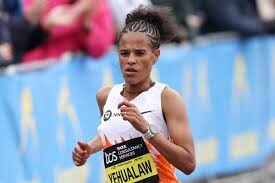
Yehualaw, winner in London two years ago, was looking to rebound following her eighth-place finish in the British capital earlier this year. The 25-year-old set out with clear intent, passing through 10km in 32:23 before breaking away from her last remaining challenger, Bahrain’s Desi Jisa, and reaching the half-way point in 1:08:00.
Jisa managed to hold on to second place through half way, which she reached in 1:08:14, 30 seconds ahead of Haven Hailu, Winfridah Moseti and Bedatu Hirpa. But the chase trio managed to catch the Bahraini runner at 25km (1:21:15).
By this point, Yehualaw had a lead of almost a minute and was showing no signs of slowing down. She passed 30km in 1:36:23, 63 seconds ahead of Hailu and Moseti, and continued to pull away from the field.
The former world 10km record-holder went on to finish in 2:16:52, chopping 28 seconds from the course record set two years ago by Almaz Ayana. Moseti’s challenge faded in the closing stages, leaving Hailu to finish second in 2:19:29. Moseti was third in 2:20:27, just three seconds ahead of her fellow Kenyan Gladys Chesir.
The course record may never have been in jeopardy in the men’s race, but it was highly competitive throughout. A pack of 15 runners passed through 10km in 29:27 and 14 of those were still together at half way, which was reached in 1:02:31.
Getachew, the 2022 winner, was among the large lead pack, along with fellow Ethiopian Asefa, world silver medallist Maru Teferi of Israel, and Kenyan trio Justus Kangogo, Kennedy Kimutai and Felix Kipkoech.The pack started to whittle down throughout the second half, but three men – Getachew, Asefa and Teferi – entered Amsterdam’s Olympic Stadium just a few strides apart from one another.
Just as he had done two years ago, Getachew proved to have the stronger finish as he held off his opponents to win in 2:05:38. Asefa was a close second in 2:05:40, just two seconds ahead of Teferi.
(10/20/2024) Views: 59 ⚡AMPTCS Amsterdam Marathon
Do you want to enjoy Amsterdam in October and all that the city has to offer you? Want to feel a real athlete and start and finish in the historic Olympic stadium? Or run across the widely discussed passage under the beautiful National Museum? Then come to Amsterdam for the annual TCS Amsterdam Marathon in October! The TCS Amsterdam Marathon...
more...Cian Oldknow and Glenrose Xaba eye glory at Sanlam Cape Town Marathon
Running seasons don’t come as brilliant as the ones both Cian Oldknow and Glenrose Xaba had, do they? And it could well get better for them at the Sanlam Cape Town Marathon tomorrow (Sunday).
National champions in the marathon and half marathon respectively, the two athletes have run like the wind in 2024 as they broke personal barriers even they probably did not think possible.
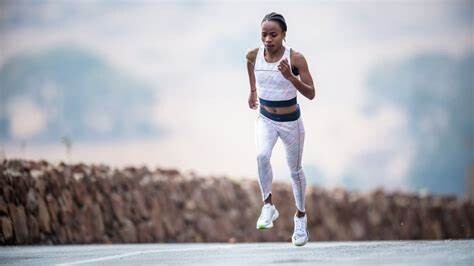
Such are the rewards for talented individuals who refuse to rest on their laurels just because they are gifted but instead work hard at improving themselves that the duo have arguably sparkled the brightest of all road running athletes in South Africa this year.
Oldknow, who runs in the purple and yellow colours of the Hollywood Athletics Club, made her full marathon debut in Seville back in February where she ran a scintillating 2:25:08 – the second fastest time by a South African female. Most impressive about that run was Ms PB’s consistent splits, an illustration of her calmness under pressure as she stuck to her race plan like a seasoned campaigner.
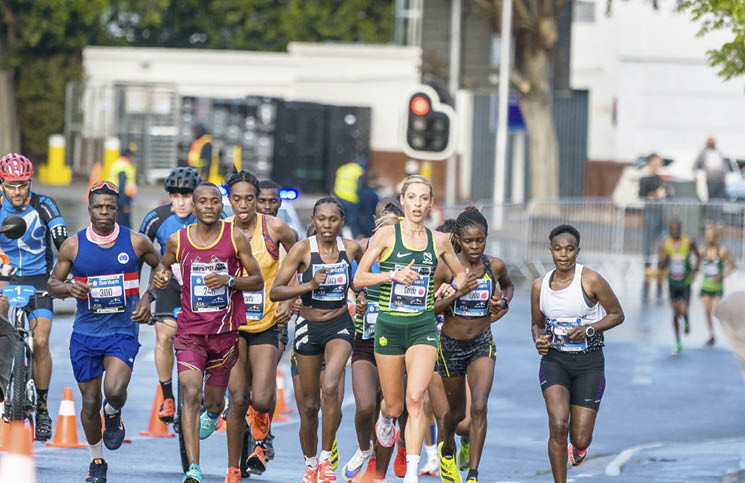
Proof that Oldknow was good for the 42.195km distance was further provided when she clinched the national title at the Durban International Marathon with a solid 2:29:46. She put the cherry on top of her marathon debut season by being the first South African to finish the race at the Paris Olympics, Oldknow crossing the line ahead of seasoned campaigners Irvette van Zyl and Gerda Steyn.
Xaba, meanwhile, dominated the 10km scene this year with the clincher of her season being that she won the Spar Grand Prix Series. The popular women’s series has been the preserve of foreign runners for the last six years with Ethiopian Tadu Nare dominant after Namibia’s Helalia Johannes won it twice.
The Boxer Athletic Clubs starlet was actually the last local runner to win the Series back in 2018. Perhaps more telling of the kind of season Xaba had is the fact she broke Elana Meyer’s two-decade long 10km record. Add to that the fact she retained her national half marathon title and you begin to understand just why 2024 will go down as an episode in Xaba’s glittering career never to be forgotten.
And it is about to get even more memorable as Xaba makes that long-awaited graduation to the full marathon in Cape Town tomorrow.
How she will measure up against Oldknow who has already shown herself to be a superb marathoner is the main attraction of the popular Mother City race, as it continues its quest to be included on the World’s Abbotts Major Marathons.
Certain to spice up the Xaba/Oldknow ‘duel’ is the fact that the organisers have dangled a US$5000 carrot for the South African marathon record. Oldknow has already shown she has it in her to unseat Gerda Steyn as the fastest marathoner in the land with that brilliant time of hers in Seville. What we don’t know is how Xaba can do in the longer distance.
But she has been hard at work preparing for this race and while she has said she is looking to have a memorably fun debut, such is her competitiveness that you can bet on Xaba running a pretty fast time.
The two of them will be helped in their quest to break the national record by the stellar women’s field of top class internationals they will be racing against.
Tsige Haileselassie, who won with a personal best of 2:24:17 last year is back to defend her title and that can only mean a fast women’s race.
Who between Oldknow and Xaba will be able to keep up with her is what makes tomorrow’s race such an exciting prospect. Whichever way it goes though, the two starlets are each sure to chalk up 2024 as a fantastic season.
(10/19/2024) Views: 91 ⚡AMPby Matshelane Mamabolo
Cape Town Marathon
The Sanlam Cape Town Marathon is a City Marathon held in Cape Town, South Africa, which is sponsored by Sanlam, the City of Cape Town and Vital Health Foods. The marathon is held on a fast and flat course, starting and finishing in Green Point, near the Cape Town Stadium. Prior to existing in its current format, the Cape Town...
more...Natasha Wodak hoping to surprise herself at Toronto Waterfront Marathon
The TCS Toronto Waterfront Marathon (TWM) returns on Sunday, doubling as the Canadian Marathon Championships. For our Canadian elite athletes, Sunday’s race provides a chance to qualify for the marathon at the 2025 World Athletics Championships, to be held in Tokyo. Canadian record holder Natasha Wodak will toe the line in Toronto for the first time in 11 years, setting her sights on her first-ever Canadian marathon title.
Wodak made her marathon debut here in 2013. The 42-year-old from Vancouver has been on a golden streak this year, winning the Vancouver Half Marathon in June and Vancouver’s Eastside 10K in September. But earlier this year, she fell short of her goal to qualify for Canadian Olympic team after completing four marathon builds and taking three attempts at the race in the span of 18 months.
“The marathon is a beast”
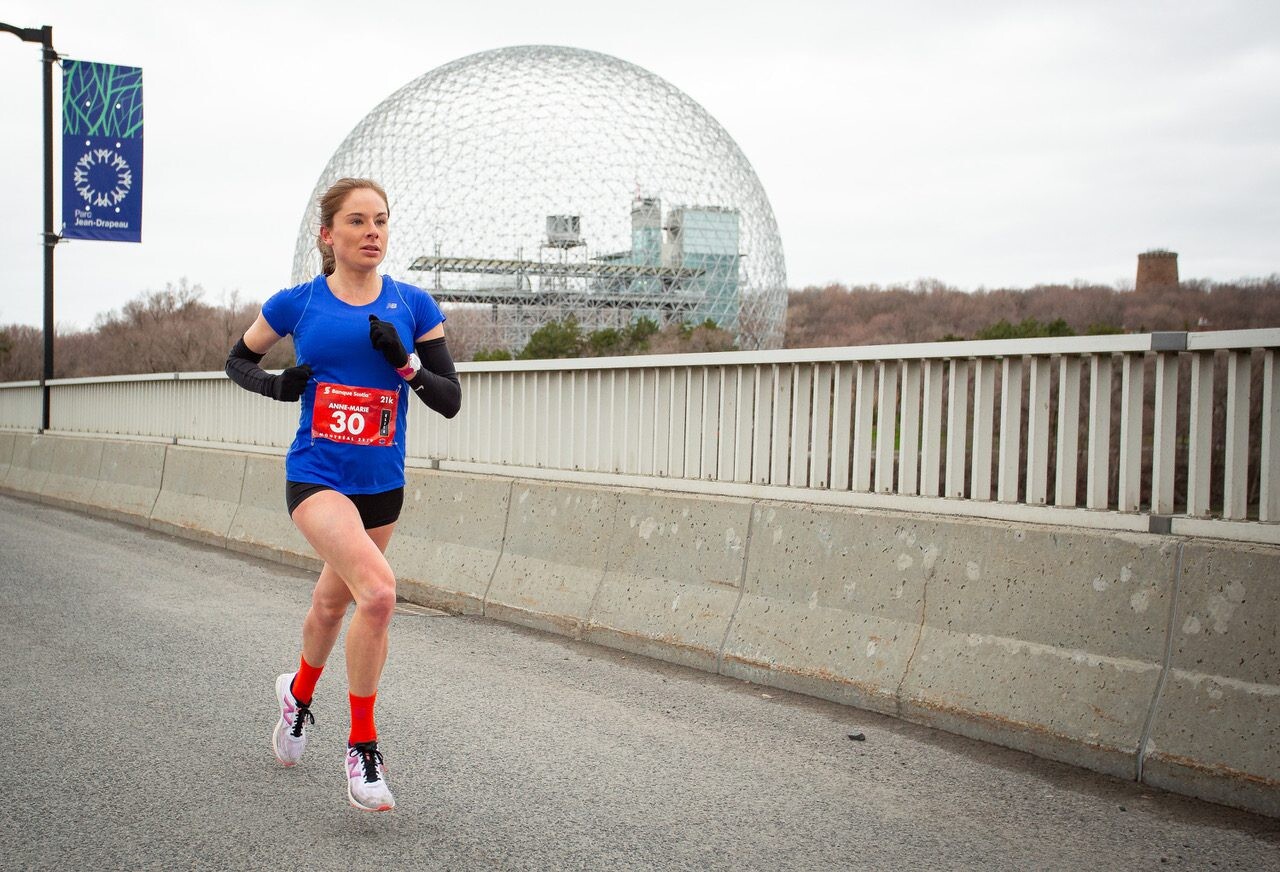
“Nothing is guaranteed,” Wodak says. “Never in a million years would I have thought that after running 2:23:00, I wouldn’t be able to come within four minutes of that, four different times in 18 months.” Wodak completed the 42.2K event at the 2023 Budapest World Championships, 2024 Houston and Hamburg marathon events, falling short of the Olympic standard each time, and had scratched from the 2023 London Marathon after coming down with a stomach bug. “The marathon is a beast; you’ve got to have the right day, the right fitness, the right weather–everything has to click on the right day.”
The two-time Olympian holds a personal best of 2:23:12, which has stood as the Canadian record since the 2022 Berlin Marathon. “The A goal is to win the Canadian marathon championships,” she says, hoping to add that title to her already impressive resume. “Everyone wants to be a national champion.”
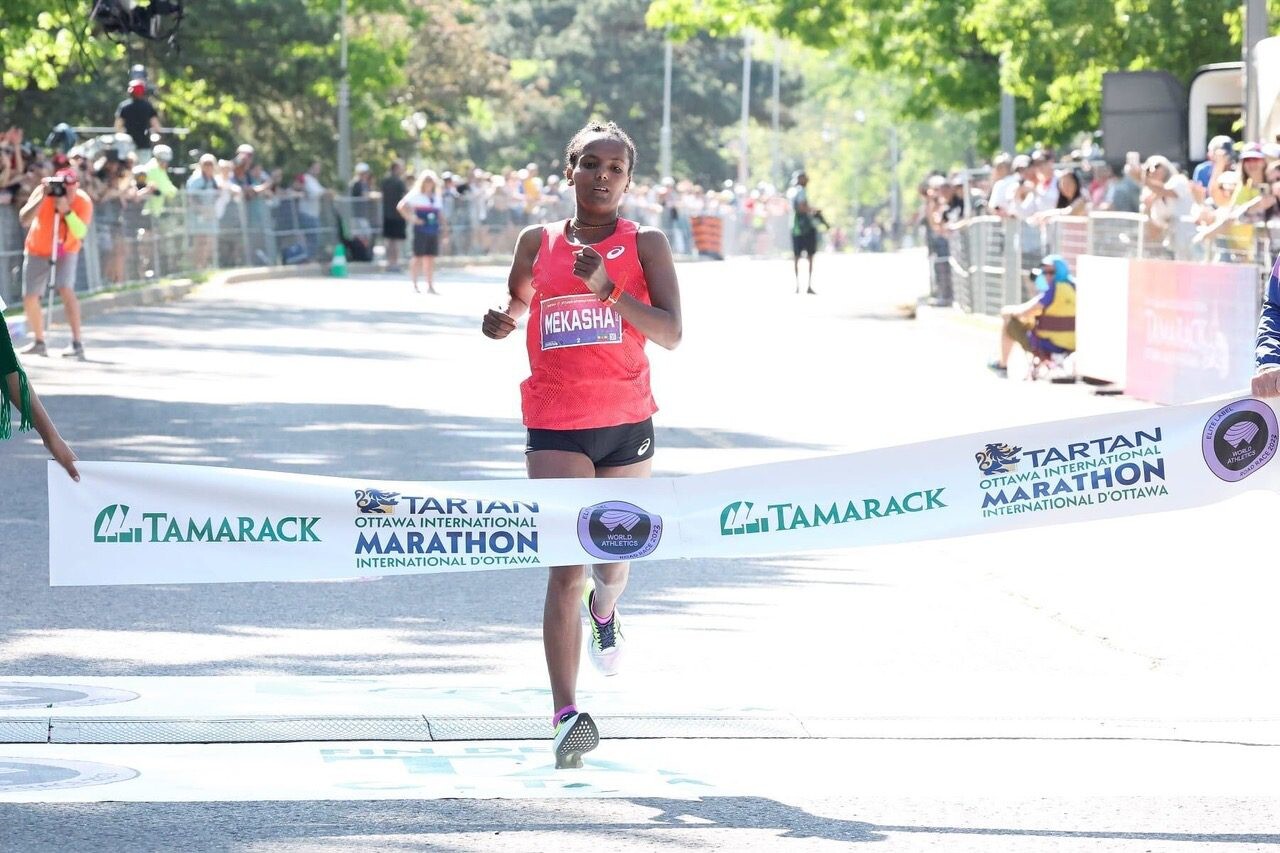
After steering away from her original plan to race at the Valencia Marathon, Wodak is taking a different approach at Toronto’s big-city race; she can finally enjoy racing in Canada in front of family and friends without the pressure of hitting the Olympic standard. She adds that the generous prize purse offered by TWM was an incentive. She revealed she plans on starting out conservatively, with the hope of having a fast second half. “I’ll go out at 2:25 to 2:26 pace, and hope to catch a few of the women who go out too hard,” she says. “It would be really nice to place in the top three. If all goes well, maybe I can surprise myself and others by having a really fast last 10K.”
After her attempts to qualify for Paris 2024, Wodak says she has learned not to take anything for granted. She says she began to jump into workouts with friends, running because she wanted to and doing what felt good. “I did enjoy the process over time, so I have no regrets,” she says. “It’s a privilege to do this.”
Erin Mawhinney to make marathon debut
Defending TWM half-marathon champion Erin Mawhinney will be doubling her usual distance to make her first-ever attempt at 42.2K. The 28-year-old, a two-time winner of the Under Armour Toronto 10K, has been slowly building up her mileage while training for the past three years with coach and two-time Olympian Reid Coolsaet; at the peak of her build, she reached 190 km in one week–quite a contrast to the maximum of 43 km she used to run weekly in university. The increase in mileage means increased time dedicated to training, adding to her already-busy schedule; the Hamilton native works full-time as a nurse, with the occasional night shift. “My apartment is a mess all the time, and I’m always out of groceries, since I’m eating more to support that mileage,” she says.
“You go in a little bit blind,” Mawhinney says. “You can sort of predict from the half-marathon what might happen, but it’s also a completely different event.” Her half-marathon best stands at 1:11:50, which she ran in March. “Somewhere in the low 2:30s would be a great day, but I’m mostly just excited to try out a marathon.”
Anne-Marie Comeau to seek redemption
Anne-Marie Comeau of Saint-Ferréol-les-Neiges, Que., is the reigning Canadian Marathon Championships silver medallist; the 2018 winter Olympian in cross-country skiing led for 42.1 kilometres of last year’s race before being passed by Quebec City’s Caroline Pomerleau, who nabbed the title. Comeau, who is 28, struggled over the last 10 km, and aims to pack her pockets with gels this year to avoid fading in the final stretch. “I had a rough year,” she says. “I’ve done a lot of marathon builds without actually racing.” Comeau was set to race the Houston Marathon and the Boston Marathon, but had to scratch from both, first due to Covid, and then to a shoulder dislocation while skiing.
Finally getting the chance to race, Comeau has set big foals for herself. “I want to get a personal best,” she says. “My marathon PB (2:34:51) is from last year on this course. I’m going to start a bit slower, at 2:31 to 2:32 pace, and see if I’m able to push harder toward the end.”
International field
Waganesh Mekasha of Ethiopia has her eyes set on the course record this year. The 32-year-old holds a personal best of 2:22:45 from the 2019 Dubai Marathon and took second in Toronto last fall, with a time of 2:23:12. “I enjoyed the race last year,” she says. “The course was great. The pacer dropped early and it affected us.” Her best time sits just off the course record of 2:22:16. The 2023 Ottawa Marathon champion feels as though she has prepared even better than last year. “If the pace goes out well and the weather is good, the course record is possible,” she says.
Ethiopia’s Roza Dereje comes into the race with the fastest personal best in the women’s field (2:18:30), and will also be fighting to take down the five-year-old course record. “I’m ready and prepared to challenge the course record,” she says. Dereje, 27, finished fourth in the marathon at the Tokyo Olympic Games, and became a mother in 2023. This is her first time visiting Canada.
For the first time in the race weekend’s history, the 5K race, traditionally held on the same day as the marathon and half-marathon, has been moved to Saturday; the race has already raised more than $3,000,000 for the TCS Charity Program.
How to watch
The 2024 TCS Toronto Waterfront Marathon and Canadian Marathon Championships can be streamed on Sunday, Oct. 20, on World Athletics Inside Track, CBC Sports, or the CBC Gem app. The TCS Toronto Waterfront Marathon is one of the first North American marathons to be featured on the WA Inside Track worldwide feed. This year, 30,000 participants from 70 countries will take part in Toronto’s race weekend (a record). All runners can be tracked using the official TCS Toronto Waterfront Marathon app, available for download on the App Store and Google Play.
(10/19/2024) Views: 91 ⚡AMPby Cameron Ormond
TCS Toronto Waterfront Marathon
The Scotiabank Toronto Waterfront Marathon, Half-Marathon & 5k Run / Walk is organized by Canada Running Series Inc., organizers of the Canada Running Series, "A selection of Canada's best runs!" Canada Running Series annually organizes eight events in Montreal, Toronto and Vancouver that vary in distance from the 5k to the marathon. The Scotiabank Toronto Waterfront Marathon and Half-Marathon are...
more...Kenyan parliament demands U.S. journalist apologize for marathon world record question
It’s been five days since Kenyan distance runner Ruth Chepngetich stunned the distance running world at the 2024 Chicago Marathon, not only breaking the previous women’s world record but also becoming the first woman to run sub-2:10—something many thought was impossible. At the post-race press conference, Chepngetich faced a pointed question from Let’sRun.com journalist and founder Robert Johnson, who asked what she would say to those who believe her time of 2:09:56 is too good to be true.
Chepngetich, shocked by the question, responded, “I don’t have any idea. You know people must talk but…people must talk so I don’t know.”
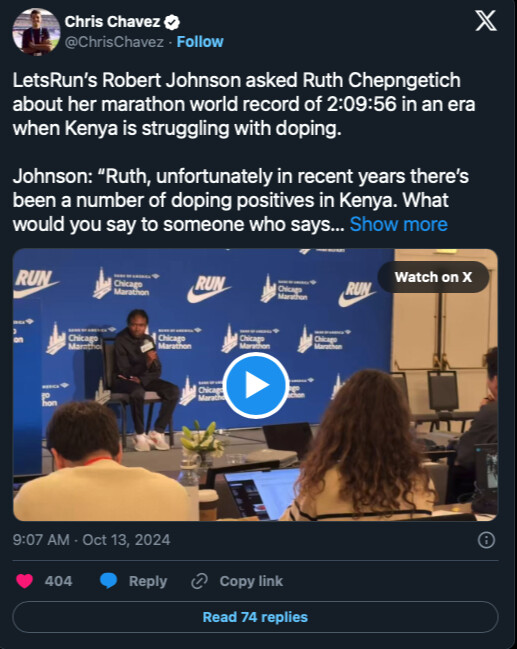
The clip made found its way to Athletics Kenya and the Kenyan parliament, which now insists that Johnson apologize to Chepngetich.
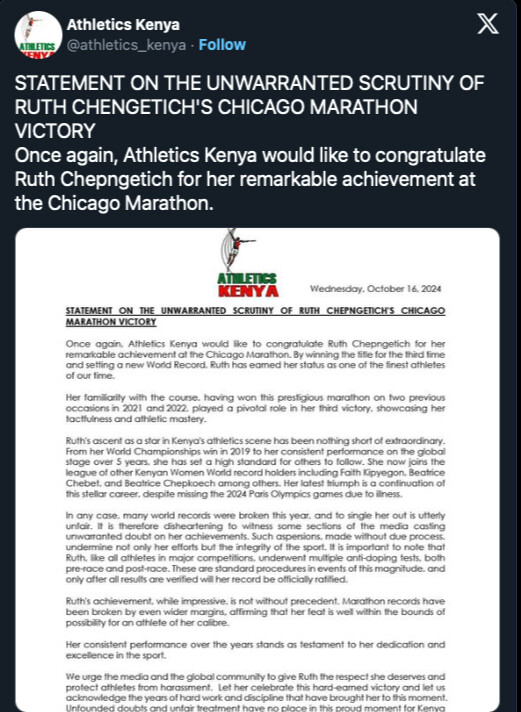
“Honourable Speaker, I urge the Cabinet Secretary for Sports; Athletics Kenya and the Kenyan Anti-Doping Agency to stand up for our athletes and demand an immediate an unequivocal apology from Robert Johnson and others who have shamed our athletes. […] I know that were it an American athlete, that question would not have been posed,” said Hon. Gladys Boss, an M.P. representing Uasin Gishu County (incl. Eldoret).
The response
Johnson replied to the demands on social media, doubling down on his initial question. “Apologize? For what? I didn’t accuse her of doping. I asked her what she would say to those who think her performance is too good to be true and proactively gave her the opportunity to get ahead of the cynics.”
Many have spoken up in Johnson’s defence, given Kenya’s recent history with doping violations; the country has more than 100 athletes currently serving doping suspensions on the Athletics Integrity Until (AIU) Global List of Ineligible Persons.
“I do wish she had an interpreter. But it’s a fair question, given the nature of what we saw,” said American marathon coach James McKirdy on X. “It’s either the greatest running achievement in history…or… it’s drugs. Given that there are over 100 currently suspended athletes from Kenya, the questioning of the result is valid.”
“Kenya has an extensive recent history of high-profile doping busts. It’s a perfectly appropriate subject to raise with an athlete who had such an outlier performance, and the question was in no way accusatory or abusive,” another person replied on X.
Athletics Kenya statement
On Tuesday, Athletics Kenya issued a statement congratulating Chepngetich on her achievement and defending the newly-crowned women’s marathon world record holder:
“It is preposterous to cast aspersions on a seasoned winner like Chepng’etich, who has upheld integrity and hard work throughout her career. In any case, many world records were broken this year, and to single her out is utterly unfair. It is therefore disheartening to hear some sections of the media casting unwarranted doubts on her achievements. Such aspersions, made without due process, undermine not only her efforts, but the integrity of the sport.”
The statement adds: “It is important to note that Ruth, like all other athletes in major competitions, underwent multiple anti-doping tests, both pre-race and post-race. These are standard procedures in events of this magnitude and only after all results are verified will her record be officially ratified.”
Athletics Kenya described the 2019 world marathon champion as an elite athlete who has earned her stripes with a number of solid performances, including wins at two previous editions of the Chicago Marathon. “Her familiarity with the course, having won this prestigious marathon in 2021 and 2022, played a pivotal role in her third victory, showcasing her tactfulness and athletic mastery. Her latest triumph is a continuation of this stellar career, despite missing the 2024 Paris Olympics due to illness,” the federation said.
(10/19/2024) Views: 59 ⚡AMP'Micro-Walks' Could Burn More Calories Than Longer Ones. Here's How Long You Should Be Walking For
A new study just discovered the benefits of shorter strolls.
For years, doctors have stressed the importance of being active during your day—after all, research has found that sitting for too long raises your risk of a slew of serious health conditions, including cardiovascular disease and type 2 diabetes. But the idea of going for hour-long walks can be overwhelming. Now, new research suggests you don’t need to jam in a massive stroll into each day: Instead, you can go for “micro-walks.”

That’s the main takeaway from a study published in Proceedings of the Royal Society B, which found that micro-walks may be even better for you than long ones. Here’s the deal.
What are ‘micro-walks’?
In this study, a “micro-walk” is defined as walking between 10 and 30 seconds at a time (with breaks in between your next walk).
Are ‘micro-walks’ more beneficial for your health? Why?
It depends on how you’re looking at it. In this particular study, volunteers walked on a treadmill or climbed a short flight of stairs for different periods of time, ranging from 10 seconds to four minutes. The study participants wore masks to measure their oxygen intake (which can be used to calculate energy or calorie consumption).
The researchers discovered that people who walked in short bursts used up to 60 per cent more energy than longer ones, despite the walks covering the same distance. (The more energy you expend, the more calories you can burn.)
Basically, you may be able to rev up your metabolism and burn more calories if you do short bursts of walking versus longer cruises around.
Albert Matheny, RD, CSCS, a co-founder of SoHo Strength Lab, says there’s something to this. “Getting activity throughout the day, in general, is better for people,” he says. “It’s better for circulation, mental health, and digestive health.”
You’re also more likely
(10/19/2024) Views: 52 ⚡AMPby Women Health magazine
Who Has Stronger Legs – Runners or Cyclists? We Asked Experts to Find Out
Both endurance activities are great for cardiovascular health, but which is better when it comes to building lower limb strength?
Ever found yourself in a debate with your friends about which sport is better: running vs cycling? Perhaps you've squabbled over which sport makes you fitter, or even, who has stronger legs – runners or cyclists?
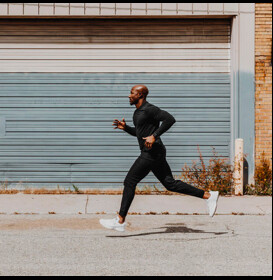
Well, next time you find yourself in a quarrel over that latter point, you might want to reference this very article.
To find out how each sport works our leg muscles differently, leading to differing strengths and physiques between runners and cyclists, we asked Dr Robin Chatterjee, consultant in musculoskeletal, sport and exercise medicine at Chelsea Outpatient Centre, part of HCA Healthcare UK, for some answers.
We also caught up with Jack Hutchins, pro triathlete and coach at Scientific Triathlon, to find out how incorporating cycling into your training week may help to improve running performance and reduce the risk of injury.
Which leg muscles do running and cycling use?
Broadly speaking, running and cycling are lower-limb forms of exercise and use the four main leg muscle groups: quadriceps, calves, glutes and hamstrings. But the action of each works them in different ways.
When pedaling, cyclists use the quads and the glutes to produce power – the quads just before the top of the stroke through to the bottom, while the glutes contribute to generating power while also stabilizing the hip. The hamstrings take care of six o’clock to nine o’clock of the pedal stroke and keep the knee stable when the leg is fully extended, while the calves help with ankle stability.
'The most important muscles [for cyclists] are the quadriceps – the muscles at the front of your thighs,' says Chatterjee. 'Cyclists often have these massive upper thighs – the reason is the constant pedalling action that leads to the over-development of the quads compared to the hamstrings or the glutes.'
It’s why cyclists’ legs
Moreover, strength imbalances are commonly the cause of injuries, so for example quad dominant runners are more susceptible to patellofemoral pain syndrome (more commonly known as runner’s knee) due to increased stress on the knees.
What other leg muscles are involved in running and cycling?
Aside from the key leg muscle groups, both forms of exercise require many more intricate muscles and tendons to keep you moving forward. The main supporting cast that running uses are:
Tensor fasciae lata (TFL), a hip flexor muscle that connects your pelvis to your IT band (which runs down the outside of your leg) and is recruited whenever you raise your leg up or out. It keeps your knees aligned as you drive forward and stabilizes the hips and pelvis as you lift each leg.
Tibialis posterior, a muscle that runs from the back of your shin to your foot via your inner ankle bone and provides your foot with stability and drive.
The flexor digitorum brevis, a muscle on the sole of your foot that provides flexion of your four smaller outer toes, aiding balance, weight distribution and forward momentum.
Cycling, meanwhile, recruits muscles including:
Adductor magnus, the largest groin muscle that extends
It's worth mentioning that the two forms of exercise also develop different fibers within our muscles at different ratios.
'We all have fast-twitch and slow-twitch [muscle] fibers and the ratio alters based on your activity,' explains Chatterjee. Every skeletal muscle (those used to move your bones) contains both fast and slow-twitch muscle fibers; the former is used for rapid, explosive movements like sprinting or jumping, while the latter is endurance-focused.
'Cyclists have [more] fast-twitch fibers – that type of muscle that generates power, which you need for sprints, climbs or long distance cycling. Whereas runners have [more] slow-twitch fibers, which are more fatigue resistant and better for endurance running.'
Is cycling a good form of cross training for runners?
Pro triathlete and coach Jack Hutchins says that integrating cycling into a runner's training can have myriad benefits.
The performance benefit, says Hutchins, is the result of an increased training load – in terms of both volume (duration) and intensity (how hard). If you’re just relying on running to do this, it can be difficult, particularly if your legs aren’t conditioned to ramp up the training load or you’re injury-prone. While beneficial for improving fitness and
'These long-duration workouts on the bike create significant metabolic stress and elicit some really good physiological benefits because you accumulate fatigue metabolites. The fitness transfers are not just cardiovascular – cycling uses similar muscle groups but recruits muscle fibers in a different way. You could do it [create the same training effect] by doing loads of double run days, but by having those one or two three to four hour sessions a week in your schedule, you get that different and additional stimulus you can't really get running.'
Hutchinson points out that long rides can even be fun! 'On a bike, you can get out and explore all day, which is good fun and stop for lunch. If athletes can incorporate a training session into a nice day out, they will probably do more training.'
If you don't own a bike, though, or you are a nervous cyclist, you can elicit the same training benefit by using an indoor bike or turbo trainer.
The way in which you fit sessions into your run training will depend on what your running goals are for the year but Hutchins suggests using cycling as part of building your base fitness before embarking on a training plan.
'Rather than doing loads of run volume all-year round, you can be a little bit more precise and use more cross training in the winter, base season or build phase and then save that increase in run volume for the competition or specific [phase] as you're leading into your big 'A' race.'
Chatterjee does, however, caution that while combing the two may reduce the risk of injury for some, be mindful that it's not a magic bullet as, in doing so, 'you are taking on the risk of injury from both [sports]', citing buttock pain and lower back pain as niggles sometimes seen in cyclists.
(10/19/2024) Views: 46 ⚡AMPby Runners World
Runners have gone wild in the current boom, increasingly hitting the trails and embracing ultra distances
that immerse us in nature, where mile splits matter far less than the experience of respondents to a 2024 Runner’s World survey have run an ultramarathon.
65%
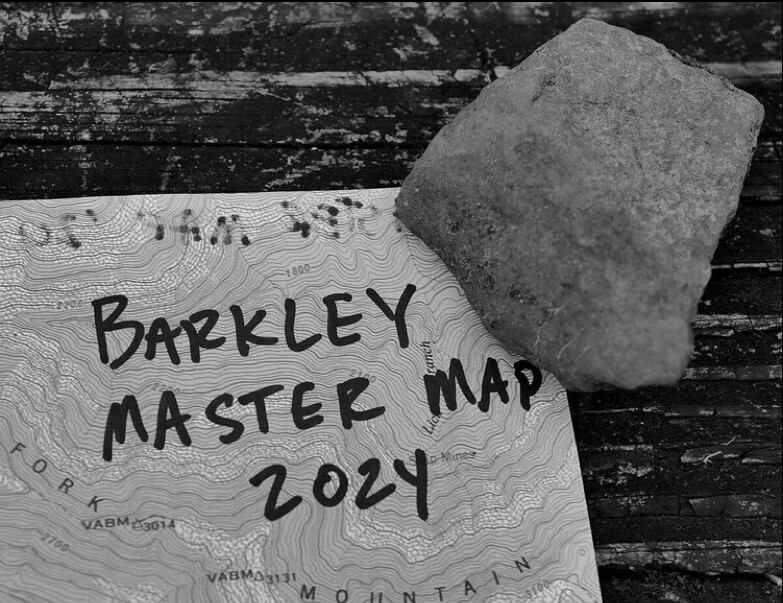
of those ran their first ultra in the past five years.
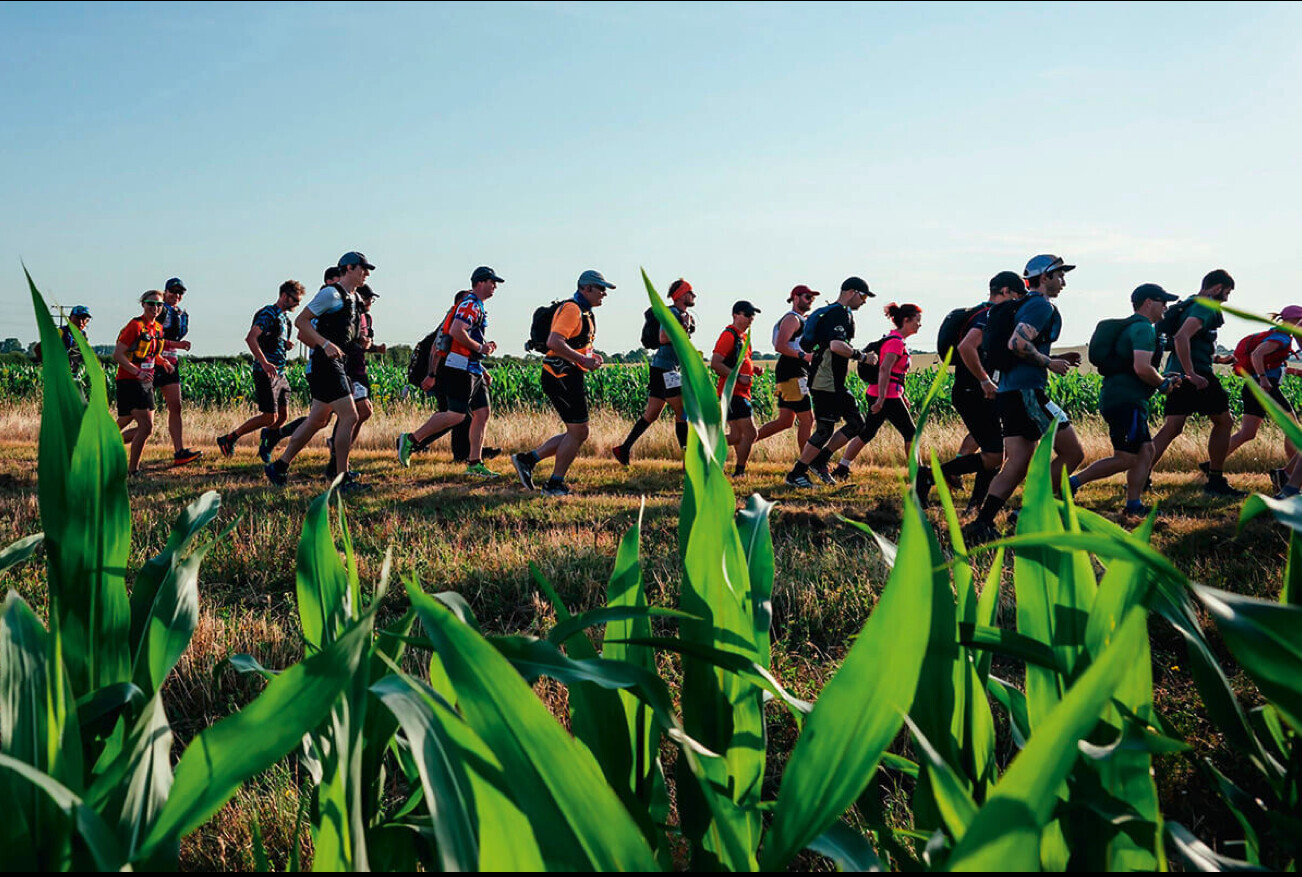
33%
said that they’re planning to run or considering running an ultra in the next two years.
‘It definitely feels more people are running trail and ultra, certainly post-Covid. The scene is really exciting with more races (and more accessible races), more brands, more sport-specific media, more younger, faster runners and more women – but they’re still a minority. Black Trail Runners and others are doing great work to make the scene more diverse. It’d be great to see more diversity, more accessibility and gender equality.’
Damian Hall, author and record-breaking ultrarunner236%
The year-on-year increase in internet searches for the Barkley Marathons from August 2023.
61%
of those surveyed by RW are interested or may be interested in following the big ultra races, such as the Barkley Marathons, Spine and Ultra-Trail du Mont-Blanc. 34%
This year’s increase in registrations for the Ultra-Trail du Mont-Blanc World Series Finals, compared with 2023. Demand is two to three times higher than max capacity.
43
Events in UTMB World Series in 2024, in Asia, Oceania, Europe, Africa and the Americas.
$7.3 billion
The value of the global trail running shoes market in 2022, according to a report by Allied Market Research. Up from $1.38bn in 2016, according to data from Grand View Research.
$12.4 billion
Predicted value of the global trail running shoes market in 2032, according to Allied Market Research.
30%
Year-on-year increase in numbers for the Montane Spine races. ‘The Montane Spine has expanded with more races within the events and more locations. We’ve had to organise other races to keep up with demand because the Montane Spine races continue to consistently sell out. We’re seeing people looking for ultramarathons to help with their mental health.’
Phil Hayday-Brown, founder of the Montane Spine Race
63%
The year-on-year increase in participants at Black To The Trails, with a waiting list operating for 2024’s sold-out event. 58% of runners were people of colour, with 14 of the 19 UK ethnic categories represented; 70% of participants were women.‘The Black Trail Runners community continues to grow daily with thousands of followers in the UK and globally, we’re a registered community and campaigning charity with the mission to increase the inclusion, participation and representation of people of Black ethnicity in trail running. If you want to see a more ethnically diverse sector, you can join us to help us do that – you don’t need to be of Black ethnicity to support the work that we do.’
Sabrina Pace-Humphreys, ultrarunner and co-founder of Black Trail Runners
5,252%
Growth in trail races with 500 or more participants in the 10 years leading up to 2022, according to RunRepeat. 11%
The year-on-year increase in runners on Strava completing at least one ultra, according to 2024 Strava data, growing at the same rate for men and women.
10% year-on-year increase in 50Ks.16% year-on-year increase in 50-milers. 14% year-on-year increase in 100Ks.
1,676% increase in ultra participation between 1996 and 2018, according to a recent report from RunRepeat, with numbers rising from just 34,401 to 611,098.
5,590 races
on the International Trail Runners Association calendar between January and August 2024: a 458% increase from the 1,002 races planned a decade ago.
49%
of respondents to the RW survey who run on trails started trail running within the past five years.
231%
Growth in trail running worldwide in the decade leading up to 2022, according to RunRepeat research. ‘All our events have been sell-outs the last couple of years. The Tolkien Trail Race sells out 500 entries in under an hour, and we’re noticing races fill up quicker and quicker each year. Trail racing has the least barriers to compete, with less emphasis on times than road racing, which can be intimidating. There’s an element of adventure, a test of endurance and the release of being in nature that’s evidently being enjoyed across ages and genders.’
Chris Holdsworth, race director for Pennine Trailsitting the trails and embracing ultra distances that immerse us in nature, where mile splits matter far less than the experience
(10/19/2024) Views: 67 ⚡AMPWhat the elites eat: Marathon Edition
Curious about what elite marathoners eat to fuel their peak performance? From carb-loaded pre-race meals to post-race burger feasts, here’s an inside look at what the elites eat before, during, and after a marathon.
As runners and human beings, we’re naturally curious, slightly nosy people. With information instantly available with the twitch of a finger across our iPhone screens, this curiosity has never been easier to satisfy. Plus, many of our favorite runners are more transparent than ever about their training blocks, pulling back the blinds through social media to show what it takes to be the best. Which is why we’re ever-fascinated by the race-related nutrition strategy of elite runners, who often perform at superhero-like levels.
We asked a few elite marathoners what they eat surrounding race day—pre-race dinner, pre-race breakfast, and post-race celebration—so you don’t have to.
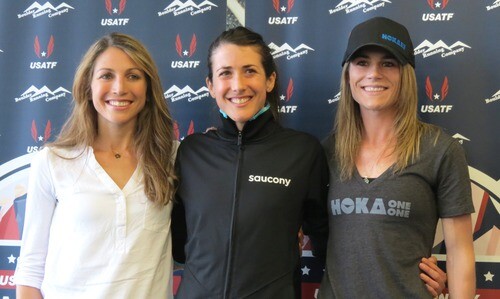
Note: One sentiment echoed among all of the athletes interviewed was that their diets are personal and have gone through lots of trial-and-error to be finessed to their specifications. No lifestyle should be replicated exactly.
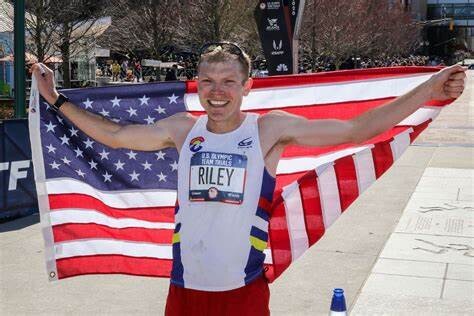
35, Boulder, Colorado
About him: First American and ninth overall finisher in the 2019 Chicago Marathon (2:10:36). Placed second at the 2020 U.S. Olympic Trials Marathon (2:10:02); Finished 28th in Tokyo Olympics marathon (2:16:26). After a second round of double Haglund’s surgery in 2022, he’s back in top form and running the 2024 New York City Marathon on November 3.
The night(s) before a race:
“I start thinking about meals two nights out, and I go carb-heavy on both. For the first night, I like to have Thai food, usually a noodle dish, and a side of rice. The only thing I’ll really avoid is spice since I’ve had issues from it a couple times. The night before, I do pasta, usually a marinara (that’s what a lot of races provide for the elite athletes), but a good pesto sauce works well, too. I mostly stay away from the creamy sauces. I don’t like to get too much more specific—you never know exactly what’s going to be available, so I try not to make particular foods part of my routine.”
Race morning:
“Race mornings I’ll get up at least three hours before (I prefer four, but with 7 to 8 A.M. starts, that becomes a little counter-productive), I’ll go for a short walk with some skipping or something, just to get the body moving. My first choice for breakfast is oatmeal with peanut butter, honey, and a little fruit mixed in. And at least one, usually two cups of coffee. It’s not something to avoid, but I recommend making sure that you have more than just simple carbs (cereal, muffin, etc), I find that if there isn’t at least some protein, I start getting that ‘empty’ feeling during my warmup, and if that mixes with the adrenaline, I feel real queasy. If I’m taking gels, I take one on the start line, maybe five minutes before. I also like Generation UCAN, which I’ll sip as I’m going through my drills, maybe half an hour out.”
During the race:
“I like to get my calories from gels and have just electrolytes in my bottles. Most major marathons provide drink stations every 5K, and I’ll drink about 8-10 oz of SOS per bottle (there can be splashing, and you never get it all out). I’ll take Roctane gels before every other drink station (every 30 minutes or so).”
Post-race meal:
“Most races I want a hash—lots of potatoes with some eggs, bacon, cheese, and veggies all mixed up, but after marathons my stomach takes a while to settle down, so I’m more in a lunch mood. So my go-to post-race meal is a big bistro bacon cheeseburger, ideally with an onion ring and barbecue sauce, side of fries, and a beer. I mostly stay away from fried foods during a build up, but I always take at least a week off after a marathon and at this point, that beer and burger is almost a Pavlovian ‘vacation time’ signal for my whole body.”
41, Flagstaff, Arizona
About her: She’s the fourth-fastest American woman in history based on her personal best (2:20:2) at the 2020 Marathon Project; Second-fastest American female half-marathon runner and former American record-holder (1:07:15). Most recently, she was 18th overall and the women’s master champion in the 2024 Chicago Marathon (2:30:12).
The night(s) before a race:
“Rice with chicken. I skip the veggies to not risk having to make a bathroom stop in the race.”
Pre-race breakfast:
“Two scoops of UCAN energy powder with whey protein, and a little bit of almond butter.” Bonus, Hall credits her husband, Ryan Hall, as being the best coffee maker, brewing pour-over, medium roast coffee blended with butter.
During the race:
Ketone-IQ—peach flavored.
Post-race meal:
“My favorite post-meal race is Thai food. I’m usually eating a lot of boring food before the race, so I want something spicy and more flavorful after.”
Bonus—Lunch during training blocks:
“Two scoops of UCAN powder, two pieces of gluten-free bread with Kerrygold Butter.”
36, Boulder, Colorado
About her: Won the 2019 Grandma’s Marathon and finished ninth in the 2020 U.S. Women’s Olympic Trials Marathon in 2:30:39. She was the top American finisher in the Boston Marathon in 2021 (fifth, 2:27:12, ) and 2022 (10th, 2:25:57). In January, she placed ninth in the Houston Half Marathon in a new personal best of 1:08:52.
The night(s) before a race:
“I always have the same thing. Basically, a couple cups of white rice and a chicken breast is where I tend to fall. White rice is going to fuel the most carbs per serving. I used to mix up potatoes and white rice, but for me, I digest white rice well, I feel better, it’s easy to find, simple, and works well.
I don’t care about spices—and I’m usually not making it myself if I’m not at home. Typically, before races, there’s a pre-race dinner, and chicken is an option. I wouldn’t do any cream-based sauces. If it tastes good, great. If it doesn’t, great. I don’t care.”
Pre-race breakfast:
“Typically it’s oatmeal with a tablespoon of peanut butter, a banana, and maybe honey. I’m not 100 percent satisfied with my pre-race meal, because sometimes it can feel a bit heavy in my stomach, because oatmeal does have some fiber. So I try to play around with things. Sometimes I’ll do a couple pieces of toast with a banana and peanut butter. I can switch between those two. Try to get 500-600 calories in, mostly from carbs, two-three hours before the race. Plus, I drink coffee with half-and-half.
Post-race meal:
“Immediately after the race, I honestly will grab whatever is available. Typically, after a race, we’ll be shuttled to a post-race holding area where you’re waiting, so there are usually refreshments there. I’ll slam Gatorade—anything with sugar and electrolytes. Maybe there’s my own bottle with Skratch in it. Banana, a protein shake. I’m pretty open, as long as it’s immediate.
And as far as later, it completely depends. I’m trying to do a better job at this—especially after a major marathon—but it kind of takes a while. You might get drug-tested, then shuttled back to your hotel, shower, then six hours later you’re like, ‘I need to eat.’ If it’s a marathon, I love a big burger with fries—the classic stuff, lettuce, tomato, onion, and tons of ketchup and mayo. That’s something my body would crave. Fries are my favorite food ever that I don’t typically eat during a marathon cycle.”
35, Louisville, Colorado
About her: Finished sixth in the 2017 London Marathon (2:25:38), seventh in the 2019 New York City Marathon (2:28:23), eighth in the 2019 Chicago Marathon (2:29:06), eighth in the 2021 New York City Marathon (2:27:00). Most recently, an Achilles injury forced her to pull out of the 2024 Chicago Marathon days before the race.
The night(s) before a race:
“I do 72-hours of carb-loading. So, obviously, in the build to that, carbs are key. Three days out from the race is when I start it. It is always the same. The night before, I have pasta with marinara sauce, and I don’t do a lot of protein with that. I do love angel hair, that’s my go-to. I also like rigatoni. Plus, I’ll have some type of bread and salad.”
Pre-race breakfast:
“The morning of, I always do a plain bagel and peanut butter with a banana. I’ve done that since high school. And I do an Americano with two shots. I eat that threeish hours out from the race.
During the race:
“I’ll take my first gel 15 minutes before the start of the race. I’ve been all over the place with what I take, but right now, Neversecond. Big fan of their Cola C30 gels. They worked wonders for me during this build. I had some stomach issues earlier in the build with long runs and couldn’t quite figure out what was going on, so I switched up my nutrition during, so never second has been a godsend.”
Post-race meal:
“After the race, it’s hard because usually my stomach is a mess. Not only did you just run really hard for two and a half hours, but you’re taking all this fuel during, so I have a really hard time eating solids immediately after the race. My choice if I can get it is soda. I’m not a big soda drinker, but after a marathon, all I want is a Coke, Sprite, or Ginger Ale. I’m always really thirsty when I finish.
Then later when I feel like eating, I always do a burger (stacked with all the fixings—sometimes adding bacon) and sweet potato fries with ranch. I never opt out of Ranch. Anything I can dip ranch in is a plus for me. And I order a Blue Moon. I’m not a beer drinker, but that’s what I want after a marathon.”
(10/18/2024) Views: 114 ⚡AMP
by Mallory Arnold
Musician finishes 90 marathons in 90 days on Pacific Crest Trail
The U.K.'s Charles Costa just spend 90 days running a marathon a day to raise funds and awareness for mental health.
British folk-pop singer and ultrarunner Charles Costa, formerly known by his stage name King Charles, embarked on an extraordinary journey this year. Since July 20, Costa has been running the length of the Pacific Crest Trail (PCT), raising funds and awareness for mental health and suicide prevention. Having previously completed a 39-day run across the U.K., Costa’s latest adventure took him through the stunning yet punishing terrain from Canada to Mexico.
Running and music: a healing combination

For Costa, running has become much more than a physical challenge—it’s a form of therapy. After suffering a severe brain injury in 2010 following a skiing accident, both running and music have been central to his recovery. “I believe there’s a strong interconnection between running on the trail and making music to keep my mind and emotions balanced,” Costa said in a pre-run press release. After I’ve been running, I feel free and completely released from the struggles I face when I wake up. No other therapy can come close to the healing I experience from running and singing.”
To align with the end of his run, Costa has released the first single, “Nothing at the Most” from a new album that will be released in full in January 2025. “Mental health is an ongoing battle,” said Costa.“The message that I’m trying to get out with this run is that I really believe running is a very healthful, curing activity, that can completely untangle your way of thinking. It’s getting your heart pumping, it’s getting your lungs heaving, and it’s really getting back to your human self. It’s all about connecting your spirit to the world, and to music and to melody.”
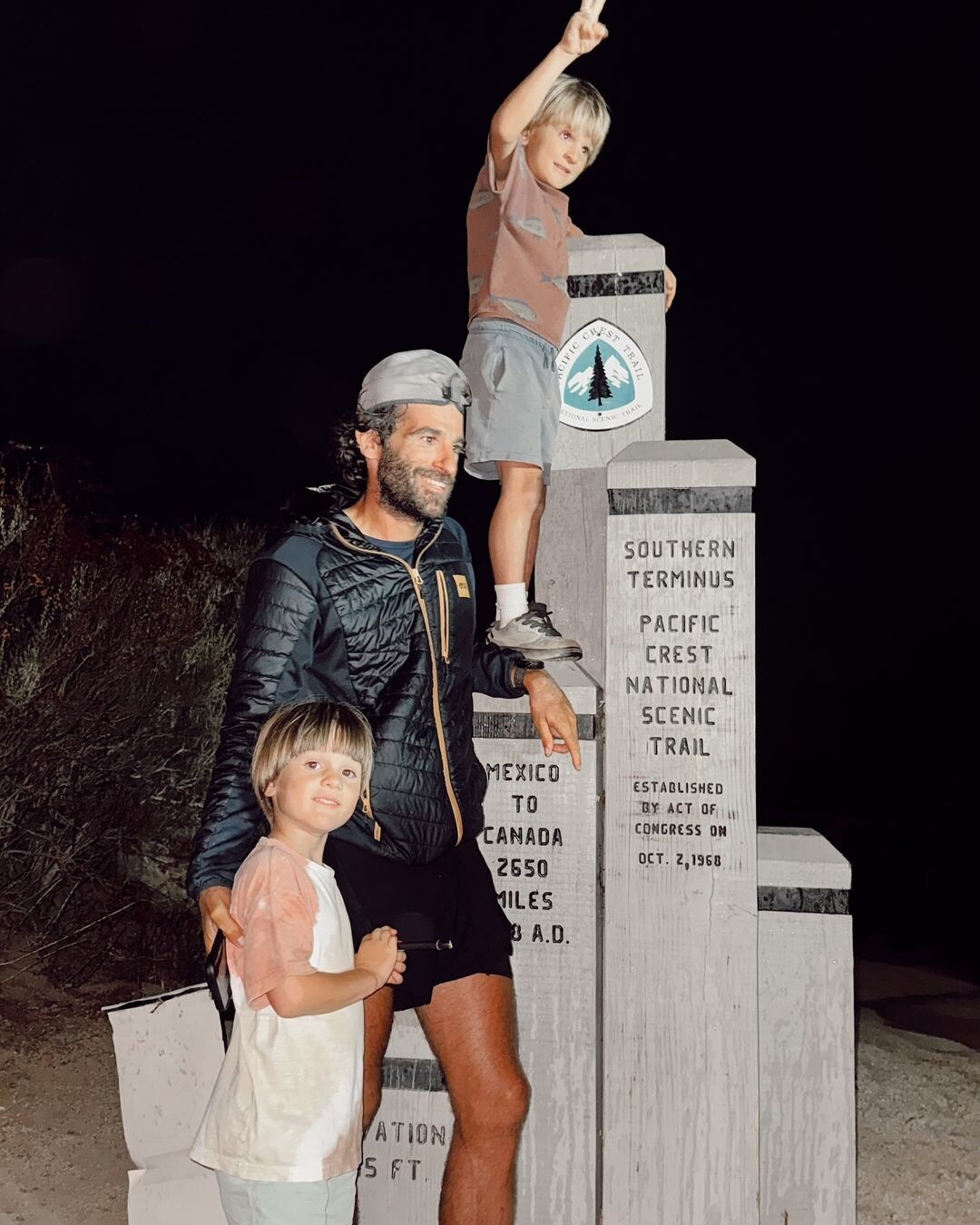
A struggle through the Mojave Desert
Costa’s run was filled with challenges, but perhaps the toughest came when he hit a heat wave in the Mojave Desert. “It was over 100 Fahrenheit [38 C], and my body started operating much slower,” Costa explained. As his condition worsened, his crew grew increasingly concerned. Fortunately, a chance encounter with a group of firefighters provided a turning point. “They checked my vitals and told us about heatstroke and heat exhaustion. It was a lucky encounter,” Costa told the LA Times. Costa took the firefighters’ advice and paused his trek to head to a nearby hospital for IV fluids, crediting this with likely saving his run and allowing him to continue despite the overwhelming heat.
Raising awareness, one step at a time
Costa’s run has raised around $190,000 for two charities: James’ Place, which focuses on men’s suicide prevention in the U.K., and the JED Foundation, which supports at-risk teens in the U.S. The mental health challenges Costa has witnessed, both personally and through the stories of others, have inspired his mission. “One moment can last an absolute lifetime… as long as you keep putting one foot in front of the other, you’ll get there in the end,” Costa says.
(10/18/2024) Views: 109 ⚡AMP
by Keeley Milne
Recovery runs: Everything you need to know
At first glance, the words ‘recovery’ and ‘run’ might seem juxtaposed. After all, running is about expending energy, while recovery seems to be about recouping it. Even if we accept the term, what’s the point of a recovery run? And how does it distinguish itself from other forms of running, such as easy running? Understanding the definition and purpose of recovery runs can help you to incorporate them into your routine – boosting your recovery and overall fitness.
What’s the point of a recovery run?
In the aftermath of a hard workout or race, your muscles can become sore – a phenomenon known as DOMS (short for ‘delayed onset muscle soreness’). In this state, the prospect of running may seem unappealing, but doing so can loosen up the body by increasing blood flow to the muscles and flushing out waste. This, in short, is the purpose of a recovery run.
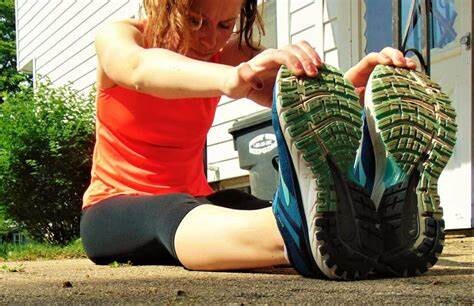
How do you do a recovery run?
In many ways, a recovery run is similar to an easy run. It’s done at a slow pace (or in heart rate zones 1 or 2, for those who use that as a metric) and should feel easy and relaxed throughout. However, from a duration perspective, recovery runs tend to be around 20-30 minutes in length, whereas easy runs could conceivably stretch to an hour or more. The reason for this is that, after 30 minutes of running, the body begins to produce metabolic waste, which in itself requires recovery time. When it comes to recovery runs, think easy and short.

What is active recovery?
Another terms that seems self-contradictory, active recovery is loosely defined as ‘low-intensity exercise that a person performs after high-intensity exercise to improve recovery’. Recovery runs fit firmly into this category. The alternative to active recovery is passive recovery, defined as ‘a period of inactivity after exercise where the body is allowed to heal without any additional physical activity’. Neither is better than the other, and the smart runner will use a combination of both passive and active recovery. As a general rule, though, passive recovery is the better choice if you’re showing signs of overtraining. These signs include extreme tiredness, lingering soreness, trouble sleeping, irritability or an elevated resting heart rate.
Is recovery different for men and women?
Although both sexes need to recover adequately after hard workouts and races, there is some evidence to suggest that recovery times vary between men and women. In a new study that looked at men and women who’d just run a half marathon, women showed earlier functional recovery than men. There are several potential reasons for this. One is that women have lower muscle mass and power output than men, so are therefore considered less prone to fatige. Another is the role of estrogen, which might lower the impact of exercise-related skeletal muscle damage. That said, women’s recovery is heavily influenced by where they are in their menstrual cycle, with one study finding that menstruation raises metabolic rate by more than 6% – something that will an impact on recovery and overall perception of fatigue.
What are the alternatives to recovery runs?
Of all the types of running session, recovery runs are probably the easiest ones to substitute for other cross training activities. Low-impact activities such as cycling or swimming will provide the same benefits, without any of the pavement pounding. If you’re a runner who is susceptible to impact injuries, such as stress fractures or shin splints, it’s worth thinking about whether your next recovery session actually needs to be a run.
(10/18/2024) Views: 97 ⚡AMPby Rick Pearson
Course records under attack at the Amsterdam Marathon
Yalemzerf Yehualaw, Winfridah Moseti, Tsegaye Getachew and Philemon Kiplimo among the line-up for Sunday’s race
Yalemzerf Yehualaw and Winfridah Moseti are aiming to break Almaz Ayana’s women’s course record of 2:17:20 at the TCS Amsterdam Marathon on Sunday (Oct 20) while Tsegaye Getachew and Philemon Kiplimo will be hoping to get close to Tamirat Tola’s course best of 2:03:38.
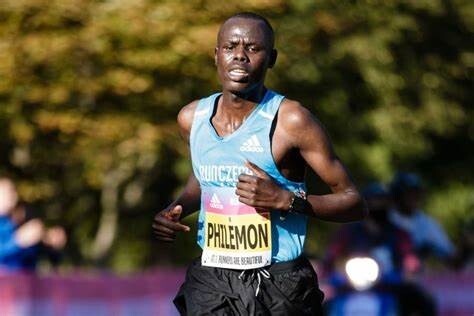
Yehualaw, 25, already has a best of 2:17:23 – set in Hamburg last year – and the Ethiopian won the London Marathon in 2022.
She says: “I want to give my best on Sunday, and of course, I’ve come to win. I’m looking forward to the support from the Amsterdam crowd.”
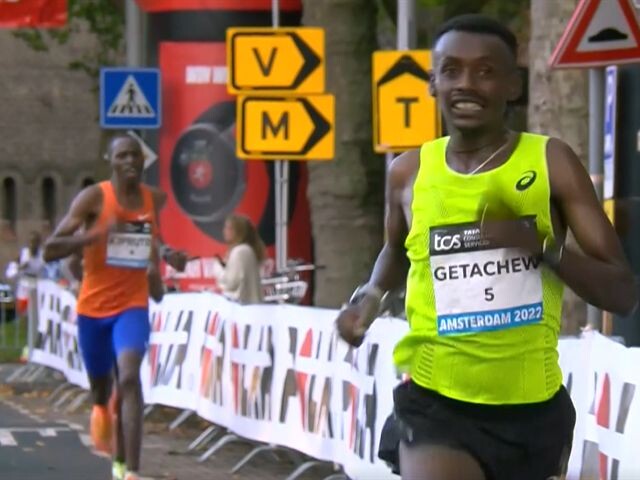
Kenya’s Moseti, who set a PB of 2:18:25 earlier this year, adds: “Training has gone well, so I expect a good result.”
With conditions expected to be good for marathon running with temperatures of around 15C and a light southerly breeze, Kiplimo, whose best is 2:04:56, says: “Training has gone well, and I feel fit. I expect a good result.”
Getachew is perhaps the favourite in the men’s race, though, given the fact he won the race in 2022. “Amsterdam changed my life,” he says. “I remember not being able to run the last kilometre, but the incredible crowd really carried me.
“I’ve run in Tokyo and Paris, but Amsterdam’s course really suits me. I’ve trained well, and I have two goals: to win and to set a personal best.”
His personal best stands at 2:04:49.
The event will be shown on Discovery+ and Eurosport and starts 9am local time in the city’s Olympic stadium.
(10/18/2024) Views: 122 ⚡AMPby Athletics Weekly
TCS Amsterdam Marathon
Do you want to enjoy Amsterdam in October and all that the city has to offer you? Want to feel a real athlete and start and finish in the historic Olympic stadium? Or run across the widely discussed passage under the beautiful National Museum? Then come to Amsterdam for the annual TCS Amsterdam Marathon in October! The TCS Amsterdam Marathon...
more...'He's the man to watch'- Eliud Kipchoge predicts bright future for training partner in road running
Eliud Kipchoge believes has singled out one of his training partners and noted that he has a bright future in road running and could be the next big star, despite still mastering marathon racing.
Marathon legend Eliud Kipchoge believes his training partner Daniel Mateiko is the next big thing when it comes to road running.
The former world marathon record holder observed that Daniel Mateiko has a bright future ahead of him and despite not having mastered marathon running yet, the youngster is surely following in Eliud Kipchoge’s footsteps.
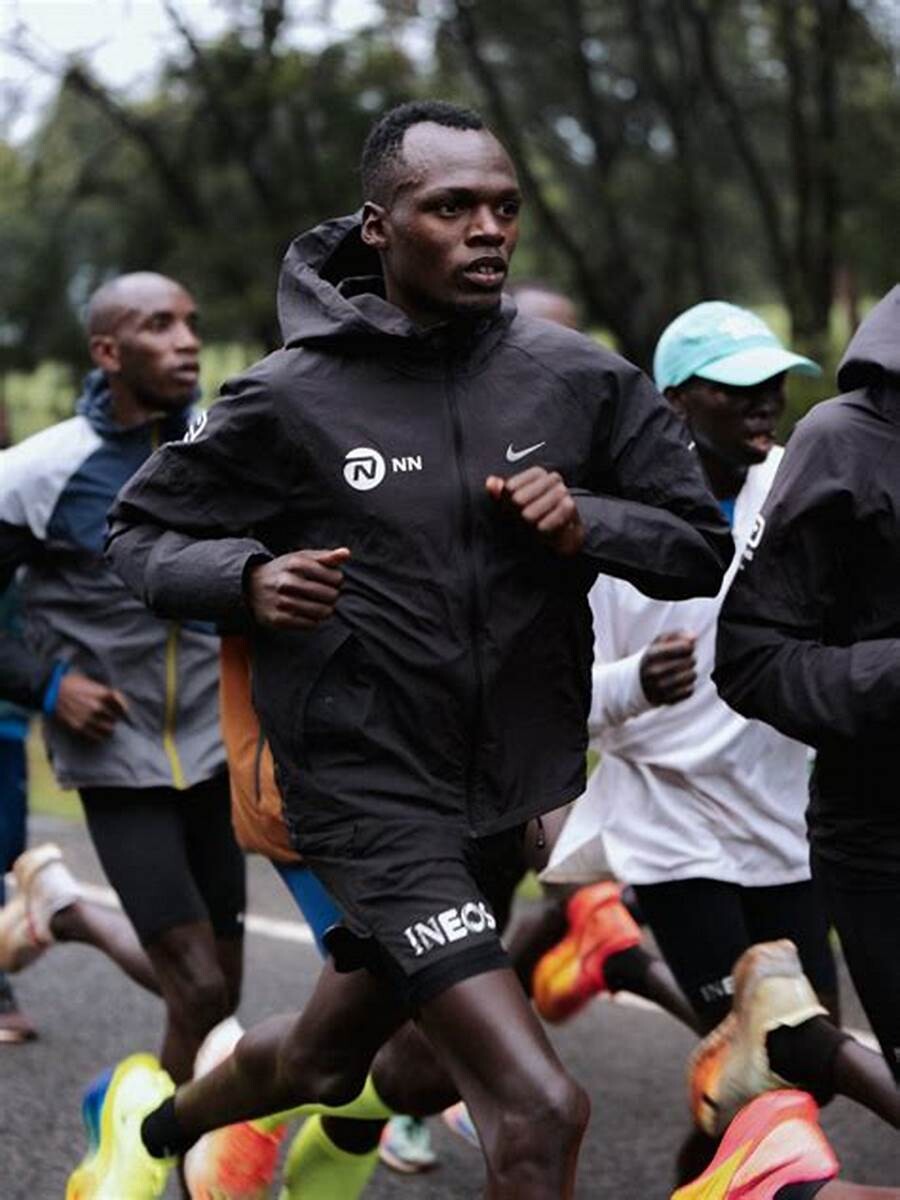
In an interview with Runner’s World, Eliud Kipchoge pointed out that Daniel Mateiko has all it takes to dominate and once he hits the ground running, people will be left dumbfounded in the stands.
“[He has] a huge, huge, future ahead of him. I’m putting all my money in Mateiko as the future,” Kipchoge said. “He’s the man to watch, actually, on the road,” Eliud Kipchoge said.
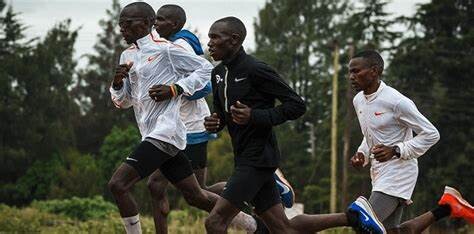
Meanwhile, Daniel Mateiko is one of the top half marathoners in the world with his personal best time of 58:26 he ran to finish third at the Valencia Half Marathon in 2021.
He is slowly following in the footsteps of his mentor, five-time Berlin Marathon champion Eliud Kipchoge, and he made his full marathon debut at the 2023 Chicago Marathon where he failed to finish the race but certainly had one of the best runs up to the 30km mark.
Before his full marathon debut, Daniel Mateiko was in action at the 2023 London Marathon as he helped pace the late Kelvin Kiptum to a course record of 2:01:25. This season, Mateiko hoped for a great outing at the London Marathon but also failed to finish the race.
However, he has attained a series of wins, like representing the country at the Paris Olympic Games in the 10,000m. However, Mateiko did not embrace his full potential as he could only manage an 11th-place finish in 26:50.83.
Before then, the 26-year-old had raced at the Prefontaine Classic where he won the race to secure a ticket to the Olympics and he had also won the Ras Al Khaimah Half Marathon prior to the London Marathon.
(10/17/2024) Views: 126 ⚡AMP
by Abigael Wafula
Why running ‘super shoes’ might not be so super for triathlons
Technology might be helping Patrick Lange's rivals more than it helps him, says triathlon legend Mark Allen.
Elite triathletes are running faster and faster every year – in no small part to the technology at their disposal – and that includes those much-hyped ‘super shoes’.
But ironically the ever-advancing plate-enhanced footwear on offer may be giving the sport’s fastest ever marathon runner more trouble than they are worth, according to six-time IRONMAN World Champion Mark Allen.
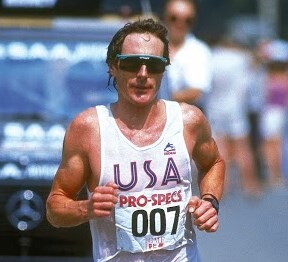
Germany’s Patrick Lange, two-time Kona champion himself, has made a career out of running down the opposition at the end of a brutal 140.6-mile race. Quite simply, nobody has ever been faster.
Twice Lange has come agonisingly close to running the sport’s first ever sub-2:30 marathon, clocking 2:30:27 at Challenge Roth in 2023 and 2:30:32 at IRONMAN Israel in 2022. Undoubtedly helped to an extent by ‘super shoes’.
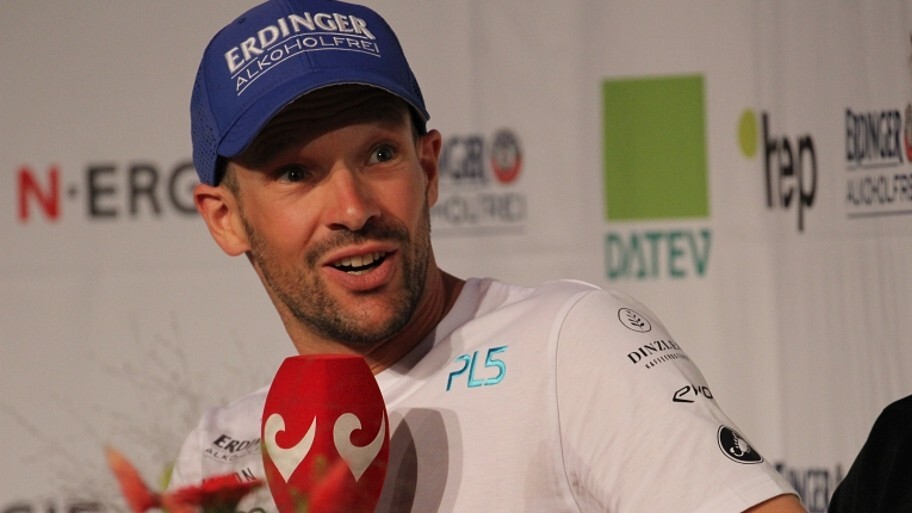
But Allen’s hunch is that those shoes are actually helping Lange’s rivals even more, allowing them to blunt his opportunity to run them down in the closing stages. He explained his rationale when speaking to TRI247 in the countdown to the upcoming 2024 IRONMAN World Championship in Kona.
Mark Allen on Lange
“The interesting thing in my opinion – I think the super shoes have helped some of the less talented runners more than the talented runners. It’s almost like when you throw on a wetsuit, that helps the less talented swimmer more than the talented swimmer.
“Just looking at some of the splits of guys compared to what they maybe had done in the past, it helped Patrick for sure I would say – some of the times he’s been running are phenomenal – but I think it’s helped guys who are maybe a little bit slower running, more than him. Which when it comes to first, second or third, makes it a little more difficult for a really good runner.
“So don’t count him out [in Kona], but also, unless the dynamic is just right and he can feed off the train of a pack, I think it will be hard for him to be top three.”
Despite Allen’s fears about how the race dynamic will impact Lange’s hopes of a third title in Hawaii on October 26, he does believe the German is in peak form coming into the race.
Patrick is peaking for Kona 2024
“A number of people, when I was in Nice for the IRONMAN World Championship, were saying they think he’s actually gonna have a really good race in Kona this year. The underground guys who are keeping track of him, who are there, seeing what he’s doing, knowing what he’s doing, knowing how he’s raced and all that.
“Even if he doesn’t have a win or a top three, I think he’s got that desire to go sub 2:30 on the marathon. So even if he doesn’t win, maybe we’re gonna see a sub 2:30 marathon, which would be kind of like one of those 27-year split times that stays on the record books for quite a while.”
(10/17/2024) Views: 115 ⚡AMPby Graham Shaw
World's second-fastest man Yohan Blake drops a game-changing announcement
Yohan Blake has unveiled an exclusive new way for fans to follow his personal journey offering unique behind-the-scenes access.
Jamaican sprint icon Yohan Blake has introduced an innovative fan app that provides his supporters with unprecedented access to his training journey, mental preparation and personal reflections as a world-class athlete.
The app, available now for iOS and soon to be launched on Android, gives fans a rare glimpse behind the scenes of the sprinter’s career, offering exclusive content and updates straight from Blake himself.
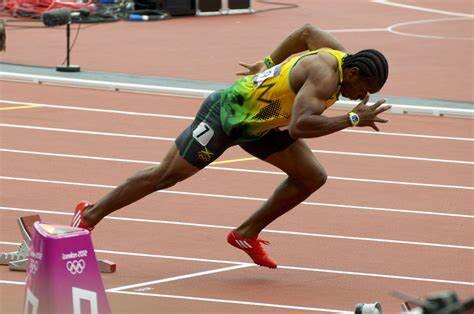
The app aims to connect fans more closely with Blake's experiences, offering a real-time window into his daily training regimen, diet, and the mental resilience it takes to compete at the highest level of track and field.
"Hey guys! ? I’ve just launched my official fan app, available now on iOS and coming soon to Android! Stay connected with me for exclusive updates, content, and more. Download today and be part of the movement!" Blake announced in a message to his fans.
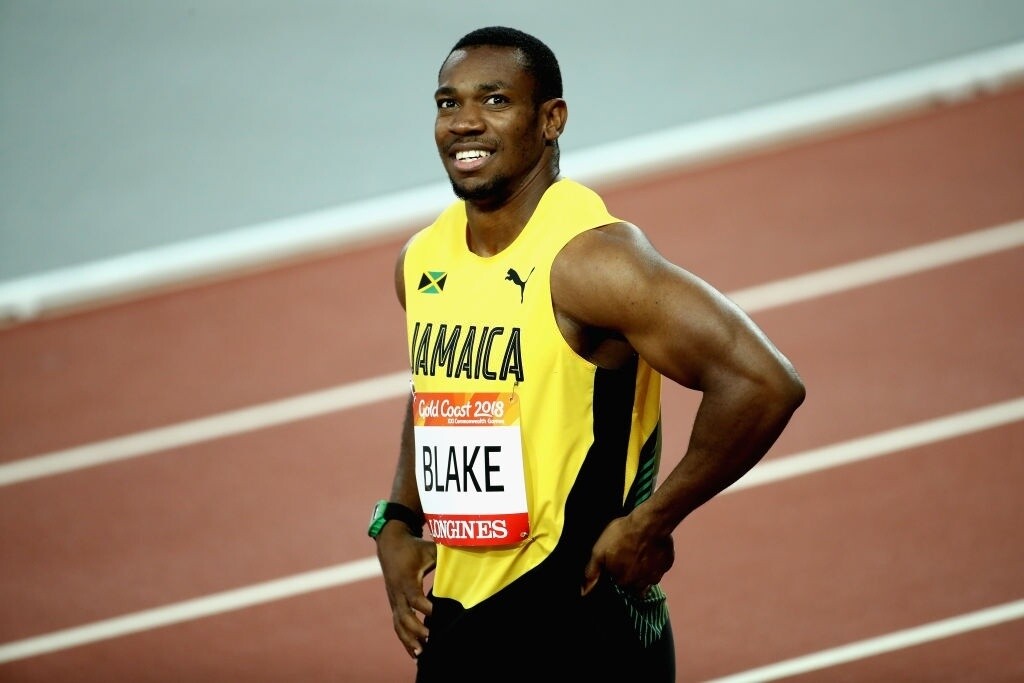
For Blake, the app is not just a platform to share his achievements, but also a tool to inspire others through the ups and downs of his athletic journey.
His fans will gain a close-up view of the hard work, dedication, and discipline required to reach the pinnacle of sprinting.
With the app, Blake shares both the highs and the lows of his pursuit for greatness, something that has been a hallmark of his career.
"What keeps me focused is the hunger and the drive to do much better than I’ve done in the past. I want to leave a mark and a legacy. I am running for a cause," Blake said in a past interview.
At 34, Blake’s storied career includes some of the most remarkable achievements in the history of track and field.
He famously shares the record for the second-fastest 100m time in history with American sprinter Tyson Gay, both clocking in at an astounding 9.69 seconds.
Blake’s prowess on the track has earned him two Olympic gold medals from the 4x100m relays at the 2012 London Games and 2016 Rio Games, alongside two silver medals in the 100m and 200m sprints in London.
Despite his extraordinary success, Blake has faced his fair share of adversity.
In 2014, a career-threatening injury left many questioning whether he would ever return to his peak form.
But through resilience and determination, Blake overcame the setback, proving his dedication to his sport.
Now, he seeks to use his app as a way to connect his journey with fans, giving them a deeper understanding of what it takes to bounce back and thrive in the face of challenges.
"I want people to remember Yohan and be inspired to put their best foot forward in spite of," said Blake in a past interview in March.
(10/17/2024) Views: 130 ⚡AMPby Festus Chuma
Toronto runner Virginia Lee, 51, prepares for 25th consecutive Waterfront Marathon
For Virginia Lee, the TCS Toronto Waterfront Marathon on Oct. 20, is more than just another race—it’s a journey that has spanned a quarter-century. The 51-year-old Toronto native is a legacy runner at the Toronto Waterfront Marathon, having finished every edition since the marathon distance was introduced in 2000.
This year, she’s gearing up for her 25th consecutive Waterfront Marathon, with a deeper purpose: fundraising for the Princess Margaret Cancer Foundation through the TCS Charity Challenge in memory of her late father.

Lee and her father were incredibly close, and she credits her love for fitness to him as it was something he loved to do. Lee says she was a mathlete in her younger years and her passion for fitness began in her 20s. After a while, she got tired of the 45-minute commute to her local gym.
Lee decided to skip the gym and hit the local track instead—where she fell in love with running. A colleague at Browns Shoes, Manny, eventually helped her gain enough confidence to register for her first race. “He was a big mentor for me,” Lee says. “I remember being in awe of all the marathons he’s done, and now I’ve done more—he can’t believe how far I’ve come.”
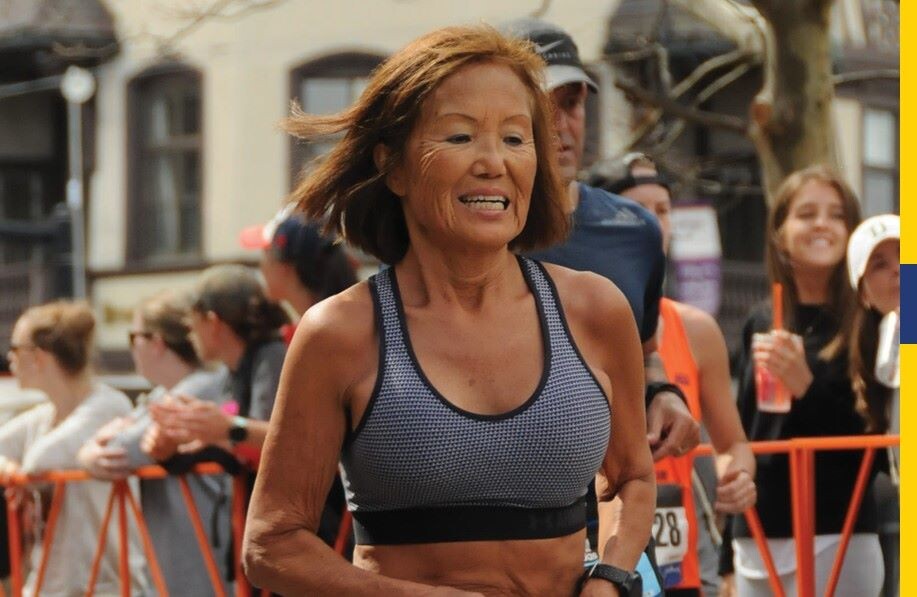
She first ran the Toronto Waterfront Marathon in 2000, and it quickly became an annual tradition. “I started doing the Toronto Waterfront Marathon every year because it was something I enjoyed,” Lee says. Her dedication to the race became even more apparent in 2013 when she faced a tough decision—run the Chicago Marathon, which she had qualified for, or maintain her streak in Toronto. Toronto organizers reached out, reminding her of her unbroken streak. She ended up doing both. “I had to be super conservative in Chicago because I wanted to run well in Toronto,” Lee recalls.
Over 24 years, Lee has seen the sport evolve, especially women’s participation. “There weren’t too many women at my first marathon in 2000, but last year there were nearly 1,500 female finishers,” she says. The growing community of older female runners in Canada has been an inspiration, along with U.S. masters running legend Jeannie Rice, who at 76, holds several masters marathoning world records. “She is such an idol for me,” says Lee. “Although I’ll never be as fast as her, her consistency and resilience are everything.”
One of Lee’s biggest motivations remains her desire to maintain her streak. “A lot of people did not believe I could do this,” she says, reflecting on the dedication that has driven her through two decades of training. Her commitment is impressive considering her career at the University Health Network (UHN) in Toronto, where she’s worked for the last 15 years.
Her training build for this year’s race has been the hardest yet, dealing with her father’s passing, plus a bad case of shingles. “I wasn’t well. I caught shingles and felt exhausted for the first two months,” she shares. “The loss of my father has given me a renewed purpose.”
At the TCS Toronto Waterfront Marathon expo on Friday, Lee will share her story to the start line and guide eager runners through what they can expect on the 2024 course. Despite 24 years of experience, Lee admits she still gets nervous. “I feel like I have imposter syndrome every year. But I’m grateful to be a part of it.”
(10/17/2024) Views: 130 ⚡AMPby Marley Dickinson
TCS Toronto Waterfront Marathon
The Scotiabank Toronto Waterfront Marathon, Half-Marathon & 5k Run / Walk is organized by Canada Running Series Inc., organizers of the Canada Running Series, "A selection of Canada's best runs!" Canada Running Series annually organizes eight events in Montreal, Toronto and Vancouver that vary in distance from the 5k to the marathon. The Scotiabank Toronto Waterfront Marathon and Half-Marathon are...
more...WHAT THE NUMBERS SAY (ABOUT WOMEN’S MARATHOING)
I am a numbers’ guy. I’ve always been a numbers’ guy. I always want to see what the numbers tell me before I opine from an emotional standpoint.
Accordingly, I did a deep dive into the last five women to hold the marathon world record going back to Kenyan Catherine “The Great” Ndereba, in 2001. What I found was a changing world order.
Catherine Ndereba was the last of the old school road racers who then progressed to the marathon. Catherine came to compete on the U.S. road tour beginning in 1995, but really began winning convincingly in 1996 at age 24, winning four times in New York City; Spokane, Washington; Utica, NY; Flint, Michigan; and Philadelphia, Pa.
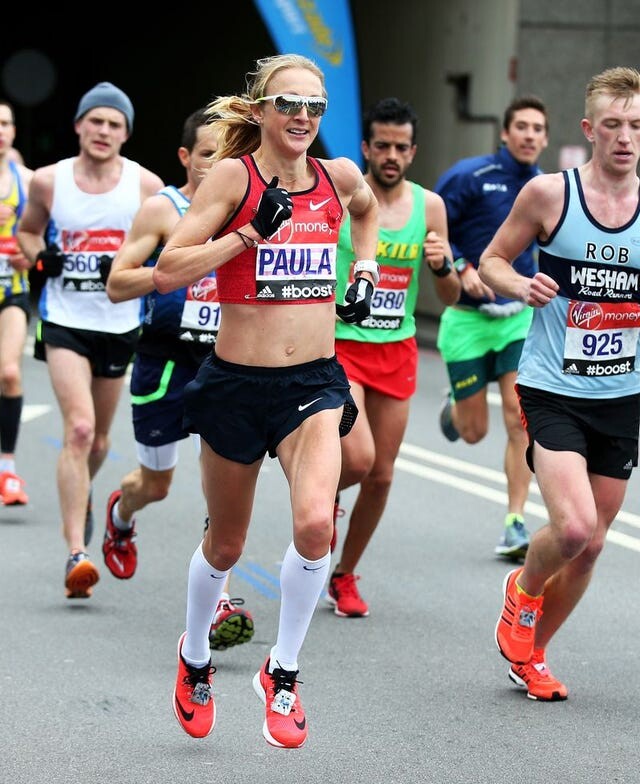
In 1999, she made her marathon debut in Boston, running to eighth place in 2:28:26. Later that fall, she finished second in New York City in 2:27:34. But she also had eight wins on the road circuit when you could still make money there and the marathon wasn’t yet as lucrative as it is today.
The following year, 2000, Catherine won her first Boston and Chicago Marathons, with another eight wins on the road circuit. She won Boston again in 2001 in 2:22:53, then set her world record in Chicago in the fall in her sixth career marathon, running 2:18:47, with another eight wins on the roads. Catherine was 29 when she ran her record and set her personal best by 2:46 seconds.
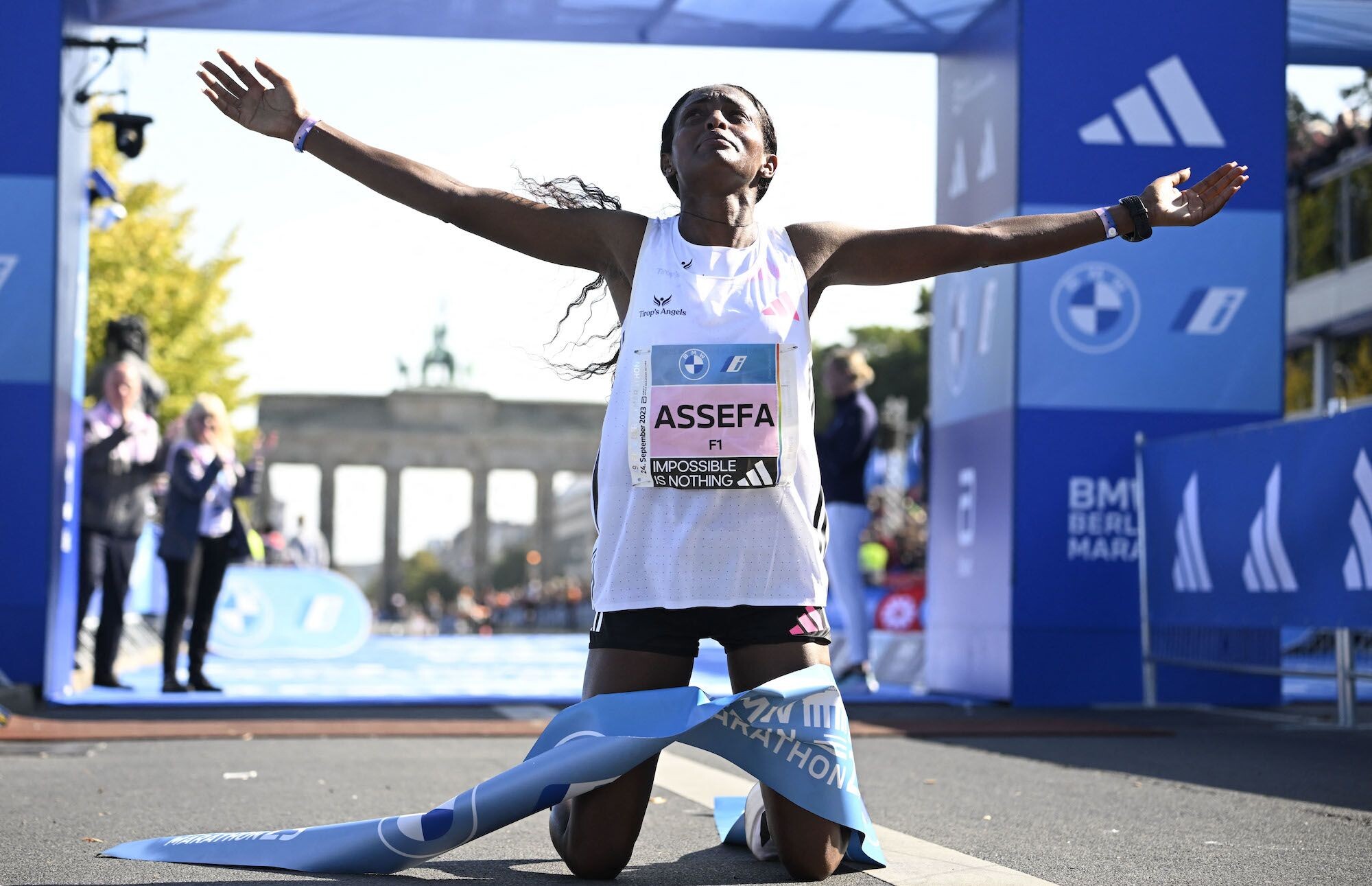
In all, she ran 23 marathons, finished 23, won 8.
Great Britain’s Paul Radcliffe broke Catherine‘s world record one year later in Chicago 2002 (2:17:18) then smashed her own record one year later in London (2:15:25), a record that would last 16 years, by far the longest standing women’s marathon world record in history. Before that, Paula had run her debut in the spring of 2002 in London, at age 28, winnng in 2:18:56, a debut record.
In all, Paula started 13 marathons, finished 12, won 8. She, like Catherine, was age 29 when she set her final record at 2:15:25.
But Paula had a long, distinguished career in cross country and track going all the way back to 1992 when won the IAAF World Cross Country U20 championship in snowy Boston before finishing fourth in the World Junior Championships in the 3000m, a circumstance that would repeat itself over the years until she moved up in distance.
Paula ran fifth at the 1996 Olympic 5000m final in Atlanta. Then fourth in the 1997 World Championships 5000 in Athens; second in the WC 10,000m in Seville; and fourth again in the 2000 Olympic 10,000 in Sydney. She just couldn’t finish the last 200-300m with the East Africans like Derartu Tulu and Gete Wami to nab gold.
She entered her first marathon in London 2002 after showing her ability at the half marathon, winning at the Great North Run and the World Half Marathon Championships in Vera Cruz in 2000, and again in Bristol in 2001 – though she still ran on the track at 3k, 5k and 10k. From there, it was clear sailing, as the world came to expect Paula’s 2:15:25 to last for a long, long time.
It wasn’t until Brigid Kosgei came along in Chicago 2019, running 2:14:04, that Paula’s mighty record fell. But that was a bit of a stunner, as people didn’t see it coming. That gave even more gravity to the super-shoe era, because Brigid was 25 years old running the ninth of her 17 career marathons when she set her record. It was a personal best by 4:16, very similar to what we saw with Ruth Chepngetich last Sunday in Chicago. Both were deep into their marathon careers before producing their other worldly record performances.
Between Brigid and Ruth came Ethiopia’s Tigst Assefa. She ran her world record of 2:11:53 at age 26 in Berlin in the third of only five career marathons. And that WR was a personal best by 3:44 at age 26.
And now, of course, we have Ruth Chepngetich, whose 2:09:56 in Chicago last Sunday has had heads spinning faster than Linda Blair in the Exorcist.
Ruth has run 15 marathons, finished 13, won 9, while running her world record in her 15th marathon, seven years into her career, setting a PB by 4:22. That last stat is the one people have trouble getting their heads around. You don’t improve that much so late in your career; they say.
But Brigid Kosgei ran her world record in the ninth of 17 career marathons with a personal best by 4:16. So what Ruth did was not unprecedented, though taken from a tiny sample.
The ages when they produced their world records:
Catherine, age 29; Paula, age 28 and 29;Brigid, age 25; Tigst, age 26; Ruth, age 30.
The world is constantly spinning, changing. Catherine Ndereba and Paula Radcliffe came from an old world, not just pre-super shoes, but pre-only focusing on marathons and half marathons.
And with the super shoes and super nutrition and super coaching and super God knows what else, there has been a great stir in the running community. Some refuse to even consider the possibility of these record times. Others say “wait and see if any positive testing follows down the line”, as we have seen many times before. And very few say, “everything‘s on the up and up. There’s nothing here to see other than a great performance.”
That doesn’t leave the sport in a very good place. But guess what? We are kidding ourselves if we think 2:09:56 is going to last very long. Look at Chicago’s women’s splits: 15:00 at 5K = 2:06:46 pace; 45:32 at 15k = 2:08:16 pace; and 64:16 at halfway = 2:08:32 pace. You even out that effort just a little, and you’re looking at sub-2:09! It’s coming. You can count on it. Plus, once one-person shows what’s possible, it inspires many more to try.
Remember, we are still in the first two generations of world-class women’s distance running. We have no idea what their limits may be, notwithstanding all nefariousness that attends the sport these days.
And so the debate continues, even as the sport searches for leadership, which seems to be missing in action. It’s one hell of a Wild West show, isn’t it?
(10/16/2024) Views: 117 ⚡AMPby Tony Reavis
Filmon Tesfu will make his debut at Amsterdam Marathon
For Filmon Tesfu, the countdown has begun. The 31-year-old athlete from Den Helder will participate in the Amsterdam marathon for the first time next Sunday.
In addition to his top-level sports life as an athlete, Tesfu also works three days a week as a welder at the former Willemsoord shipyard and maintenance yard. "I'm good at working with my hands, but I'm a little less with computers," says Tesfu.
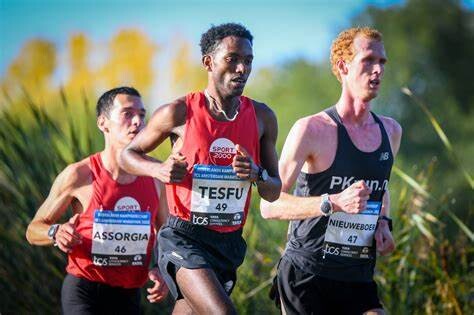
"Sometimes it's quite hard to run after a full day's work," says Filmon Tesfu. In addition to working three days as a welder, the 31-year-old athlete from Den Helder runs more than 150 kilometers a week. "As a result, I am ready to make my debut at the Amsterdam Marathon."
They run away with him at work, says colleague Raymond Groen. "He puts an awful lot of time into the sport. It's a pity that we see him a little less because of all the sports. He's a great and fantastic boy."
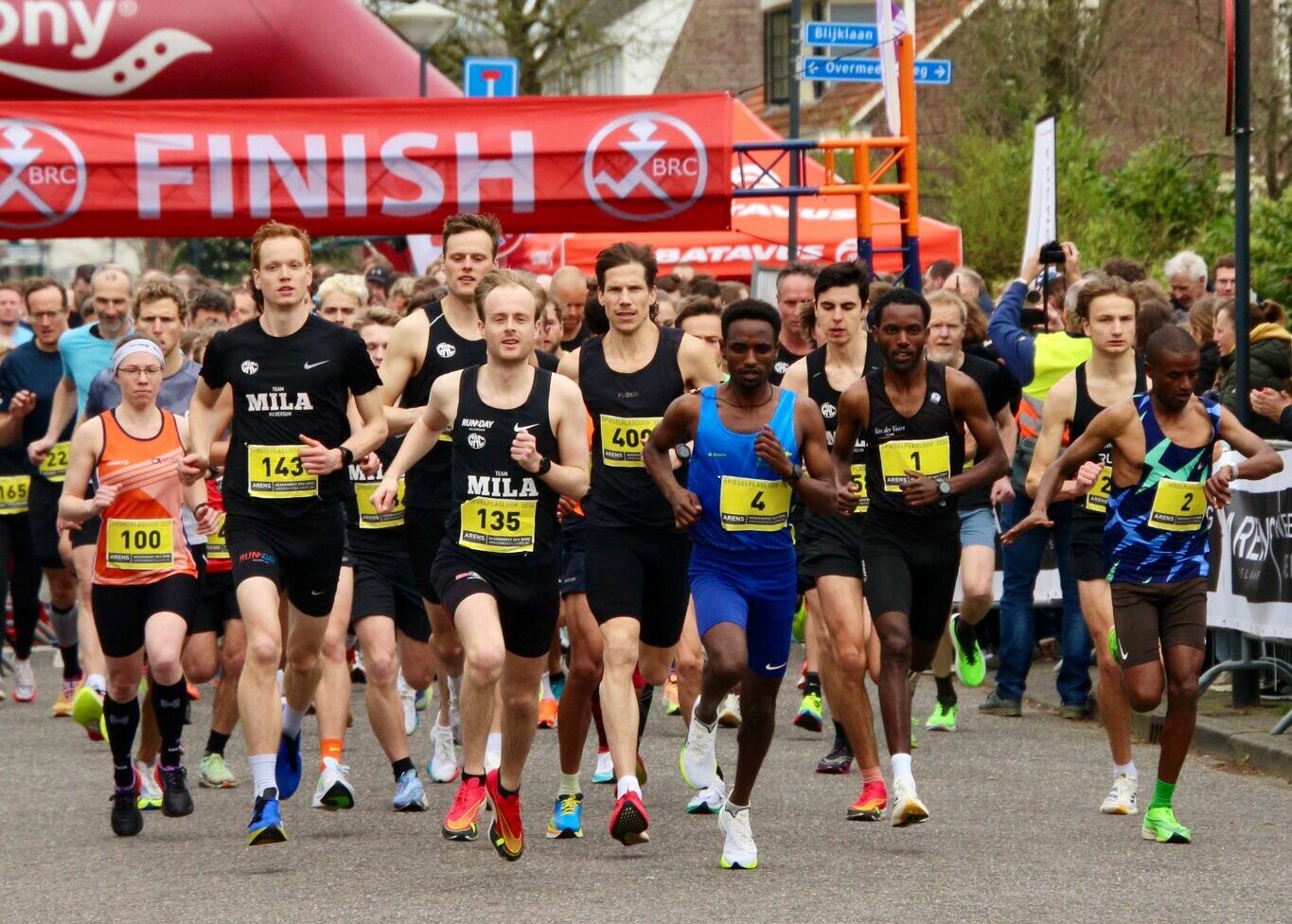
Second Mother
An important person in Tesfu's life is Truus van den Berg, his first trainer at athletics club Sportlust. "She's my second mother. She takes care of everything for me and looks after my health, just like my mother."
(10/16/2024) Views: 167 ⚡AMPby Milton Pus
TCS Amsterdam Marathon
Do you want to enjoy Amsterdam in October and all that the city has to offer you? Want to feel a real athlete and start and finish in the historic Olympic stadium? Or run across the widely discussed passage under the beautiful National Museum? Then come to Amsterdam for the annual TCS Amsterdam Marathon in October! The TCS Amsterdam Marathon...
more...'Give Ruth the respect she deserves!'- Athletics Kenya jumps to Ruth Chepng'etich's defense following doping accusation
Athletics Kenya has defended Ruth Chepngetich after her record-breaking Chicago Marathon win, urging respect and dismissing doping accusations, emphasizing her consistent, hard-earned success.
Athletics Kenya has called for the respect of newly-crowned Chicago Marathon champion Ruth Chepng’etich who is fresh from breaking the marathon world record.
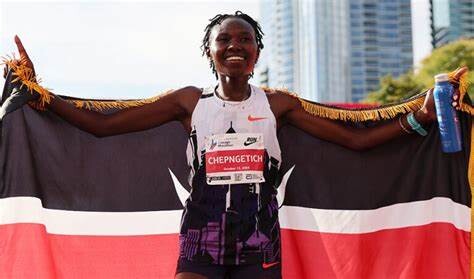
Ruth Chepng’etich clocked an impressive 2:09:56 to win the race at the Chicago Marathon, shattering Tigst Assefa’s previous record of 2:11:53 that she set to win the 2023 Berlin Marathon.
The Kenyan distance sensation ran a solo race to showcase her mastery of the course after winning the 2021 and 2022 editions of the race and finishing second behind Sifan Hassan at the 2023 edition of the event.
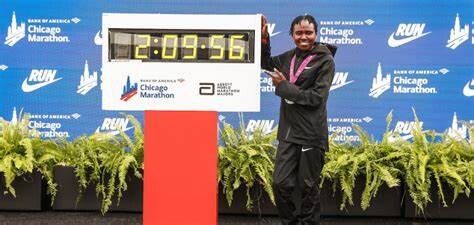
However, rumours have emerged that Ruth Chepng’etich might have doped following her impressive splits and that her world record might not be credible. However, Chepng’etich is one of the most consistent marathoners who has a lot of titles including the world marathon title she won at the 2019 World Championships in Doha, Qatar.
Following a ton of accusations, Athletics Kenya has jumped to her defence, urging the public to allow her to celebrate her huge feat and acknowledge her efforts as one of the most outstanding marathon runners in the world.
In a statement released on Wednesday, Athletics Kenya acknowledged her efforts, noting that she has been extraordinary in her performances for over five years and has joined the exclusive world of world record holders including Faith Kipyegon, Beatrice Chebet and Beatrice Chepkoech.
“In any case, many world records were broken this year, and to single her out is utterly unfair. It is therefore disheartening to witness some sections of the media casting unwarranted doubt on her achievements. Such aspersions, made without due process, undermine not only her efforts but the integrity of the sport,” Athletics Kenya said in a statement.
“We urge the media and the global community to give Ruth the respect she deserves and protect athletes from harassment. Let her celebrate this hard-earned victory and let us acknowledge the years of hard work and discipline that have brought her to this moment.”
The Kenyan federation was quick to note that every athlete, including Ruth Chepng’etich, underwent the required anti-doping tests and defended her performance on the global stage.
(10/16/2024) Views: 126 ⚡AMPBank of America Chicago
Running the Bank of America Chicago Marathon is the pinnacle of achievement for elite athletes and everyday runners alike. On race day, runners from all 50 states and more than 100 countries will set out to accomplish a personal dream by reaching the finish line in Grant Park. The Bank of America Chicago Marathon is known for its flat and...
more...Marathon great Kipchoge mentors refugee athletics team in Kapsabet
Renowned for his extraordinary athletics accomplishments and for being an inspiration, Kenya’s two-time Olympic marathon champion Eliud Kipchoge dedicated his time on Sunday (13) to mentor World Athletics Athlete Refugee Team members in Kapsabet.
“I came here to tell you that being a refugee is not the end of life. In fact, it is the beginning of life, because as a refugee you have a lot of fruits hanging in this world,” said Kipchoge. “Do not treat yourself less because you are refugees, we are all equal as human beings, we are all athletes.”
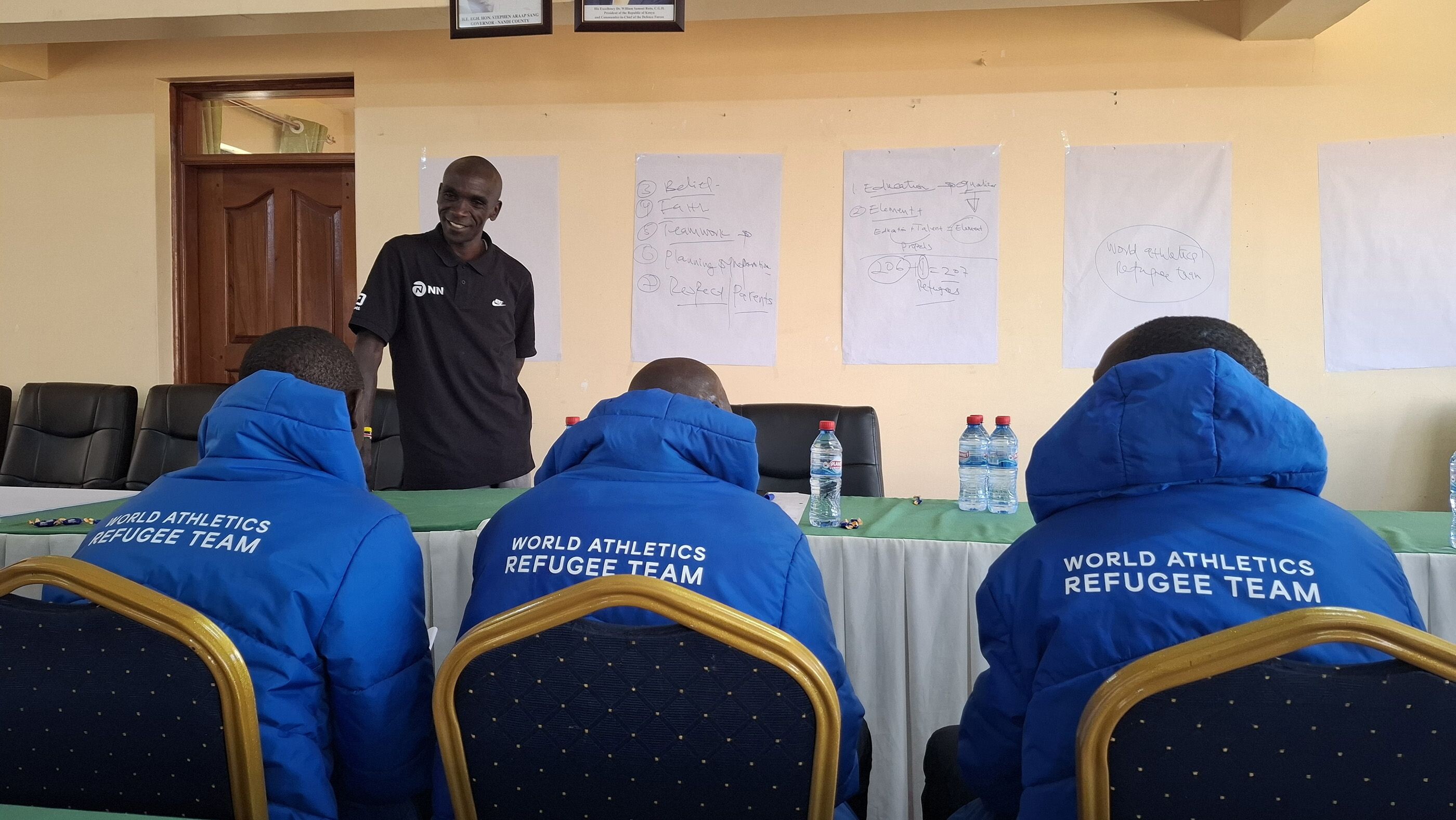
The athletes sat with their pens and notebooks open, ready to jot down the nuggets of wisdom on the fundamentals of a successful life shared by the marathon great. They listened intently.
“The whole world has recognised you as a country, are you happy?” Kipchoge asked.
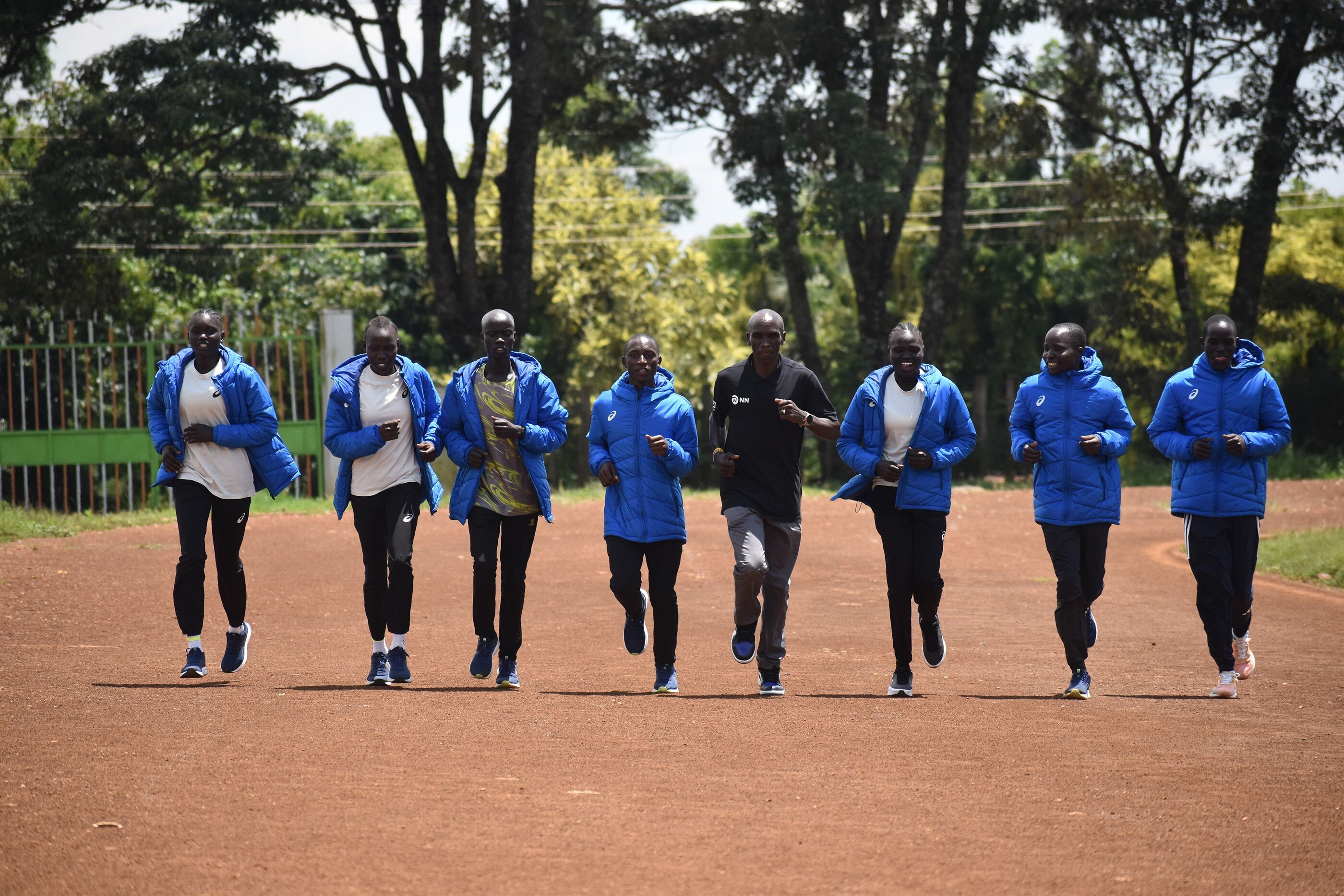
The athletes responded with a resounding ‘yes’ and clapped.
“Being recognised means you are the best,” he added. “Have faith in yourself, in your school and your coaches. Have respect.”
The seven student-athletes in attendance at the Eliud Kipchoge Sports Complex included Perina Nakang, Mfite-Umukiza Jules, Estherina Julius and Zinad Akulang, who are part of the World Athletics Athlete Refugee Team, and Peter Lotino Akileo, Peter Lopeyok Michael and James Lokibich, who are athletes sponsored by the school. Coaches were also present.
They looked at Kipchoge with admiration; meeting him was a dream. They were surprised and inspired by the simplicity and humility of Kipchoge, who was accompanied by his fellow athlete Jonathan Korir.
“Finally, I have met him. He is somebody like me,” said Lopeyok Michael.
Jules added: “I didn't expect that he could talk like he did. I thought he was a different person, but I realised that Kipchoge is a very good person. He is a parent; he is very encouraging.”
It was a class, with Kipchoge writing out key points and explainers. The theme focused on empowering, inspiring and encouraging the athletes to take education and sports seriously.
The marathon legend emphasised self-discipline, making firm decisions and being consistent, as well as building confidence – all elements that provide a strong foundation in life.
“For me, it is very important because when you have education and talent, you can be somebody,” explained Lopeyok Michael.
The day was not about how many Olympic medals or world records Kipchoge has achieved – in fact, those did not feature at all. Instead, Kipchoge was keen on changing the mindset of the athletes and shifting their perspective on life.
“In their faces I saw the future of the refugee team, I saw the future of their countries, I saw the future of sport” he said. “I am positive about the refugee team, they have a great future. In the whole world we have 206 countries participating in the Olympics, but we have plus one which is the Refugee Team, to make 207 countries – they have a big opportunity to grab.”
It was the reminder this team needed, having experienced extremely difficult and traumatic lives. But Kipchoge views their experience as the perfect springboard for mentorship.
“They are hard to mould and easy to mould at the same time,” he said. “Hard to mould because they have passed through hard life but all in all they are easy to mould because they understand tough life more than anybody else. So, you bring that tough life to education and sport here in Kenya, they are ready to move in.”
Posing questions to each athlete about their plans, Kipchoge discovered that they all harbour the ambition of becoming a legend, just like the man in front of them.
“To be like you, to succeed and help my family, respect others, to stay humble, respect my teammates, work on school assignments and work hard in athletics,” Julius answered.
“To focus on education, to love each other and share,” responded Lokibich.
The session was interactive and engaging. There were shared aspirations, along with moments of seriousness and laughter.
“Do you want to be successful; own a car, a house, have money and a good life, or do you want to be a legend?” Kipchoge asked.
“Aim to become the legends of the refugees – being legendary is to make an impact on behalf of the refugees. It is a real success. But you have to study, train well and remain focused.
“Being successful does not happen in one night. Success takes time. If you love your life and sports, avoid drugs. True champions are winning by their own sweat, blood and hard work,” he added.
“The longer you are in sport, the more opportunities you secure. You must know what you want, and where you want to go in your education and athletics. You must fight for opportunities.”
The athletes were accompanied by their head coach Janeth Jepkosgei, the 2007 world 800m champion, and two other coaches.
“The mentorship session was important; these kids have been longing to meet Eliud,” said Jepkosgei. “The team will see their lives differently. They are motivated and encouraged and believe that education and athletics can change your life and community, and it's an inspiration for them.”
Giving a message to the coaches, Kipchoge said: “You have to develop cohesiveness; these athletes must be free to speak to you. You know how to mentor, nurture and make talent propel.”
Then it was time for the athletes and coaches to ask Kipchoge some questions.
“My dream to meet you has come true. You have told us to know ourselves and believe we can. In your career, have you ever hit a wall with no results, yet you trained well and wanted to give up?” Jules asked.
Kipchoge replied: “The moment you perform, you have gone through challenges people do not know. I have been through a lot, but I keep pushing. You have to experience pain and frustrations so that you know how to handle success when it lands on you.”
He was also asked: “How do you feel when lining up with other champions, like (Kenenisa) Bekele?”
“Treat yourself as the best one,” Kipchoge responded. “At the start, tell yourself you have trained better than everybody else and during exams tell yourself that you have studied more than everybody else. Compete with yourself.”
Kipchoge’s remarkable athletics career, which spans 22 years, is older than the refugee athletes he mentored, as they are aged between 17 and 21 years. By sharing his experience, Kipchoge reminded them that despite his athletics triumphs, he has navigated challenges and even inner turmoil.
“He has given me and the team a lot of advice, including that I have to respect myself, my coach, my teachers and my teammates. He has been through a lot of challenges in his career, but he did not give up. Even us, we have experienced a tough life, but we are holding on,” said Nakang, who competed at the Paris 2024 Olympic Games.
Mentorship is something that Kipchoge takes seriously. In 2023, he became mentor to the U20 World Athletics Athlete Refugee Team. Through this role, Kipchoge inspires the upcoming generation.
“I treat the U20 athletes as the next generation,” he said. “I want to inspire them to run for the next 20-plus years because I want them to proceed beyond 2045, in the future promoting sport, competing for their countries, loving the sport, promoting education and bringing development and exposure to their countries.”
The 39-year-old, who holds five of the 11 fastest marathon times in history, has given a seal of approval to the World Athletics Athlete Refugee Team programme, which has been running since 2016.
“It is a plus; a firm and positive decision by World Athletics,” he said. “Let this project continue, let it flow. These are the flowers of World Athletics, what they are injecting in the form of finance and infrastructure to refugee athletes, they have shown these are real flowers of what they have been doing.”
(10/16/2024) Views: 116 ⚡AMPby Michelle Katami for World Athletics
Noah Lyles commits to race NFL star Tyreek Hill
After months of trash talk between Olympic and world 100m champion Noah Lyles and Miami Dolphins wide receiver Tyreek Hill about who would win in a 100m race, the debate will finally be settled. According to a report in Ad Age, both athletes have committed to a race organized by actor and America’s Got Talent host Terry Crews.
The competition will be part of “Super Serious on Sight”–an elimination-style tournament between Olympic runners and pro athletes co-founded by Crews. Super Serious did not reveal the date of the high-profile race, but it would presumably be after the 2024 NFL season and before the 2025 summer track season .

“I wouldn’t beat him by a lot, but I would beat Noah Lyles,” the NFL player said after the Paris 2024 Olympics. The 30-year-old is known for being one of the fastest players in pro football and comes from a track and field background. Hill represented Team USA at the 2012 World Junior Championships in Barcelona, winning gold in the men’s 4x100m relay and bronze in the 200m, with a personal best of 20.54 seconds.
In response, during an interview with NBC Sports, Lyles said he didn’t know who Hill was, referring to him only by his nickname, “Cheetah.”

“What’s the Cheetah guy from football, what’s his name? I can’t remember his name,” Lyles said. “What’s the football player who thinks he’s fast name?”
Lyles has a history of being overconfident while mocking other athletes–the 27-year-old also pretended he didn’t know who Team Canada was (in the men’s 4x100m relay) ahead of the Paris Olympics, where Canada brought home gold.
Lyles announces engagement to Junelle Bromfield
In other Noah Lyles news, on Sunday, the 27-year-old announced his engagement to fellow Olympic sprinter Junelle Bromfield. The celebrated sprinter went all out with the setup–posts on social media showed a rose-petal-covered walkway, with friends and family in attendance. In his post, Lyles wrote “To My Future Wife I Will Love You Forever.”
The walkway was surrounded by bouquets of flowers and sparklers, and led to a heart-shaped sign lit with the words “Will you marry me?” The popular couple’s posts on social media have received overwhelming support and congratulatory messages from fellow international track sensations.
The pair has been dating for two years after meeting through social media, and share a passion for track. Lyles, who is known for his bold personality, holds Olympic gold in the 100m and two bronze medals in the 200m. Bromfield, 26, won a bronze medal for Team Jamaica at Tokyo 2020 in the 4x400m relay.
(10/16/2024) Views: 100 ⚡AMPby Cameron Ormond
Fast times in the 38th monthly KATA Time Trial in Thika Kenya
The Kenyan Athletics Training Academy (KATA) monthly time trial took place today October 16th. We had 37 total registered athletes, 10 women and 27 men. Stephen ngigi opened the day with victory in the 5km MEN posting 14:28. This was his first time in the distance.
He was followed closely by Levis kuria who finished two seconds later stopping the clock at 14:31, a new personal best. Levis lowered his previous time of 14:49 by 18 seconds. Kelvin ragui finished third place and stopped the clock at 14:58, 8 seconds slower than his previous time. Kellen waithira took the victory in 5km Women in time of 17:01 followed by Lois wambui who stopped the clock at 17:22.
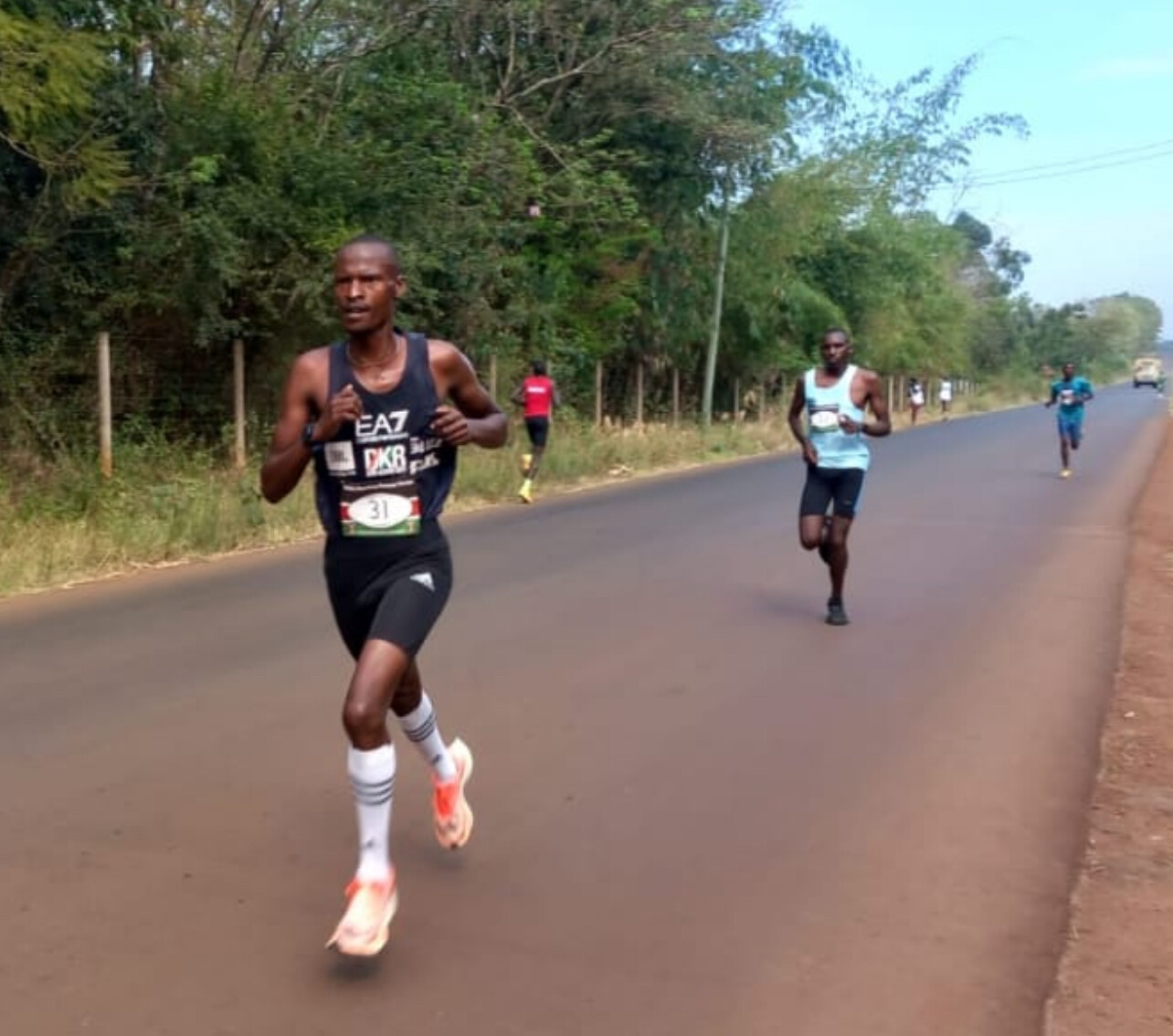
Athanas kioko (first photo) who is coming back from an injury won the men 10km race in a time of 29:16. He was followed by Peter mwaniki who is also nursing an injury clocked 29:47. Michael chege finished in third place posting a scintillating time of 29:59, a new personal best. Chege took off more than 40 seconds from his previous time.
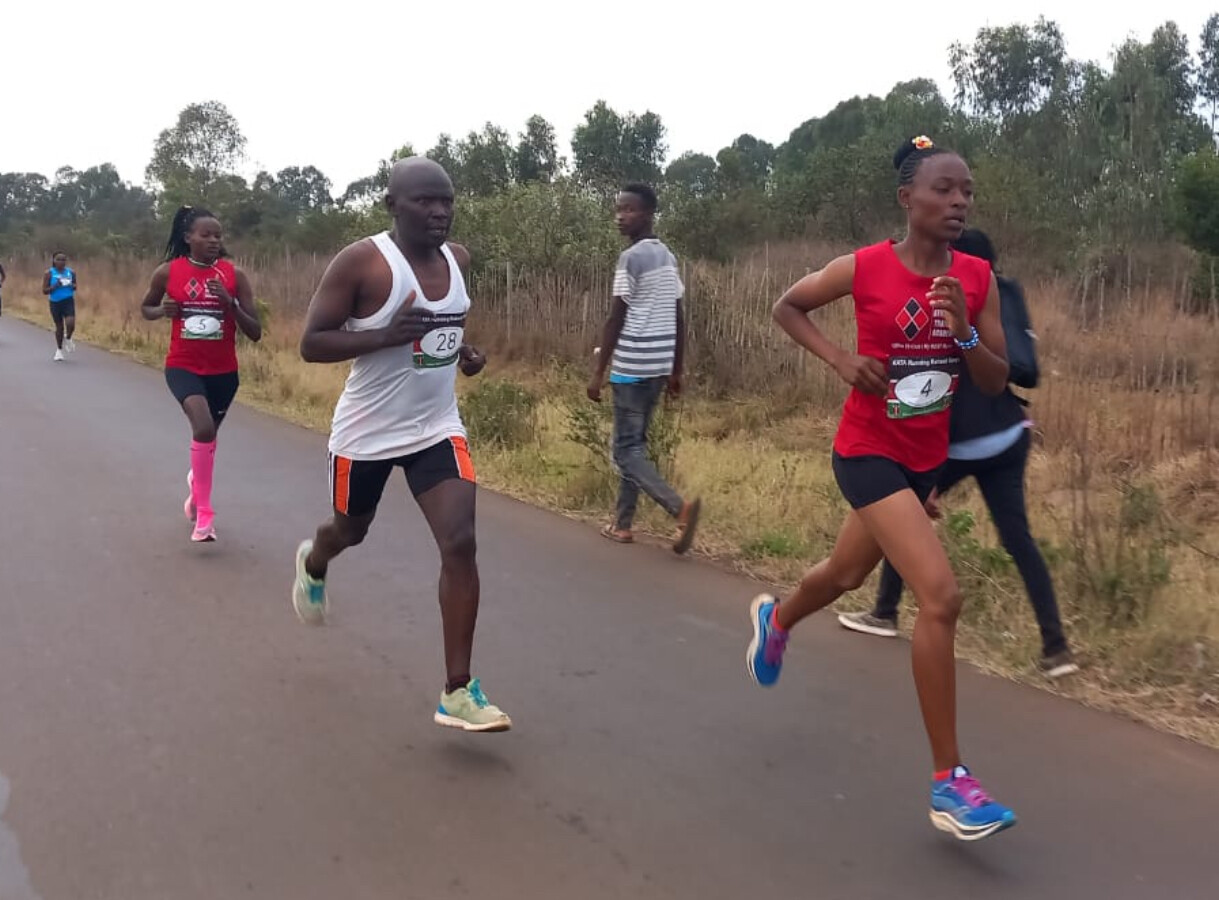
KATA Kenya and KATA Portugal
5km WOMEN
1 Kellen waithira 36 30 17:01
2 Lois wambui 23 5 17:22
3 Jacinta kamau 22 3 17:35
4 Lilian nyamai 23 4 17:59
5 Karen chepkwony 22 40 18:34
5km MEN
1 Stephen ngigi 20 18 14:28
2 Levis kuria 23 2 14:31
3 Kelvin ragui 23 13 14:58
4 Peter maina 33 34 15:02
5 John njuguna 29 36 15:03
6 Charles ndirangu 23 10 15:18
7 kappua Anthony 23 25 15:22
8 David muriuki 28 16 15:51
9 Amos chirchir 23 39 16:02
10 Peter mulua 24 14 16:42
11 Fredrick mwenda 18 11 17:47
12 William mbugua 21 12 17:55
13 Geoffrey mwangi 44 28 18:19
14 Michael oriko 24 24 20:38
15 Benjamin oriko 24 20 20:40
10km WOMEN
1 Monica wanjiku 22 29 33:34
2 Rachael ndungu 32 19 34:06
3 Virginia wanjiru 22 6 35:43
4 Karen chepkemoi 22 27 35:55
5 Vyonne nyawira 24 20 36:22
10km MEN
1 Athanas kioko 29 35 29:16
2 Peter mwaniki 27 31 29:47
3 Michael chege 17 15 29:59
4 Peter wanyoike 28 33 30:01
5 Bernard Baruka 30 23 30:42
6 Kenneth gichoya 27 32 30:49
7 Fredrick kiprotich 23 1 31:34
8 Bernard giceha 33 35 32:24
9 Joseph muniu 21 38 33:21
10 Paul kariuki 25 22 33:43
11 John ndungu 22 21 35:14
12 Charles ndirangu 64 37 37:57
(10/16/2024) Views: 112 ⚡AMPKATA Time Trial Series
The Kenyan Athletics Training Academy (KATA) in Thika Kenya stages a monthly time trial. Starting Sept 2021 this monthly event is open to anyone who would like to get an official time on a acurant course. Results will be published at My Best Runs so race directors and other interested people can see what kind of shape our participants are...
more...Husband watches his wife run a half marathon for the last time
Lisa de Lusignan crossed the finish line in the Royal Victoria half-marathon race Sunday Oct 13 and immediately rushed to her husband’s wheelchair and bent down and buried her head in his chest.
De Lusignan is an avid runner and Tim Kite has watched his wife run in races, including the famed marathons in New York and Chicago and as far away as the Bahamas.
It provided a special bond between the Cobble Hill couple over their 23 years together as de Lusignan completed 13 marathons and numerous races of other distances. Kite has always been there to encourage and support her.
The Royal Victoria half-marathon was the last time Kite will watch his wife race. The 66-year-old carpenter and builder — who de Lusignan said “did such beautiful work on houses around the region” — was diagnosed this year with amyotrophic lateral sclerosis, also known as ALS or Lou Gehrig’s disease.
ALS is a terminal neurodegenerative wasting disease in which the ability to move, talk, eat and breathe are eventually all lost.
Kite has chosen an assisted death scheduled for Nov. 2 through the MAID program.
De Lusignan said her husband was diagnosed in July.
“It is tragically horrible,” said de Lusignan, a therapist. “We can’t do anything about his condition and Tim wanted to go before his breathing stopped.”
Royal Victoria Marathon organizers gave Kite’s wheelchair the spot closest to the finish on Belleville Street so he could watch his wife cross the line one more time.
“He will never see me race again,” de Lusignan said.
(10/15/2024) Views: 25 ⚡AMPTop five fastest women marathoners in the world
Discover the top 5 fastest female marathoners in the world, featuring record-breaking athletes from Kenya and Ethiopia who continue to redefine the sport.
Kenya and Ethiopia, long-standing powerhouses in long-distance running, are known for producing some of the greatest female marathoners of all time, consistently setting new records and redefining athletic excellence.
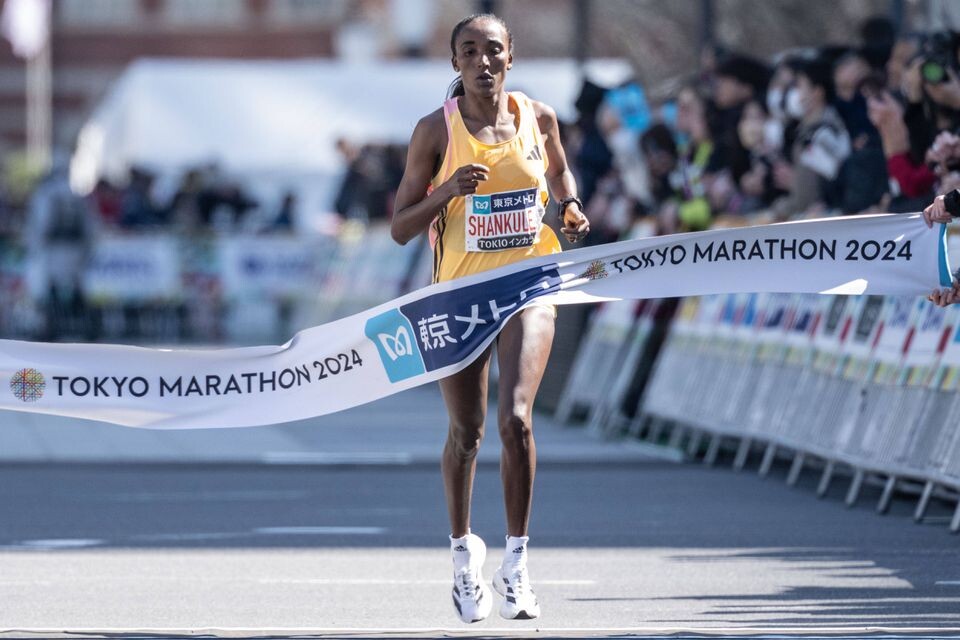
Athletes such as Ruth Chepngetich of Kenya and Tigst Assefa of Ethiopia have not only dominated the marathon world but have also broken significant barriers with their remarkable times.
The competitive landscape of the World Marathon Majors (WMM) — including iconic races like the Berlin Marathon, Chicago Marathon, and London Marathon — has seen historic performances from these and other top runners.
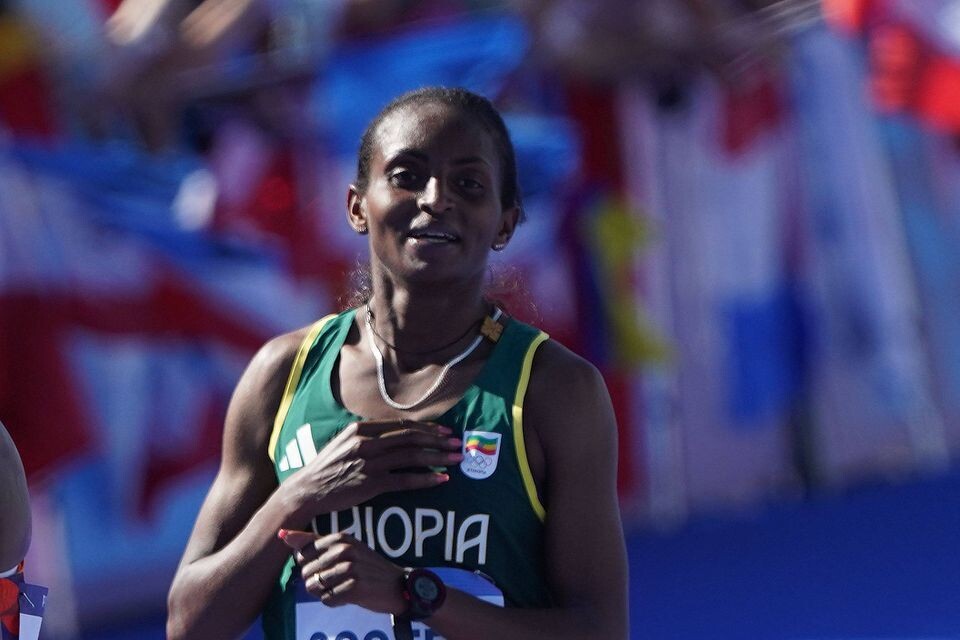
In this article, we review the top 5 fastest female marathoners in the world, analyzing their breakthrough races, their contributions to the sport, and how they continue to inspire future generations of athletes.
5. Amane Beriso Shankule (Ethiopia) – 2:14:58
Rounding out the top 5 is Amane Beriso Shankule of Ethiopia, whose incredible performance at the 2022 Valencia Marathon earned her a place among the fastest female marathoners. Shankule completed the race in 2:14:58, showcasing her strength and determination in long-distance running.
Although still relatively new to the elite marathon circuit, Shankule’s time places her in an elite group of women who have broken the 2:15 barrier. Ethiopia has long been a dominant force in long-distance running, and Shankule’s success further underscores the depth of talent in the country. Her performance in Valencia will likely serve as a stepping stone to even greater achievements in the future.
4. Brigid Kosgei (Kenya) – 2:14:04
Brigid Kosgei of Kenya is no stranger to marathon success, having made history during the 2019 Chicago Marathon. On October 13, 2019, Kosgei crossed the finish line in 2:14:04, breaking the previous world record and establishing herself as one of the sport’s all-time greats.
Kosgei’s performance in Chicago was groundbreaking, as she broke the world record that had stood for over 16 years. Her run was characterized by her smooth stride and exceptional stamina, which allowed her to dominate the race from start to finish. Her record time remained unbeaten until 2023 when Tigst Assefa surpassed it.
Kosgei’s marathon career has been illustrious, with multiple wins in prestigious events such as the London Marathon. Her success has further cemented Kenya’s reputation as a global leader in marathon running. Although her record was eventually broken, Kosgei’s achievements remain a significant chapter in the history of women’s marathoning.
3. Sifan Hassan (Netherlands) – 2:13:44
In third place is Sifan Hassan, a Dutch athlete known for her incredible versatility. Originally a middle-distance runner, Hassan shocked the world when she ran the 2023 Chicago Marathon in 2:13:44, marking her debut in the marathon with one of the fastest times ever recorded by a woman.
Hassan’s ability to transition from track events to the marathon is nothing short of exceptional. Her success in the 1,500m, 5,000m, and 10,000m events — where she has multiple Olympic and World Championship titles — clearly translated well to the marathon. Her 2023 performance in Chicago not only placed her among the fastest female marathoners but also demonstrated the potential for athletes to excel across different distances.
Hassan’s achievement has inspired many young runners, especially those who see her as a symbol of athletic versatility. By running one of the fastest marathons on her debut, Hassan proved that success in the marathon does not always require years of specialized training in the event.
2. Tigst Assefa (Ethiopia) – 2:11:53
Second on the list is Ethiopian sensation Tigst Assefa, who delivered a breathtaking performance at the 2023 Berlin Marathon. On September 24, 2023, Assefa finished the race in 2:11:53, setting a new course record and breaking the previous world record for female marathoners at the time. This monumental run placed her firmly among the fastest women in marathon history.
Assefa’s journey to the top has been remarkable. A former middle-distance runner, she transitioned to marathon running with great success, demonstrating her versatility across different distances. Assefa’s victory also highlighted Ethiopia’s dominance in marathon running, adding her name to a long list of world-class Ethiopian athletes who have left their mark on the sport.
With her record-breaking time, Assefa solidified her position as one of the greatest marathoners of all time.
1. Ruth Chepngetich (Kenya) – 2:09:56
Ruth Chepngetich stands as the fastest female marathoner in history, having recently shattered records at the 2024 Chicago Marathon. On October 13, 2024, Chepngetich clocked a stunning time of 2:09:56, becoming the first woman to break the 2:10 barrier. This incredible achievement has cemented her position as the top female marathoner globally.
Known for her aggressive pacing and strong endurance, Chepngetich’s performance in Chicago was nothing short of extraordinary. She had already been a prominent figure in the marathon world, having won the 2019 World Championships Marathon in extreme heat conditions. However, her 2024 run in Chicago redefined what was possible for women in the marathon, establishing her as a trailblazer in the sport.
Chepngetich’s ability to push boundaries continues to inspire countless female athletes, especially those from Kenya, where marathon running has become a symbol of national pride. Her record-breaking marathon will undoubtedly remain a benchmark for years to come.
(10/15/2024) Views: 118 ⚡AMPby Festus Chuma
Runners, you need to try bounding
Bounding isn't just for kids on the playground; it's a simple way to boost power and efficiency.
Bounding might look like a fun playground activity, but it’s actually a powerhouse move that can seriously elevate your running game. This dynamic drill is about more than just hopping around; it’s about building explosive strength, refining your running form and giving your legs the boost they need to power through tougher workouts. Adding bounding to your routine can unlock new levels of speed and efficiency, and the best part? It’s easy for any runner to start, no matter your experience level.
A science-backed power boost
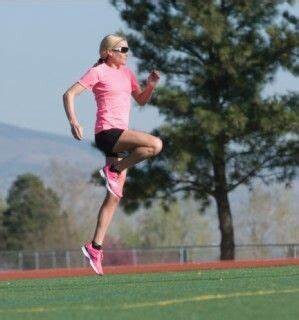
Bounding, an explosive running drill where you take exaggerated, powerful strides, mimics the mechanics of running but adds an exaggerated element of power and height. The act of bounding forces the legs to generate more force than usual, recruiting fast-twitch muscle fibres that are crucial for speed and explosive movement. Research shows that plyometric exercises like bounding can increase muscle stiffness, which, in turn, improves your body’s ability to store and release energy during a run, making you faster and more efficient.
Bounding also works the muscles in your hips, glutes and calves—important areas for maintaining a strong stride and reducing injury risk. By working on these muscle groups, runners can help prevent the fatigue that often slows them down in the later stages of a race or long run—it also improves ground contact time, meaning less stationary time and greater efficiency.

Whether you’re a beginner or an experienced marathoner, bounding is an accessible way to improve running economy. Its versatility means it can be done almost anywhere—on a track, a trail or right in your backyard. Because it doesn’t require special equipment, it’s easy to incorporate into your regular training routine. Bounding doesn’t just add power; it also increases your range of motion, helping you develop a longer and more efficient stride.
How to get started
Make sure to begin with a thorough warm up that includes a few minutes of easy running. Start with three sets of 10 bounds, focusing on form. Drive your knee up, push off powerfully with your back leg and land softly on the balls of your feet. Make sure to stay tall and controlled, allowing your arms to swing naturally with each bound.
(10/15/2024) Views: 83 ⚡AMPby Keeley Milne
Laura Hottenrott from Kassel is Europe's hope at the Frankfurt Marathon
Laura Hottenrott will be at the start of this year's Frankfurt Marathon. This was announced by the organizer on Tuesday. With a best time of 2:24:32 hours, the runner from Kassel is considered the fastest European in the strong field. At the Olympic Games in Paris, the North Hessian finished 38th in 2:31:19 hours.
However, Hottenrott will probably not compete for the title in Frankfurt. On October 27, six athletes will also be competing in the Main metropolis with best times under 2:23 hours. The fastest in the field is Tigist Abayechew, who ran 2:18:03 in Berlin two years ago. This makes the Ethiopian the fastest runner ever to be on a start list in Frankfurt.
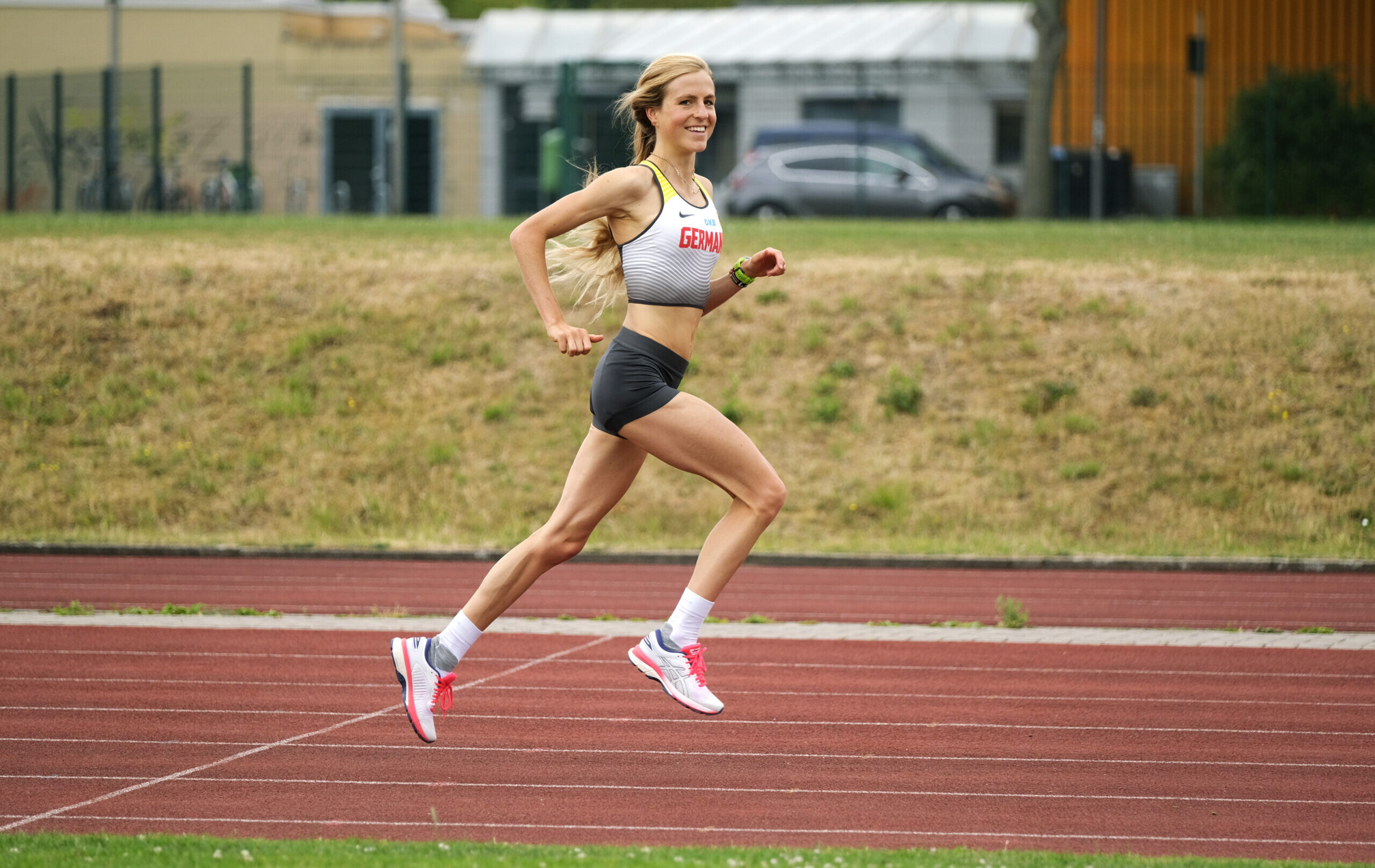
Organizers hope for new record time
"Due to the compact field in the women's top, we hope that we will see an exciting race and times of under 2:20:00 hours. Maybe even the course record set by Kenyan Valary Aiyabei five years ago will fall," said race director Jo Schindler.
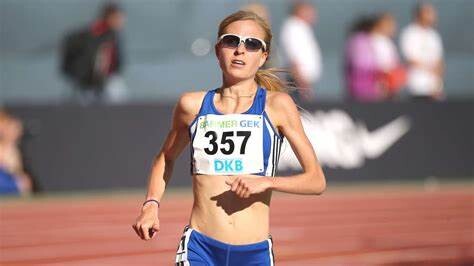
Aiyabei had run a time of 2:19:10 hours in 2019. Last year, winner Buzunesh Getachew Gudeta from Ethiopia was only 17 seconds slower.
(10/15/2024) Views: 111 ⚡AMPby Phil Hofmeister
Mainova Frankfurt Marathon
Frankfurt is an unexpectedly traditional and charming city, with half-timbered buildings huddled in its quaint medieval Altstadt (old city), cosy apple wine taverns serving hearty regional food, village-like neighbourhoods filled with outdoor cafes, boutiques and street art, and beautiful parks, gardens and riverside paths. The city's cache of museums is second in Germany only to Berlin’s, and its nightlife...
more...‘Back where I belong’ – Veteran Jamaican sprinter announces major comeback after recent struggles
The former world champion is raring to go again after enduring a lot of difficulties in recent years that have locked him out of major championships.
Former world champion Yohan Blake is promising a strong comeback after enduring a frustrating 2024 season.
Blake has not raced since July when he finished eighth at the London Diamond League, an outcome that saw him claim a lack of respect from Jamaicans.
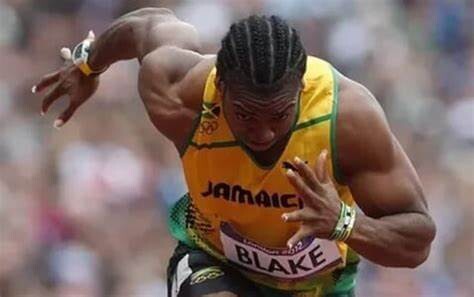
That was after missing a ticket to the Paris 2024 Olympics when he could not go past the preliminary round of the 100m at the Jamaican trials and there has been uncertainty over his athletics future, especially after he opened a restaurant in Florida, early this month.
However, the 34-year-old seems not ready to hang his spikes just yet and remains determined to revive his career heading into the 2025 season.
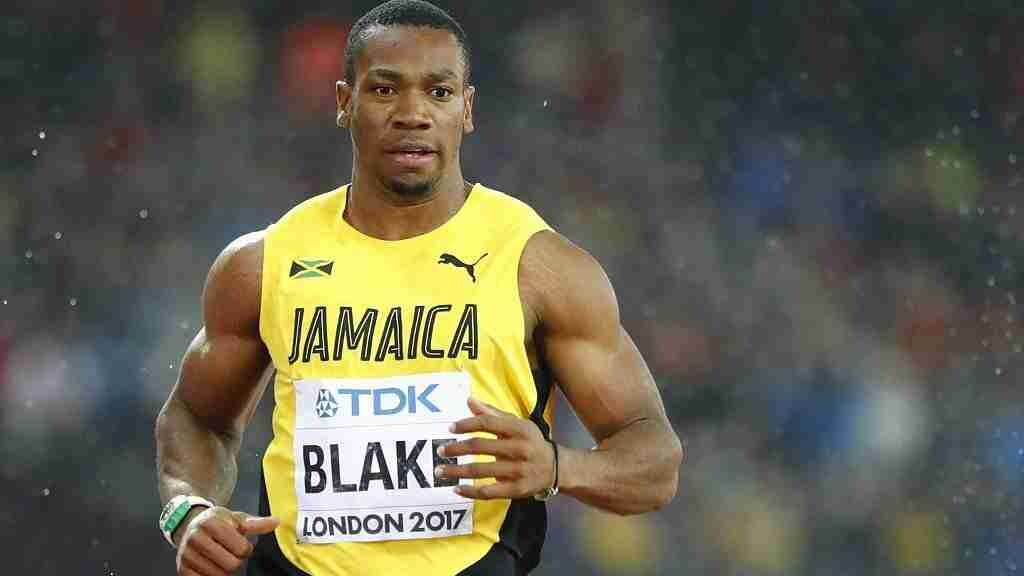
“The journey continues. Focused, determined, and back where I belong. Stay tuned for what’s next. With God, all things are possible,” Blake posted on social media.
Blake, who has two Olympics silver medals in 100m and 200m and as many gold in 4x100m relay, has been struggling to get back to his former glories.
The sprinter was regarded as one of the big prospects when he burst onto the scene but after an early promise, his powers have been waning in recent years, casting doubts on whether he will return to winning ways.
His main task now is to be fit and qualify for next year’s World Championships in Tokyo, Japan.
(10/15/2024) Views: 103 ⚡AMPby Joel Omotto
Vedanta Delhi Half Marathon 2024: Muktar Edris, Eilish McColgan lead field
The Vedanta Delhi Half Marathon 2024, a World Athletics Gold Label Road Race, is set to witness a world-class international roster headlined by Two-time Olympic gold medalist Joshua Cheptegei. He will be joined by the two-time 5000m World Champion Muktar Edris, which increases expectations for a course record in the men’s race.
The women’s field includes the 2022 Commonwealth Games champion in the 10,000m, Eilish McColgan. This prestigious event will take place in the heart of India’s National Capital on Sunday, October 20, 2024.
Fresh from his victory in the 10,000m at the Paris 2024 Olympics, Uganda’s Cheptegei is poised to make his debut in the Vedanta Delhi Half Marathon and has been a three-time World Champion in the 10,000m and boasts a personal best of 59:21 in the Half Marathon. His stellar career also includes a 5,000m gold and 10,000m silver at the Tokyo 2020 Olympics.
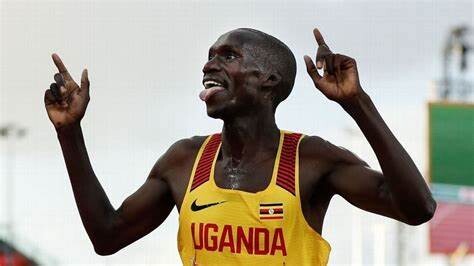
Ahead of the race, Cheptegei expressed: “I’m incredibly excited to debut at the Vedanta Delhi Half Marathon. This race is known for its energetic atmosphere, fast course, and unmatched Hospitality. I can’t wait to soak it all in and push myself to deliver a memorable performance. With such a competitive line-up, it will be an exciting challenge, and I’m aiming for nothing less than the top spot.”
Cheptegei will face formidable opposition from Ethiopia’s Muktar Edris, who will be returning to the Vedanta Delhi Half Marathon after 2022. A star of the sport at the junior level, Edris finished fourth on debut in the Delhi Half Marathon in 2020 with an impressive run of 59:04. Before that, he won two world championship titles in the 5,000m during 2017 and 2019.
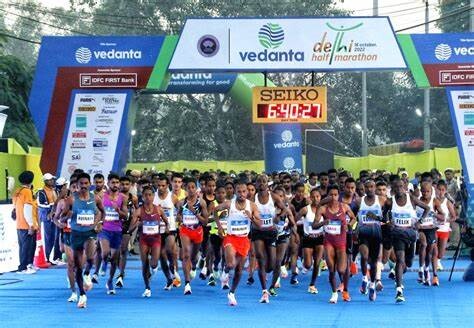
Eilish McColgan leading women’s line-up
Eilish won gold in the 10,000m at the 2022 Commonwealth Games in Birmingham, setting a new Games record, and settled for silver in the 5000m.
McColgan holds the European record for the 10 km road race and British records for multiple distances. She has also represented Great Britain in four Olympic Games (2012-2024) and Scotland in three Commonwealth Games (2014-2022). She holds Scottish records in multiple events and has claimed seven national championships, cementing her status as one of Scotland’s most accomplished runners. Last year, she won the Berlin half-marathon with a personal best 65:43.
Several top athletes, including Kenya’s Cynthia Limo (66:04), Ethiopia’s Yalemget Yaregal (66:27) and Tiruye Mesfin (66:31), and Tanzania’s Magdalena Shauri (66:37), are joining McColgan in the women’s race. With five women having clocked times under 67 minutes, the competition promises to be thrilling and fast-paced.
Ethiopians Amdework Walelegn (58:53) and Yalemzerf Yehualaw (64:46) have held the Course Records in the Vedanta Delhi Half Marathon since 2020.
The Vedanta Delhi Half Marathon, with a prize pool of USD 260,000, will begin at the iconic Jawaharlal Nehru Stadium, where elite athletes will be joined by India’s top runners and passionate amateurs, united in the spirit of #AaRangDeDilli.
(10/14/2024) Views: 153 ⚡AMPby Khel Now
Vedanta Delhi Half Marathon
The Airtel Delhi Half Marathon is a haven for runners, creating an experience, that our citizens had never envisaged. The streets of Delhi converted to a world-class running track. Clean, sanitized road for 21.09 kms, exhaustive medical support system on the route, timing chip for runners, qualified personnel to ensure smooth conduct of the event across departments. The race...
more...How to train for a marathon no matter how fit you are
If you’re planning a marathon, you’re on the road to becoming part of a select proportion of the global population – 0.01 per cent, to be exact. But that doesn’t mean running one is exclusive to the lycra-clad minority. With the right planning, training and dogged determination anyone can have a go. Here’s what you need to know if you’re gearing up to train for the race of your life.
Which marathon should I choose to run?

The London Marathon is special, with incredible atmospheric and historic appeal, but it’s notoriously tricky to get a place and is far from the only one to consider. All marathons are 26.2 miles, so if you’re a beginner, you might want to choose what seasoned runners call an “easy” marathon – one with a flat and paved course. While the Brighton Marathon is one of the most popular (and mostly flat) UK spring races, the Greater Manchester Marathon is known as the flattest and fastest UK option. The under-the-radar Abingdon Marathon is one of the oldest in the UK and also has a flat route – great for new runners and for those who are keen to beat their personal bests.
Around Europe, try the Berlin and Frankfurt marathons in Germany, or the Amsterdam Marathon in the Netherlands. More recently, the Valencia and Seville marathons in Spain have grown in appeal. For a great beginner list, visit coopah.com. It’s worth doing your research to ensure it’s a route you’ll enjoy (atmospheric, well populated, flat, historic… whatever piques your interest), as this will pay dividends when things get tough.
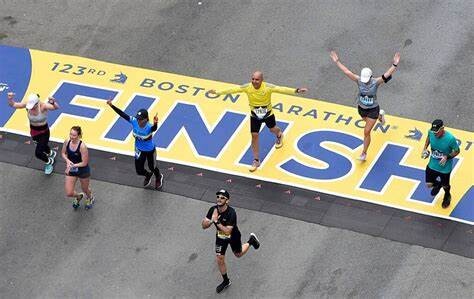
Training
How long does it take to train for a marathon?
“You need 16-to-18 weeks of training,” says Richard Pickering, a UK Athletics qualified endurance coach. “And if you’re starting from nothing, I think you need closer to six months.” This may sound like a long time to dedicate to one event but a structured plan will help you develop the strength, endurance and aerobic capacity to run longer distances. Not to mention work wonders for your overall health.
“Anyone can run a marathon if they are willing to put in the hard work,’ says Cory Wharton-Malcolm, Apple Fitness+ Trainer and author of All You Need Is Rhythm & Grit . “As long as you give yourself enough time and enough grace, you can accomplish anything.’
Ready to get running? Read on.
Five steps to preparing for a marathon
1. Follow a training plan and increase mileage gradually
“Even if it’s a simple plan, and that plan is to run X times per week or run X miles per week, it’s beneficial to have something guiding you,’ says Wharton-Malcolm. ‘It’s happened to me, without that guidance, you may overtrain causing yourself an injury that could have been avoided. And if you’re injured, you’re far less likely to fall in love with running.”
For authoritative plans online, see marathon event websites (try the Adidas Manchester Marathon or the TCS London Marathon websites) or from a chosen charity such as the British Heart Foundation. Most will consist of the key training sessions: speed work (spurts of fast running with stationary or active rest periods), tempo runs (running at a sustained “comfortably uncomfortable” pace), and long-distance slogs.
Most marathon plans will abide by the 10 per cent rule, in that they won’t increase the total run time or distance by more than 10 per cent each week – something that will reduce your risk of injury.
2. Practise long runs slowly
Long runs are your bread-and-butter sessions. They prepare your body to tolerate the distance by boosting endurance, and give you the strength to stay upright for hours. Intimidating as this sounds, the best pace for these runs is a joyously slow, conversational speed.
“People may think they need to do their marathon pace in long runs,” says Pickering, “but it’s good to run slowly because it educates the body to burn fat as fuel. This teaches it to use a bit of fat as well as glycogen when it goes faster on race day, and that extends your energy window so that you’re less likely to hit the ‘wall’.”
The caveat: running slowly means you’re going to be out for a while. With the average training plan peaking at 20 miles, you could be running for many hours. “When I did lots of long runs, I had a number of tools: listening to music, audio-guided runs, apps or audio books,” says Wharton-Malcom. “I used to run lots of routes, explore cities… You can also do long runs with friends or colleagues, or get a train somewhere and run back so it’s not the same boring route.”
3. Do regular speed work
Speed work may sound like the reserve of marathon aficionados, but it’s good for new long-distance runners too. “I think people misunderstand speed work,” says Wharton-Malcom. “The presumption is that the moment you add ‘speed’ to training, you have to run like Usain Bolt, but all ‘speed’ means is faster than the speed you’d normally be running. So if you go out for a 20-minute run, at the end of the first nine minutes, run a little faster for a minute, then at the end of the second nine minutes, run a little faster for a minute.”
Small injections of pace are a great way for novices to reap the benefits. “The idea is to find the sweet spot between ‘Ah, I can only hold on to this for 10 seconds’ and ‘I can hold on to this for 30-to-60 seconds’,” he adds.
Hill sprints are great for increasing speed. Try finding a loop with an incline that takes 30 seconds to ascend, then run it continuously for two to three lots of 10 minutes with a 90-second standing rest.
Interval work is also a speed-booster. Try three lots of three minutes at tempo pace with a 90-second standing rest. “The recovery [between intervals] is when you get your breath back and your body recirculates lactate [a by-product of intense exercise, which ultimately slows bodies down],” explains Pickering, “and this means you’re able to do more than you otherwise would.”
4. Run at marathon-pace sometimes
Every now and then, throw in some running at your chosen race pace. “You need to get used to a bit of marathon pace,” says Pickering, “but I wouldn’t put it into your programme religiously.”
Some runners like to practise marathon pace in a “build-up” race, typically a half-marathon. “It can give people confidence,” says Pickering. “Your half-marathon should be six-to-seven weeks prior to the main event, and have a strategy to ensure you’re not racing it because you need to treat it as a training run.”
5. Schedule in rest and recovery
Of course, no training plan is complete without some R&R. Rest days give your body a chance to adapt to the stresses you’ve put it through and can provide a mental break. “Active recovery” is a swanky term for taking lighter exercise such as an easy run, long walk, gentle swim, some yoga – crucial because you don’t want to do two hard sessions back-to-back. “A long run would count as a hard day, so if your long run is on Sunday, you could do an easy run such as 30-40 minutes at a conversational pace on a Monday, but don’t do anything fast until Tuesday,” says Pickering.
What about recovery tools?
Foam rollers, massage guns, ice baths – the list is long. Pickering says to keep it simple: “I would encourage foam rolling [relieving muscle tension by rolling over a foam tube] or sports massage, and they’re kind of the same thing.”
And Wharton-Malcom swears by the restorative power of a good rest: “From personal experience, sleep is our secret weapon and it’s so underrated. Getting your eight-hours-plus per night, taking power naps during the day… you can do so well with just sleeping a bit more.”
Race day
How to perform your best on race day – what to eat
“The marathon is going to be relying on carbohydrate loading [such as spaghetti, mashed potato, rice pudding], which should take place one-to-three days before an event,” explains performance nutritionist Matt Lovell. Other choices might include: root vegetables (carrots, beetroot), breads or low-fat yoghurts.
“On the day, the main goal is to keep your blood glucose as stable as possible by filling up any liver glycogen.” Which means eating a breakfast rich in slow-release carbohydrates, such as porridge, then taking on board isotonic drinks, like Lucozade Sport or coconut water, and energy gels roughly every 30-45 minutes.
How to stay focused
Even with the right fuel in your body, the going will get tough. But when you feel like you can’t do any more, there is surprisingly more in the tank than you realise.
“Sports scientists used to think we eat food, it turns into fuel within our body and, when we use it up, we stop and fall over with exhaustion,” says performance psychologist Dr Josephine Perry. “Then they did muscle biopsies to understand that, when we feel totally exhausted, we actually still have about 30 per cent energy left in the muscles.”
How do you tap into that magic 30 per cent? By staying motivated – and this ultimately comes down to finding a motivational mantra that reminds you of your goal and reason for running.
“Motivational mantras are incredibly personal – you can’t steal somebody else’s because it sounds good; it has to talk to you,’ explains Dr Perry, author of The Ten Pillars of Success. “Adults will often have their children as part of their motivational mantra – they want to make them proud, to be a good role model. If you’re doing it for a charity, it might be that.” Write your motivational mantra on your energy gel, drinks bottle or hand. “It doesn’t just need to come from you,” adds Dr Perry. “I love getting athletes’ friends and family to write messages to stick on their nutrition, so every time they take a gel out of their pocket, they’ve got a message from someone who loves them.” Perry is supporting the Threshold Sports’ Ultra 50:50 campaign, encouraging female participation in endurance running events.
Smile every mile, concludes Dr Perry: “Research shows that when you smile it reduces your perception of effort, so you’re basically tricking your brain into thinking that what you’re doing isn’t as difficult as it is.”
One thing is for sure, you’re going to be on a high for a while. “What happens for most people is they run the race and, for most of the race, they say ‘I’m never doing this again,’ says Wharton-Malcom. “Then the following morning, they think, ‘OK, what’s next?’”
What clothes should you wear for a marathon?
What you wear can also make a difference. Look for clothing made with moisture-wicking fabrics that will move sweat away from the skin, keeping you dry and comfortable. An anti-chafe stick such as Body Glide Anti-Chafe Balm is a worthy investment, or simply try some Vaseline, as it will stop any areas of the skin that might rub (under the arms, between the thighs) from getting irritated. Seamless running socks, like those from Smartwool, can also help to reduce rubbing and the risk of blisters.
Post-race recovery
What to eat and drink
Before you revel in your achievement, eat and drink something. Lovell says recovery fuel is vital: “Getting carbohydrates back into the body after a marathon is crucial. It’s a forgiving time for having lots of calories from carbohydrates and proteins, maybe as a recovery shake or a light meal such as a banana and a protein yoghurt.”
Have a drink of water with a hydration tablet or electrolyte powder to replenish fluid and electrolyte salts (magnesium, potassium, sodium) lost through sweat.
“You can have a glass of red later if you want, but your priority is to rehydrate with salts first, then focus on carbohydrate replenishment, then have some protein, and then other specialist items such as anti-inflammatories.” Choose anti-inflammatory compounds such as omega 3 and curcumin from turmeric, which you can get as a supplement, to help reduce excessive inflammation and allow for better muscle rebuilding.
Tart cherry juice – rich in antioxidants, anti-inflammatories and naturally occurring melatonin – could also be useful, with the latest research reporting that it can reduce muscle pain after a long-distance race and improve both sleep quantity and quality by five-to-six per cent. “And anything that improves blood flow such as beetroot juice, which is a good vasodilator, will help with endurance and recovery,” adds Lovell. Precision Hydration tablets are very good for heavy sweaters.
Any other other good products to help with recovery?
The post-run recovery market is a saturated one, but there are a few products worth trying. Magnesium – from lotions and bath flakes to oil sprays drinks and supplements – relaxes muscles and can prevent muscle cramps, as well as aiding recovery-boosting sleep.
Compression socks boost blood flow and therefore the removal of waste products from hardworking muscles, and have been shown to improve recovery when worn in the 48 hours after a marathon. Arnica has anti-inflammatory properties that can help speed up the healing process after a long run, and can be used as an arnica balm or soak.
(10/14/2024) Views: 109 ⚡AMPby The Telegraph
Kenian Kinyamal wins 40th Eindhoven Marathon
Enock Kinyamal came first in the ASML Marathon. The Kenian widened the gap between himself and his competitors and finished at 2.06.28, four minutes faster than his previous personal record.
The top athletes ran as a group for a long time. However, near the finish of the fortieth edition of the Eindhoven Marathon, Kimyamal proved the other runners were no match for him. Then again, his time did not approach the course record, established at 2.04.52 by last year’s winner Kenneth Kipkemoi.
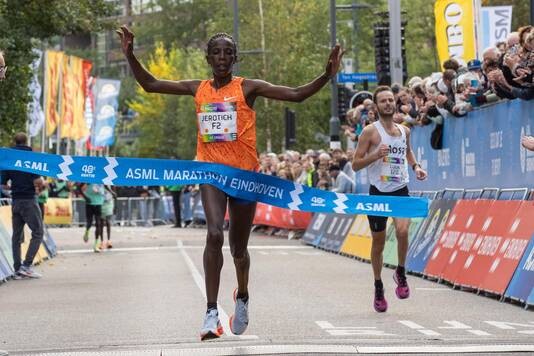
Fastest Dutchman
Manuel de Backer was the fastest Dutchman, finishing at 2.16.58, managing to lower his personal record by almost a minute. “Every step in the final kilometre was a battle. But when I reached the city centre and everyone shouted my name, I was immensely happy. Now for a bit of rest and then it’s time for the afterglow. With a few beers, yes”
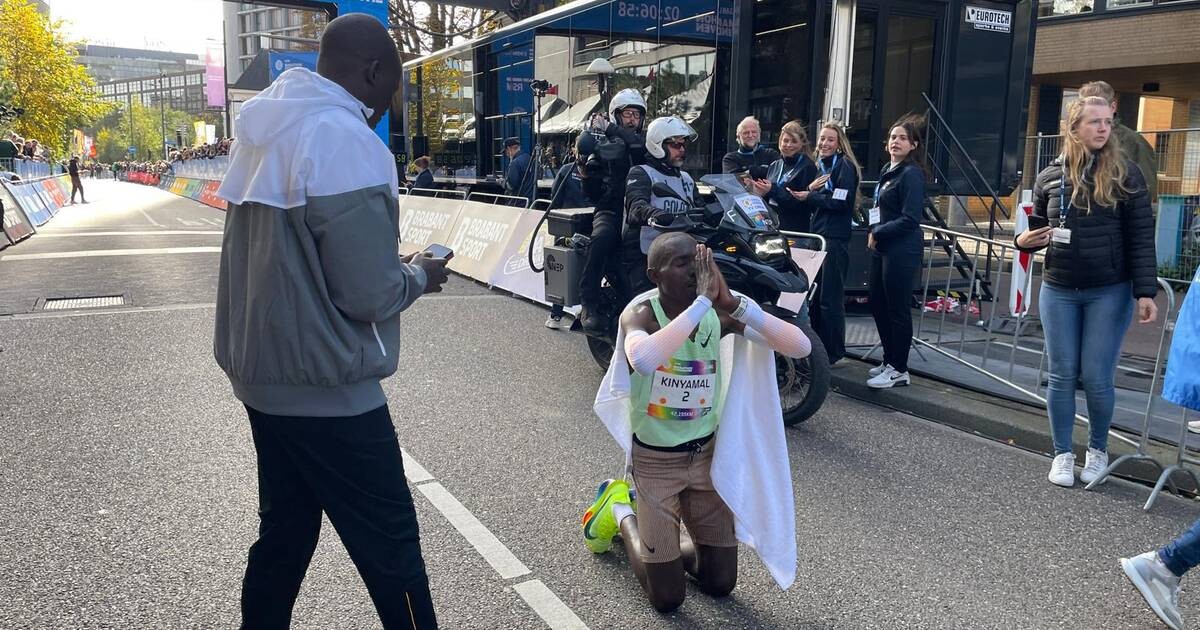
Women
Kenia ruled supreme among the women for the entire duration of the marathon. Winner Vivian Jerotich clocked at 2.26.41. The half-marathon was won by Ties van den Hurk from Nijmegen, at 1.06.34. The fastest woman is Jamie van Lieshout from Bergeijk (1.18.56).
A Dutch and a Belgian runner came first in the quarter marathon. Jesse Holten was the fastest man at 34.45. Tine Vandenborne was the first woman to cross the finish line. She ran her distance in 39.08.
(10/14/2024) Views: 116 ⚡AMPby Greta Timmers
Marathon Eindhoven
The Eindhoven Marathon is an annual marathon held in the city of Eindhoven every second Sunday of October. It has been an annual race since 1990. There is also a half marathon, 10K and 5k. The 2018 race was the 35th annual event. Dickson Kiptolo Chumba and Georgina Rono are the men's and women's course record holders with times of...
more...Olympian Genevieve Gregson posts first marathon win in Melbourne
Genevieve Gregson has scored her first marathon win, two months after running in the event at the Paris Olympics..
The Queenslander won the Melbourne Marathon on Sunday in two hours, 28 minutes and 13 seconds, beating local Sarah Klein by nearly three minutes. Kate Mason, also from Melbourne, completed the women's podium in 2:34:08.
Genevieve's husband Ryan Gregson finished second in the men's race behind Jack Rayner, who clocked 2:11:49 after winning the Melbourne half-marathon for the past three years.
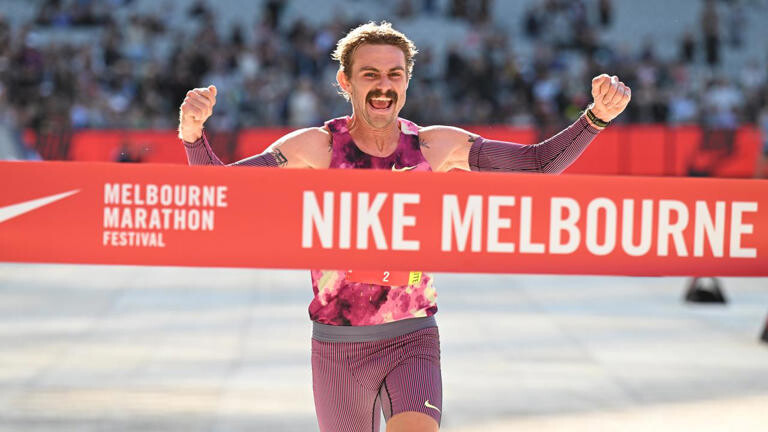
Gregson finished in 2:13:31 to take another step in his transition from middle-distance events, while New Zealander Christopher Dryden posted 2:18:10 for third.
It was the first time the two winners have run the full distance in Melbourne.
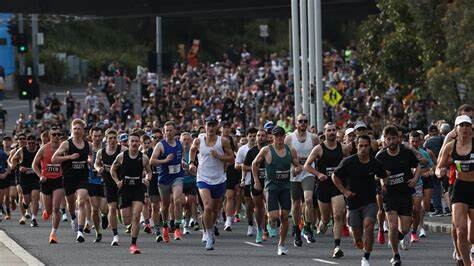
Paris was Genevieve's third marathon and she clocked 2:29:56 for 24th place at the Games, after running on the track at the previous three Olympics.
The 46th Melbourne Marathon festival attracted 42,000 runners, with Bendigo's Andy Buchanan winning the men's half-marathon in 1:01:42 after he also ran in the marathon at the Paris Games.
Leanne Pompeani from Canberra took out the women's race, posting 1:09:01 in an exciting finish.
Adelaide's Jess Stenson, one of Gregson's Paris Olympics marathon teammates, was only two seconds behind Pompeani in second.
Only eight seconds separated first from third, with Paris Olympics 5000m runner and fellow Adelaide entrant Izzi Batt-Doyle completing the podium.
(10/14/2024) Views: 95 ⚡AMPby Roger Vaughan
Melbourne Marathon
Be a part of Australia’s largest marathon and race alongside marathon legends. Circle around Albert Park Lake, Flinders Street Station, pass the St Kilda beach foreshore and cross the finish line at the MCG to cheers from supporters, family and friends. The Nike Melbourne Marathon is a competitive, adrenaline-filled race for those experienced in marathon running who want to set...
more...Another look at the new women’s marathon record set in Chicago today
30-year-old Kenyan Ruth Chepngetich destroyed the women’s marathon world record today (13 Oct. 2024) at the 46th Bank of America Chicago Marathon. Her time of 2:09:56 ripped 1:57 from the previous mark set in Berlin 2023 by Ethiopia’s Tigst Assefa (2:11:53).
At this point, the athletics record book feels like it ought to be written in No. 2 Ticonderoga pencil. That’s how fast records fall in this age of technological and nutritional advances. This is especially true at the longer distances where such advancements create greater margins.
Still, Ruth Chepngetich’s new world record stands out as history’s first women’s sub-2:10, and first sub-5:00 per mile pace average. But Tigst Assefa’s 2:11:53 mark set last year in Berlin had us all cradling our heads, as well. That performance cut 2:11 off Brigid Kosgei‘s 2:14:04 record from Chicago 2019, which shattered Paula Radcliffe‘s seemingly impregnable 2:15:25 set in London 2003.
In each case: Radcliffe’s, Kosgei’s, Assefa’s, and now Chepngetich’s record have caused mouths to gape in the immediacy of their efforts. But nothing should surprise us anymore.
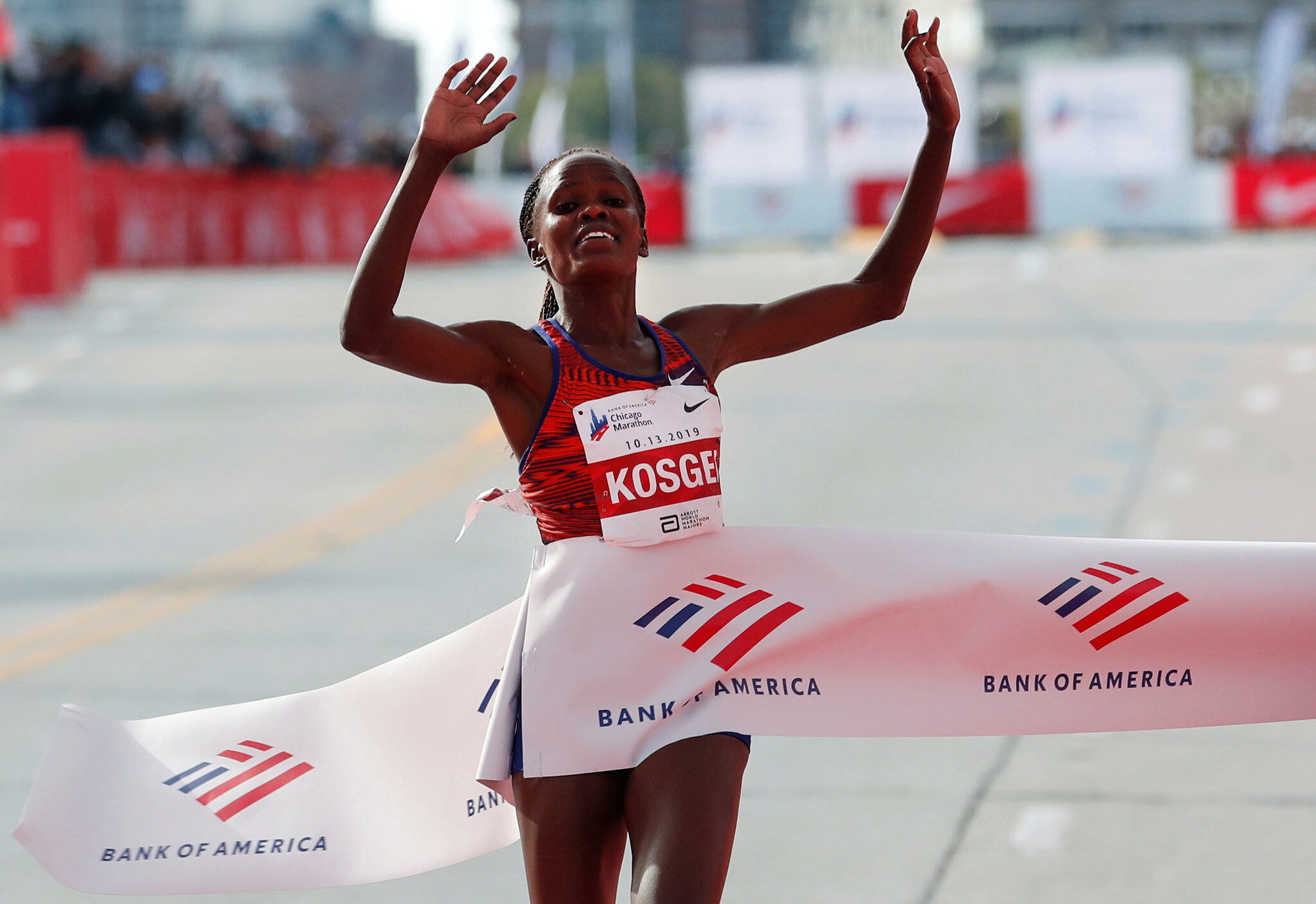
Racing is often a self-fulfilling prophecy determined by one’s build-up. Ruth Chepngetich said in her TV interview she came into Chicago off a perfect three-months of training after her disappointing ninth-place finish in London in April (2:24:36). Two previous wins in the Windy City (2021 and 2022) and a runner-up in 2023 meant Ms. Chepngetich arrived well seasoned on this course, with a keen understanding of what training was required to produce such a record run.
Of course, sadly, no record in athletics can be free of skepticism considering the industrial level of PED use that is uncovered, seemingly, every other Tuesday. Though understandable, cynicism should not be one’s default reaction.
To maintain any allegiance to the game, to follow it with any interest at all, we have to celebrate each record at face value. Just as rabid fans have to acknowledge some records to be ill-gotten, cynics accept that many special runs are exactly as they appear, above reproach.
Besides, when you break down Ruth’s 5k splits, each one from 5k to 35k was slower than the previous 5k. Not until the split from 35k to 40k (15:39) did she run faster than the split before (15:43 from 30 to 35k)
5k – 15:0010k – 30:14 (15:14)15k – 45:32 (15:18)20k – 60:51 (15:19)25k – 1:16:17 (15:26)30k – 1:31:40 (15:32)35k – 1:47:32 (15:43)40k – 2:03:11 (15:39)Fini – 2:09:56
1st half – 64:162nd half – 65:40
So congratulations to Ruth Chepngetich and her team for a marvelous run through a beautiful city. Now, let’s see how long this mark stays on the books before the No. 2 Ticonderoga pencil gets pulled out again.
BY THE NUMBERS
There have been 26 women’s world records set in the marathon since Beth Bonner‘s 2:55:22 in New York City in 1971. Over the ensuing 53 years, the average percentage change from one record to the next has been 1:26%. See WOMEN’S WORLD RECORD PROGRESSION.
Today’s record by Ruth Chepngetich, 2:09:56 (just one second slower than Bill Rodgers‘ American men’s record in Boston 1975!), lowered Tigst Assefa’s 2:11:53 mark by a healthy 1.5%. And Assefa’s time cut Brigid Kosgei’s 2:14:04 by 1.65%.
These latest records are still taking significant chunks off their predecessors and doing so in quick order. That suggests women are far from slicing everything they can from even this new record.
Yet, when comparing the women’s marathon world record to the men’s (2:00:35, set by Kelvin Kiptum in Chicago 2023), we see a differential of 7.2%. That is by far the best women’s record vis-à-vis the men’s throughout the running spectrum. Second place on that list is Florence Griffith-Joyner‘s 10.49 100m in relation to Usain Bolt‘s 9.58, a percentage difference of 8.675%.
The traditional rule of thumb has been a 10% gap between men’s and women’s records. But there are so many factors in play, it is difficult to make any definitive statement that explains one event, much less one athlete from another. I guess that’s why we keep watching.
(10/13/2024) Views: 202 ⚡AMPby Toni Reavis
Bank of America Chicago
Running the Bank of America Chicago Marathon is the pinnacle of achievement for elite athletes and everyday runners alike. On race day, runners from all 50 states and more than 100 countries will set out to accomplish a personal dream by reaching the finish line in Grant Park. The Bank of America Chicago Marathon is known for its flat and...
more...Kenyan debutant Nehemiah Kipyegon and Ethiopian newcomer Asmare Assefa win in Munich
Kenyan debutant Nehemiah Kipyegon took the 38th edition of the GENERALI MUNICH MARATHON, beating his challengers by a huge margin while also fighting against windy and rainy conditions. Taking into account the wet weather during the second half of the race the 26 year-old showed an impressive performance and clocked a highly respectable 2:10:02.
In a race without pacemakers he was in the lead throughout and achieved the fourth fastest winning time in the history of the event. Nehemiah Kipyegon was more than five minutes ahead of Siyum Tola. The Ethiopian ran his first marathon as well and finished in 2:15:29. Kenya’s Benard Chumba was third in 2:19:00.
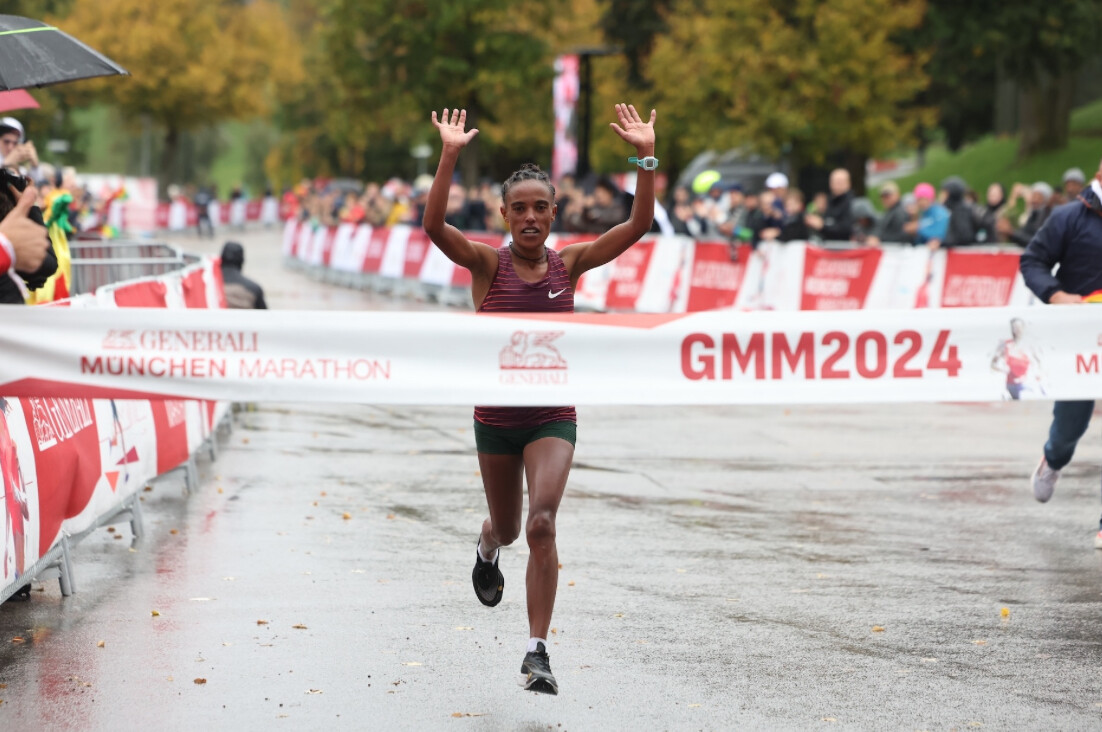
Running her first race in Europe Ethiopia’s newcomer Asmare Assefa won the race in 2:29:44. The 26 year-old clocked a personal best and the second fastest winning time of the GENERALI MUNICH MARATHON. Kenya’s Shamilah Kipsiror was second in 2:34:01 and Gelane Senbete of Ethiopia followed in third with 2:35:44.
Organisers of the GENERALI MUNICH MARATHON registered a record number of almost 28,000 entries from 120 nations including events at shorter distances. Among them were 6,250 marathon runners.
“Today we witnessed a superb event with an impressive entry record and we have further established the international standing of the GENERALI MUNICH MARATHON. We hope that we can continue staging this race,“ said Race Director Gernot Weigl, who also pointed out the huge financial benefit the marathon generates for the city of Munich. It is estimated that this is in the region of twelve million Euro.
Nehemiah Kipyegon, who had recently improved his half marathon PB to 60:34 in Copenhagen, took the lead right after the start with four runners following behind him. Without any pacemakers he then reached the half marathon point in 64:13. At this point only Siyum Tola and William Kibor of Kenya were still behind him. However Kibor dropped back soon after half way. The Kenyan suffered badly with muscle problems and later finished well behind in 2:26:13. In a duel of two debutants Tola could not hold on for long.
When Kipyegon ran sub 3:00 kilometre splits between 24 and 26k the Ethiopian was beaten. “He did not help pacing, so I decided to make a move,“ said Nehemiah Kipyegon, who lives and trains in Keringet which is in between Nairobi and Eldoret. “This is my biggest career win so far. I think I can run times of around 2:05 in the future.“
In the women’s race four runners passed the 10k mark in 34:54. Running without pacemakers as well Shamilah Kipsiror did most of the pacing. While Ethiopians Gelane Senbete and Gadise Negasa were dropped Asmare Assefa stayed behind the Kenyan. When the two passed the half marathon point in 73:34 they were almost a minute ahead already. With less than ten kilometres to go Assefa finally passed Kipsiror and quickly build a big lead. The Kenyan was so exhausted that she collapsed after crossing the finish line and needed medical treatment.
“I was able to stay behind Shamilah for a long period and it went very well for me. However it was getting difficult when the rain turned stronger at around 27k. I think in good weather conditions I would have been three minutes faster,“ said Asmare Assefa. “I would like to come back to Munich for this race next year.“
(10/13/2024) Views: 134 ⚡AMPGenerali Munich Marathon
The GENERALI MUNICH MARATHON has held the elite label of the WORLD ATHLETICS since 2020 and the marathon route is officially measured and recognized. The route runs from the Olympic Park and Schwabing to Leopoldstraße with the Siegestor, via Königsplatz and the Pinakotheken to the English Garden. From there past the Chinese Tower and Art Nouveau villas in Bogenhausen, through...
more...Chepngetich smashes world marathon record in Chicago with 2:09:56
Kenya’s Ruth Chepngetich took almost two minutes off the world record* at the Bank of America Chicago Marathon, winning the World Athletics Platinum Label road race in 2:09:56 on Sunday (13).
Not only did she obliterate Tigist Assefa’s world record of 2:11:53, set in Berlin last year, Chepngetich also notched up her third Chicago Marathon victory and chopped more than four minutes off her previous best of 2:14:18, set when winning her in 2022.
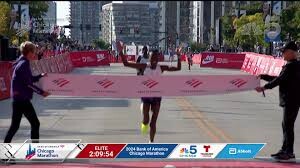
On a good day for Kenyan runners, John Korir took the men’s title in 2:02:43, the second-fastest time ever recorded in Chicago behind the world record of 2:00:35 set by the late Kelvin Kiptum last year.
Chepngetich’s intent was clear from the start. She breezed through the first 5km in 15:00 and had Ethiopia’s Sutume Asefa Kebede for company, and then reached 10km in an astonishing 30:14 with Kebede still just two seconds behind.
Chepngetich continued her relentless pace and hit the half-way mark in an incredible 1:04:16, the fifth-fastest clocking in history for the half marathon distance and putting her on course for a sub-2:09 finish. Kebede had started to drop behind, but she was still operating well inside world record pace, reaching the half-way point in 1:04:30, three minutes ahead of Joyciline Jepkosgei.
The gap between Chepngetich and Kebede continued to grow throughout the second half. The pace of both women dropped, Kebede’s more so than Chepngetic, and by 30km (1:31:49) the Kenyan had a lead of almost two minutes over her Ethiopian rival.
Chepngetich’s next 10km was covered in 31:22, which was her slowest of the race so far, but still remarkably quick and enough to increase her leading margin to more than six minutes. With little more than two kilometres left to run, she was still well inside world record pace, the likelihood of breaking it increasing with every step.
Spurred on by her memories of the 2022 race, when she missed out on the world record by just 14 seconds, Chepngetich powered through the final stages and crossed the line in 2:09:57, becoming the first woman to break 2:10. Remarkably, only nine athletes went quicker in the men’s race today.
“I feel so great. I’m very proud of myself. This is my dream. I fought a lot, thinking about the world record. The world record has come back to Kenya, and I dedicate this world record to Kelvin Kiptum.”
Kebede held on for second place in 2:17:32 while Kenya’s Irine Cheptai came through for third place in 2:17:52.
By contrast, the men’s race got off to a relatively conservative start before Korir broke away and sped up in the second half en route to a dominant win with huge negative splits.
A lead pack of 10 men ran together through the first 10km in 29:27, and they were still one big group as they passed through the half-way point in 1:02:19, putting them on course for a 2:04:38 finish.
Korir, along with fellow Kenyans Daniel Ebenyo and Amos Kipruto, continued to push the pace into the second half. By 30km, reached in 1:28:18, the lead group was down to seven men. But soon after, Korir increased his pace and broke free from the pack, creating a gap of 29 seconds by the time he reached 35km.
His leading margin continued to grow, and by 40km his lead was 92 seconds over Kipruto and Ethiopia’s Huseydin Mohamed Esa. Korir sped up in the final kilometres and crossed the line in 2:02:43, having covered the second half in 1:00:24. Esa was second in 2:04:39 and Kipruto third (2:04:50).
(10/13/2024) Views: 128 ⚡AMPBank of America Chicago
Running the Bank of America Chicago Marathon is the pinnacle of achievement for elite athletes and everyday runners alike. On race day, runners from all 50 states and more than 100 countries will set out to accomplish a personal dream by reaching the finish line in Grant Park. The Bank of America Chicago Marathon is known for its flat and...
more...Erika Kemp Wins the 2024 Boston 10K for Women, presented by REI
rika Kemp Wins the 2024 Boston 10K for Women, presented by REI
Kemp holds off Annie Rodenfels and wins her second Boston 10K for Women in 31:48
BOSTON – It was a return to glory for Erika Kemp for Providence, who won the 48th Boston 10K for Women in a personal best time of 31:48. Kemp, who also won the 2022 event in a then-PR of 32:15, outlasted 2023 champion Annie Rodenfels who finished in 31:54. Emily Venters of Salt Lake City finished third in a time of 32:11.
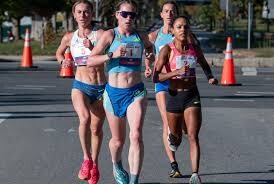
Under a postcard perfect autumn day, temperatures hovered in the 50s as more than 5,000 registrants from 40 states gathered at the second longest-running all-women’s race in the country. Following her fourth-place last year, it was course experience and lessons learned that fueled Kemp’s winning strategy.
“Winning is always so fun, but winning here is a little extra special,” said the 29-year-old Kemp, who earned $10,000 with the win. “Right before the race, one of the volunteers told me I had to do it for the women today, and I was like ‘we’re all here for the women,’ and he said, ‘but you have to do it more,’ and I really took that to heart.”
Kemp, Rodenfels, Venters, and Bethany Jerde represented a four-woman pack that sped through a 5:01 first mile, splitting a canyon of foliage on Beacon Street, before turning right onto the Massachusetts Avenue bridge. As they crossed the Charles River into Cambridge, a 5:11 second mile thinned the chase pack, and four leaders had a six second lead on fifth place.
“I took it out a little hard which I wasn’t necessarily meaning to do,” said Rodenfels, who lives in Boston and earns $5,000 with a second-place finish. “But I felt good, and I thought we would kind of burn [the competition] out a little sooner than if we went out conservatively.”Approaching mile three, Kemp took on a slight headwind and carried the hot pace westward along the Charles River with a 5:01 mile. Jerde fell off the pack as the Memorial Drive course dipped below Massachusetts Ave. “I was a little bit haunted by my fourth-place finish last year,” said Kemp. “I vividly remember going under that underpass around mile three, and that tiny uphill right after the bridge. In those moments last year, I backed off when I should have pushed harder. So this year I stepped on the gas a little more.”
As the three runners switched back to the eastbound direction at the 3.5 mile mark, Kemp and Rodenfels exchanged surges, and Venters fell three seconds behind. Turning back onto the Massachusetts Ave. bridge and heading toward Boston, Kemp, Rodenfels, and Venters were greeted by a roar of thousands of women running in the other direction.
“Coming over that bridge around mile four, running past the field of women – their energy will literally push you through those last two miles,” said Kemp. “And it was on another level today.”
Kemp led by two seconds as the runners re-entered Back Bay, and turned left onto Commonwealth Ave., with Kemp dropping another 5:01 mile between four and five. But Rodenfels would not quit. “She’s a hard competitor,” said Rodenfels of Kemp. “She does not give up and I know that.”
Streaking down Commonwealth Avenue, Rodenfels continued nipping on the heels of Kemp – from Fairfield to Exeter and Dartmouth to Clarendon, the two athletes pushed each other towards new PRs. “It was a good sign that I was with her for that long, Rodenfels added. “And that I was able to keep pushing and maintain a small gap and not let it get bigger and bigger as it went on.”
Kemp was simply too strong. Circling the Boston Public Garden, and before turning left onto the closing stretch on Charles St., Kemp did not waiver and broke the tape in front of a roaring crowd. “It feels great,” said Kemp of her victory and new 31:48 PR. “Winning once is super cool, but now, they’re going to keep saying I’m a two-time champion and that just sounds a lot better.”
In the wheelchair division, 15 year-old Maddie Wilson broke the tape in a time of 34:57. For Wilson, this is a race with which she has grown familiar, having competed on its course since she was just six years old. In the Masters Division, Leslie McCarthy of Milton, MA earned $500 with a time of 39:56.The race is enthusiastically supported by a group of sponsors, led by REI and PUMA, who brought enormous energy to the day’s activities. Formerly known as the Tufts Health Plan 10K for Women, the race is New England’s largest all-women’s sporting event the second longest-running all-women’s race in the country. For the fourth consecutive year, the race saw a rise in participation, this year with a 24% increase in registrations from 2023. “What a wonderful day for our city and our sport, exclaimed Dusty Rhodes, who founded the race in 1977. “To see so many families, first timers, and long timers all here together smiling wide at the finish – it is just so gratifying. What an honor it is to help host this event.” With today’s race, Rhodes extends her legacy as the longest-running female race director in the country.
(10/13/2024) Views: 115 ⚡AMPBoston 10K for Women
The Boston 10K for Women, formerly known as the Tufts Health Plan 10K for Women and the Bonne Bell Mini Marathon, is a major 10K held annually in Boston, on Columbus Day, popular as both an elite world-class competition and a women's running event promoting health and fitness. Feel the empowerment as you unite with over 7,000 fellow runners...
more...Daniel Ebenyo set to channel late Kelvin Kiptum in Chicago Marathon debut
Ebenyo is eager to impress at this year's Chicago Marathon after missing out on the 2024 Paris Olympics games.
World silver medalist in the men's 10,000m, Daniel Ebenyo is looking to impress at his year's Chicago Marathon on Sunday, October 13.
Ebenyo is making is first appearance in a race since heartbreakingly missing out on the 2024 Paris Olympic games.
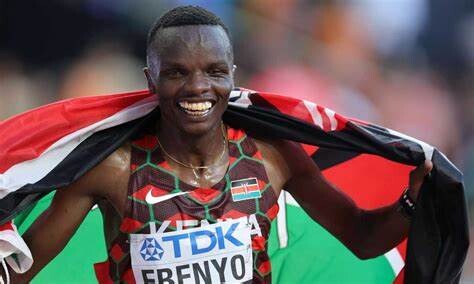
Seen as one of the favorites to represent team Kenya in Paris owing to his exploits in the 2023 World Championships and World Road Running Championships, Ebenyo failed to earn a ticket to feature at the Olympics.
The commonwealth games silver medalist is out to right a wrong with this year's Chicago Marathon, drawing inspiration from last year's Chicago Marathon hero and world record holder, the late Kelvin Kiptum.
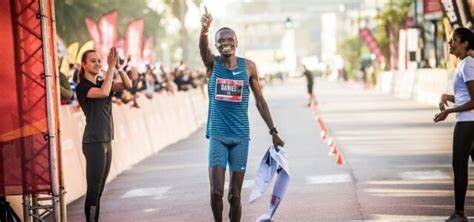
"It was last year when Kiptum broke the world record here (Chicago). And my dream since I started running was to start my marathon debut in Chicago which is fine and I'm looking forward for better result," Ebenyo told Citius Mag.
The Chicago Marathon debutant expressed happiness at being able to run again having missed out on the Olympics.
"No, I was never sad because I know this is sport and anything can happen and I am happy to race again," he added, when questioned on whether he was saddened by missing out on the Olympics.
Ebenyo has revealed that he does not plan to return to track and field any time soon as he shifts his focus.
"No for the track I think I'm done, going for the track now is only for the training. Because I need to focus on one at a time," revealed Ebenyo when questioned on whether he planned on returning to to the track.
"It's a bit crazy but I hope that everything shall be well and I hope for a beautiful start," he added on his Marathon debut.
Ebenyo is one to watch in this years' Chicago Marathon with his 12th ranking and a time of 59:30 in the half marathon.
(10/12/2024) Views: 132 ⚡AMPby Stephen Awino
Bank of America Chicago
Running the Bank of America Chicago Marathon is the pinnacle of achievement for elite athletes and everyday runners alike. On race day, runners from all 50 states and more than 100 countries will set out to accomplish a personal dream by reaching the finish line in Grant Park. The Bank of America Chicago Marathon is known for its flat and...
more...Dry saunas for runners: how useful are they?
For endurance athletes, it’s all about finding that extra edge—whether it’s a faster recovery, a boost in endurance or a way to handle extreme conditions better. Recently, the dry sauna has entered the spotlight as a potential training tool, touted for their health benefits, and their potential ability to speed up recovery while being a useful tool for heat acclimation. But can a dry sauna actually enhance endurance performance? Here’s what the science says.
How the dry sauna affects your cardiovascular system
When you step into a dry sauna, your heart rate will rise similarly to what you’d experience during an easy run. This increase in heart rate happens because your body is working to stay cool in the heat, which can lead to cardiovascular benefits. Some studies have shown that even a single session in a sauna has a positive effect on heart rate variability (HRV), a key indicator of cardiovascular health that’s often used by athletes. For endurance athletes, this could mean a more efficient heart, which may help when it’s time to hit the trails or track.

Heat acclimation and improved performance
Spending time in a sauna may also help you acclimate to higher temperatures, which can be the difference between finishing a race and taking a DNF when running in warm conditions. Research indicates that heat acclimation from regular sauna sessions can improve blood plasma volume, helping with thermoregulation and endurance. Your body becomes more efficient at cooling itself, meaning you might handle a hot race day a little better. Just 15 to 20 minutes a few times a week could potentially make a difference.

The muscle-recovery angle
Endurance athletes know that recovery is as important as the workout itself. Sauna use has been shown to reduce muscle soreness by boosting circulation, which helps deliver nutrients to muscle tissues and remove metabolic waste. A post-run sauna session could potentially speed up recovery, allowing you to bounce back faster for your next workout. Studies suggest that heat exposure increases the release of human growth hormone, which aids in muscle repair.
Pay attention to how you feel
While sauna sessions offer intriguing benefits, they’re not a substitute for actual training. Saunas are also dehydrating, so it’s essential to rehydrate thoroughly afterward. If you have any cardiovascular concerns or other medical conditions, consult a professional before diving in. It’s all about balance—sauna use can be a valuable supplement to an existing training routine, but is not a replacement for it.
(10/12/2024) Views: 127 ⚡AMPby Keeley Milne
Shirtless Florida man risks it all, running during Hurricane Milton
As Category 3 Hurricane Milton slammed into the southern coast of Florida on Wednesday night, the U.S. government issued an urgent plea for all residents to evacuate the storm’s deadly path. But for one Tampa runner, no storm—even one as powerful as Milton—could derail his marathon training.
In a moment that left reporters and viewers baffled during a live News Nation broadcast, a shirtless runner was spotted casually jogging through the hurricane’s fierce winds and torrential rain. The runner quickly went viral on Instagram and X, with many shocked at his audacity—or perhaps his madness. This moment reminds us of the running video from a 2015 snowstormin Portland.
He even flashed a smile and waved at News Nation field correspondent Brian Entin, who was reporting live from the storm’s chaos. Stunned, Entin remarked, “That’s a Florida man for ya, right there. Jogging in the hurricane!”
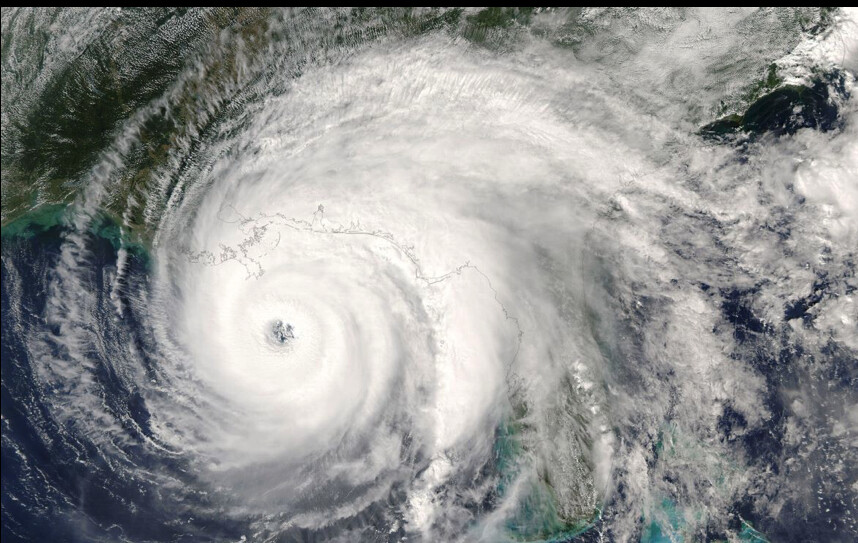
Meanwhile, the camera operator couldn’t help but follow the runner as he sprinted through the storm, seemingly unfazed by the hurricane’s wrath. Clad only in athletic shorts and sneakers, the runner acted as though he were out for a leisurely jog on a sunny day, rather than in the midst of a life-threatening storm surge.
Hurricane Milton brought devastating winds and catastrophic flooding to much of Florida’s Gulf Coast, leaving 3,000,000 people without power. With warnings as dire as, “If you stay, you will die,” the runner remained undeterred—Florida’s own real-life Forrest Gump—determined to hit his mileage goals. Because, after all, when you’ve got a race coming up, even a Category 3 hurricane can’t stop you.
Marathon training waits for nothing apparently—not even Hurricane Milton.
(10/12/2024) Views: 89 ⚡AMPby Running Magazine
How to Actually Enjoy Running (Even With the Occasional Blister or Side Stitch)
Six options that can help every kind of runner .
There are runners who make it look easy, with the smoothest form, quick cadence, and a smile on their face no matter what mile they’re clocking. And then, there’s the rest of us, who don’t exactly know how to enjoy running consistently. Maybe you have to drag yourself out of bed to run. Maybe most days, the time on your feet just ticks a little too slow.
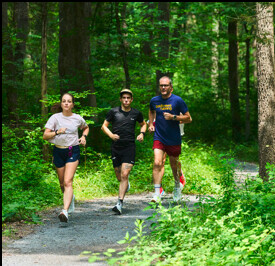
Love it or hate it, running does wonders for your cardiovascular health, can boost mood, and help you achieve better mental health. Whether you’re a total beginner or a runner facing burnout, it is possible to fall in love (or back in love) with the run.

If you've been struggling with sticking to traditional training plans and truly want to learn how to enjoy running, we’ve compiled a few unique tools to help you run with your heart.
There are six options that can help every kind of runner approach running differently and try something new. Through time, distance, music, and feel, here’s exactly how to enjoy running (even with the occasional blister or side stitch.)
How to Enjoy Running by Tracking Time
Best for Runners Who...
Don’t mind having your hand held a little; want a fairly fail-safe method to easing into running; are a rule-follower; don’t mind frequently looking down at your wrist.
You’ll Need...
A watch. (A digital chronograph watch is easiest to follow and can be preset to beep at you when it’s time to run or walk.)
Where to do it:
Outside on the road, a trail, the track, or inside on a treadmill. If you do it on a trail or on hilly terrain on the road, you’ll need to adjust a bit based on feel: run for longer on a downhill, shorter on an uphill.
How to do it:
Follow any given run-by-time plan, like the Runner’s World walk-to-run plan that has helped thousands of beginners get started. Unless you have a photographic memory, either print and cut out the workout to take with you, or jot it down on something small like a business card and take that with you. Alternatively, you could try to memorize it, and/or you could take a picture of it with your phone to reference if you forget (and don’t mind taking your phone with you). You can preset some watches to help you stick to the intervals.
How to Enjoy Running by Loosely Tracking Time
Best for Runners Who...
Have a rebellious streak and want a
On a road, trail, treadmill, or track.
How to do it:
Walk for roughly the first 5 minutes. If you feel like walking for 6, go nuts.
Run until you don’t feel like running anymore. Maybe this is 30 seconds, maybe it’s a few minutes.
Walk again.
Run again, laughing in the face of structure. (Or just run.)
Repeat for the remainder of your run, aiming to run for a total of 2 or 3 minutes on your first time out. Break down those 2 or 3 minutes within a 30-minute outing however you want. The other 27 or 28 minutes, walk.
Walk to cool down.
Improve (week 3ish): Increase your total run time to 5 minutes.
Improve more (week 5ish): Increase your total run time to 10 minutes. And walk more if you bloody feel like it.
Improve even more (week 7ish): Increase your total run time to 15, 20, and eventually 30 minutes or more.
Tip: Make sure you’re entering this plan, and any other, from where you are physically and mentally as a runner. If you run regularly (but maybe hate it) for example, do the above by running, say, 20-30 minutes total, broken down
How to Enjoy Running by Monitoring How You Feel
Best for Runners Who...
Don’t love watches; need a break from technology; want to feel more in tune with your body.
You’ll Need...
An ability to listen to your body and mind.
Where to do it:
Anywhere!
How to do it:
Start by walking.
When your body feels moderately warmed up (less creaky than when you started; usually about 5 to 10 minutes in), break into a jog.
Stop running and start walking when you still feel sorta okay, but when you notice a hitch in your stride or a light strain (more than usual) in your muscles or breath. Do not wait to walk until you can’t breathe or talk.*
Start running again.
Repeat steps 3 and 4 for 3 or 4 rounds.
Walk for a few minutes after your last run segment to cool down.
Improve (week 3ish): Run for longer during each segment, but don’t make jumps that are too big. Give yourself at least two to three runs with similar run-length segments before adding time.
Improve more (week 5ish): Run for longer still during each segment. Again, do this gradually.
Improve even more (week 7ish): You got it. Run for longer during each segment, still listening to your body.
Tip: Choosing natural markers, as in “run until that big tree,” “walk until the stop sign,” can help keep you motivated. But if your body tells you to stop before then, listen.
* The Talk Test: If you can no longer speak a full sentence, it’s time to slow down and walk. Walk until you regain your breath and your muscles feel semi-ready. (Don’t wait until you feel perfect, because you won’t.)
How to Enjoy Running by Listening to Music
Best for Runners Who...
Need music to make your heart beat; don’t like watches but want some structure on your runs; can’t fathom getting out the door without music blasting in your ears.
You'll Need...
Some way to play music into your ears and carry said music player comfortably. (That probably means carrying
How to do it:
Walk for the duration of two songs (avoiding jam band epics).
Jog/run for the first verse of the next song.
Walk during the next verse and chorus of that song.
Jog/run for another verse, before walking until the end of the song.
Repeat the run/walk for four songs.
Walk home during the duration of two songs to cool down.
Improve (week 3ish): Warm up by walking for two songs. Once you feel comfortable jog/running for the duration of a verse, increase the jog/run duration from one verse to two.
Improve more (week 5ish): Warm up by walking for two songs. Jog/run fortwo verses and through the end of the chorus (while still walking for the restof the song). Repeat for four songs.
Improve even more (week 7ish): Warm up by walking for one or two songs.Jogging for an entire song, then walk a song, then jog/run for another entire song. Repeat for four or so songs.
Tip: Playing the same music/playlist will help you gauge your improvement.
Another tip: The cadence of a song can affect the speed with which your feet hit the ground, so choose songs accordingly. Look for a running playlist online or just choose songs that have an upbeat tempo. It’s tough to crank out miles to “The Way You Look Tonight,” unless you want to force yourself to run slower. Likewise, especially if you’re first starting out, avoid superfast dance beats. You don’t want the cadence of a song to make you feel badly about your stride or make you trip on yourself trying to keep up.
How to Enjoy Running by Monitoring Distance on a Track
Best for Runners Who...
Are a visual thinker; feel more comfortable in controlled environments; are competitive.
You'll Need:
A track.
Where to do it:
A track.
How to do it:
Walk two laps.
Jog/shuffle the curve of the beginning of the third lap.
Walk the rest of
Another tip: While you’re trying hard, take an inside lane. While you’re not, move to an outside lane. Always look over your shoulder before switching lanes so you avoid collisions and annoyed track mates.
How to Enjoy Running by Monitoring Distance off a Track
Best for Runners Who...
Are visual thinkers; don’t want to go by time.
You'll Need:
An ability to listen to your body; a treadmill, if doing this on a treadmill; a GPS-enabled device, if doing this by device.
Where to do it:
On a road, trail, or treadmill.
How to do it:
Walk until your body feels less creaky than when you started.
Spot something ahead of you, but not too far ahead of you—a tree, a telephone pole, a stop sign. If you’re on a treadmill or if going by distance measured by a device, choose a distance.
Jog/run to that thing/mileage.
Walk until another thing—a different tree, a different telephone pole, a yield sign. Or to the next mileage increment on your treadmill console or smartwatch.
Repeat, listening to your body. If the thing/increment you chose makes you go into overload—your muscles or lungs scream—walk sooner
(10/12/2024) Views: 103 ⚡AMPby Runner’s World
How to (Actually) Burn Off Belly Fat—and Why It Matters
Of all the baseless fitness myths to have been peddled through ages of infomercials and influencers alike, the notion that you can “blast belly fat” is among the most audacious. Targeted fat loss, or spot reduction, is simply not a thing that our bodies are equipped to do.
“You can't spot reduce, no matter how promising the marketing and ads that tell you that's the case,” says Chris Mohr, PhD, RD, cofounder of Mohr Results. “While it would be nice if you could lose fat from wherever you’d like, your body handles fat as it wants.”
However, while you may not be able to bump belly fat to the front of your fat-loss queue, that’s not to say you can’t shed it. You absolutely can. Unlike the other 90% or so of fat that we carry on our bodies, belly fat—or visceral fat, to use its government name—is a particularly dangerous brand of baggage that has been shown to significantly raise your risk of a long list of serious health conditions. And the longer you ignore it, the harder it is to shake.

Here, we’ll explain why belly fat is worth your attention. Better yet, with the help of medical and fitness experts, we’ll tell you how to lose it—and won’t even try to sell you a DVD.
Why is belly fat more dangerous than “regular” fat?
Generally speaking, when we talk about fat, we’re talking about subcutaneous fat—the fat that resides just
How to tell if you’re carrying around excess belly fat
The most accurate way to measure your visceral fat would be with a CT or DEXA scan, although those aren’t necessarily practical or cost-effective for most people. Fortunately, in this case, a simple waist-to-hip ratio is more useful than specific numbers, so a regular old tape measure will do the trick.
“Basically, it's the ratio of your waist-to-hip circumference,” says Dr. Kumar. “For a man, we don't want it over one, meaning we don't want the waist to have a larger circumference than the hips. Low health risk is 0.95 or lower. And then high health risk is one or higher.”
Other warning signs that you might be approaching dangerous levels of belly fat can include elevated blood sugar, low testosterone, or even snoring and trouble swallowing. “As you accumulate visceral fat, you're probably slowly accumulating fat around other organs, like the esophagus and the trachea,” says Dr. Kumar.
How to burn off belly fat
The way we gain visceral fat is kind of like how you might rack up financial debt. Once your subcutaneous fat stores exceed their optimal level, excess calories begin getting stored as visceral fat, says Dr. Kumar. The main difference would be there’s no way to prioritize paying down your anatomical overdraft. But even though we can’t target visceral fat alone, there are a few things you can do to optimize your diet, workouts, and lifestyle so that you’re actively chipping away at it.
Prioritize Resistance Training and HIIT
A Harvard study that tracked the measurements of 10,500 American men over a 12-year period determined that weight training was more effective at reducing waistline size than any other activity, including moderate to vigorous aerobic training.
“When you strength train, two powerful things are happening,” says Luke Carlson, founder and CEO of Discover Strength. “The first is that you add lean muscle tissue to your body; the more lean muscle tissue you have, the more calories you're burning at rest, which means you're not storing those calories as fat on the abdomen. And the second is that when we do a tough strength training workout, we acutely burn five to nine percent more calories for the next three days.”
“What happens when you lift weights and increase your lean body mass is you become more sensitive to the hormone insulin,” explains Dr. Kumar. “Visceral fat is actually very insulin-resistant and comes along with a condition called insulin resistance. Building muscle treats insulin resistance, which reduces belly fat.”
While steady-state cardio has not proven to be particularly effective for burning visceral fat, high-intensity interval training (HIIT) running workouts have. Want to really kick things into high gear? Throw some strength exercises into an interval-based running workout.
Increase protein while decreasing overall calories
Carbs get villainized, but when it comes to fat loss it’s really all about creating an overall calorie deficit rather than
Don’t let poor sleep sabotage your progress
“The other piece that has to be discussed is certainly sleep,” says Dr. Mohr. “There have been studies showing that when you sleep less, you eat more and gain more weight.”
In one recent study, published last year in the journal Sleep Medicine, researchers reported a “significant” inverse association between sleep duration and visceral fat mass. In other words, the less sleep people got, the more visceral fat they gained. Interestingly, subcutaneous fat was not affected, strengthening the connection between sleep and visceral fat in particular. It’s also worth noting that the waistline-protecting benefits of sleep appeared to top out at eight hours.
While sleep alone probably isn’t going to burn off your gut, don’t let it be the thing that undermines all of your other efforts to reduce belly fat. “We know that sleep plays a huge role in weight loss and weight gain,” says Dr. Mohr. “It’s a big piece of the puzzle that we need to think about.”
(10/12/2024) Views: 124 ⚡AMPThanksgiving foods to avoid before your turkey trot
With Thanksgiving just days away, it’s hard not to get excited about your favourite holiday dishes—roast turkey, stuffing, mashed potatoes, and, of course, pumpkin pie for dessert. You might also be planning a run along your favourite scenic trail, now that the crisp autumn weather has arrived. To make sure you can enjoy your turkey trot without any post-feast regrets, here are a few foods you might want to go easy on the night before your run.
Stuffing


Indulging in some stuffing might seem like the perfect way to carb-load, but it won’t benefit your run as much as you’d think. The white bread typically used is high on the glycemic index, meaning it causes your blood sugars to spike, and then crash. Opting for complex carbs, such as squash or sweet potatoes, will raise your blood sugar slowly, supplying you with more energy over an extended period of time.
Mashed potatoes and gravy
Your favourite mashed potatoes and gravy might be loaded with sodium, which can leave you dehydrated during a run, and fat, which takes longer to digest and could still be sitting in your stomach. This is especially true if you’re using boxed or canned potatoes. Making these dishes from scratch lets you cut back on added salt and butter, helping avoid any belly troubles.
Turkey drumsticks
Turkey is a lean protein that can help with muscle repair without being really high in fat–if you eat white meat (over dark). The dark meat and turkey legs are lower in protein and higher in fat, making them less ideal, and the skin is the fattiest part entirely. If you’re prone to having a sensitive stomach on a run, sticking to primarily white meat can help you avoid that sluggish feeling.
Cruciferous vegetables
Veggies that are part of the cruciferous family are high in fibre; this includes broccoli, Brussels sprouts, cabbage, cauliflower and kale. Fibrous foods can increase bloating, cause digestive discomfort and even leave you dehydrated–all things you don’t want to deal with when exercising.
Overall, avoiding overeating and straying from your regular pre-run foods are the best ways to ensure you don’t feel like a turkey when you hit the trails.
(10/12/2024) Views: 88 ⚡AMPby Running Magazine
Legese and Chepngetich lead Chicago Marathon fields
Ruth Chepngetich heads to the Bank of America Chicago Marathon on the hunt for a hat trick, while Birhanu Legese is the fastest in the men’s field for the World Athletics Platinum Label road race on Sunday (13).
The women’s race features a clash between Chepngetich, her Kenyan compatriot Joyciline Jepkosgei and Ethiopia’s Sutume Kebede – three sub-2:17 runners who form part of a field that includes another six women to have dipped under 2:20.
Chepngetich, the 2019 world marathon champion, won in Chicago in 2021 and 2022, and followed that with a runner-up finish to Sifan Hassan last year. She clocked 2:14:18 on that occasion, while her PB of 2:14:18 set in Chicago in 2022 makes her the fourth fastest women’s marathon runner in history.
She ran 2:24:36 for her most recent marathon, in London in April, and placed ninth, but then clocked 1:05:58 to win the 21k Buenos Aires half marathon in August.
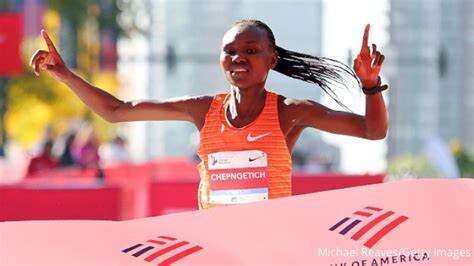
Jepkosgei, who won the London Marathon in 2021 and New York City Marathon in 2019, finished fourth in Chicago last year in 2:17:23.
She improved by one place when returning to marathon action in London in April, setting a PB of 2:16:24.
It’s Kebede who leads this season’s top list, thanks to the PB of 2:15:55 she set to win the Tokyo Marathon in March. That puts her at No.8 all time and she will be hoping to make the most of the fast course in Chicago.
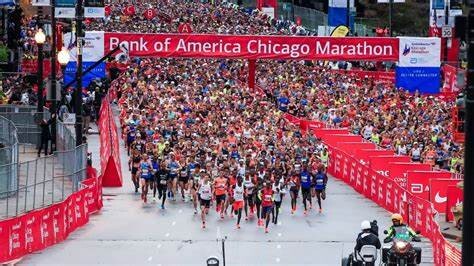
“After seeing what my teammate Kelvin Kiptum did last year, I want to come to Chicago to do something great,” said Kebede, who finished 15th in last year’s race.
Kiptum, who was part of Kebede’s training group, died in a road traffic accident in February, just four months after he set his world marathon record of 2:00:35 in Chicago. This year, the event will honour Kiptum’s legacy with a moment of silence at the start line.
Joining Chepngetich, Jepkosgei and Kebede on that start line will be three more women with PBs under 2:18 – Ethiopia’s Degitu Azimeraw, Ashete Bekere and Hiwot Gebrekidan – plus Kenya’s Irine Cheptai, who ran 2:18:22 in Hamburg in April.
The field also features the second and third fastest ever US women’s marathon runners, Keira D’Amato and Betsy Saina, who have also dipped under 2:20. They are joined in this competitive field by their compatriots Sara Hall and Emma Bates.
Ethiopia’s Legese leads the men’s field with the PB of 2:02:48 he ran in Berlin in 2019. That performance puts him sixth on the men’s world marathon all-time list but since then his highest marathon finish has been a third place, achieved in Rotterdam with a 2:05:16 run in April.
The two-time Tokyo Marathon champion will want to return to winning ways when he heads back to Chicago, where he placed 10th when making his World Marathon Majors debut in 2018, but he faces tough opposition.
Six other men in the field have PBs faster than 2:06, including Kenya’s Amos Kipruto, Vincent Ngetich and John Korir, and Ethiopia’s Dawit Wolde, Amedework Walelegn and Mohamed Esa.
Kipruto, the 2019 world bronze medallist, and Ngetich have matching PBs of 2:03:13. Kipruto won the London Marathon in 2022 and trains with Benson Kipruto, who won that year’s Chicago Marathon, while Ngetich was second in the Berlin Marathon last year, five places ahead of Kipruto. He was also third at this year’s Tokyo Marathon.
Korir ran his PB of 2:05:01 when finishing third in Chicago in 2022, while Wolde ran 2:03:48 in Valencia last year, Esa has a best of 2:05:05 from Amsterdam in 2022 and Walelegn clocked 2:04:50 in Rotterdam in April, finishing runner-up – one place ahead of Legese.
Looking to join them at the front of the field will be Kenya’s Daniel Ebenyo, the world 10,000m and half marathon silver medallist who makes his marathon debut. The 29-year-old ran a 59:30 half marathon in Berlin in April, 26 seconds off his PB set in Manama in 2022.
Ethiopia’s Jemal Yimer Mekonnen, who finished fourth in the half marathon at last year’s World Road Running Championships behind runner-up Ebenyo, is back in marathon action after his win in Seoul in March.
Among the athletes racing on home soil are USA’s Zach Panning, CJ Albertson and Brian Shrader.
Elite fields
WomenRuth Chepngetich (KEN) 2:14:18Sutume Kebede (ETH) 2:15:55Joyciline Jepkosgei (KEN) 2:16:24Degitu Azimeraw (ETH) 2:17:58Ashete Bekere (ETH) 2:17:58Hiwot Gebrekidan (ETH) 2:17:59Irine Cheptai (KEN) 2:18:22Keira D'Amato (USA) 2:19:12Betsy Saina (USA) 2:19:17Sara Hall (USA) 2:20:32Emma Bates (USA) 2:22:10Buze Diriba (ETH) 2:23:11Sara Vaughn (USA) 2:23:24Susanna Sullivan (USA) 2:24:27Gabi Rooker (USA) 2:24:35Lindsay Flanagan (USA) 2:24:43Stacey Ndiwa (KEN) 2:25:29 Lauren Hagans (USA) 2:25:56Annie Frisbie (USA) 2:26:18Jackie Gaughan (USA) 2:27:08Dominique Scott (RSA) 2:27:31Diane Nukuri (USA) 2:27:50Makena Morley (USA) 2:30:25Anne Marie Blaney (USA) 2:30:43Amy Davis-Green (USA) 2:33:09Aubrey Frentheway (USA) debut
MenBirhanu Legese (ETH) 2:02:48Amos Kipruto (KEN) 2:03:13Vincent Ngetich (KEN) 2:03:13Dawit Wolde (ETH) 2:03:48Amedework Walelegn (ETH) 2:04:50John Korir (KEN) 2:05:01Mohamed Esa (ETH) 2:05:05Jemal Yimer (ETH) 2:06:08Kyohei Hosoya (JPN) 2:06:35Toshiki Sadakata (JPN) 2:07:05Tatsuya Maruyama (JPN) 2:07:50Yuichi Yasui (JPN) 2:08:48Jorge Castelblanco (PAN) 2:09:24Zach Panning (USA) 2:09:28Brian Shrader (USA) 2:09:46CJ Albertson (USA) 2:09:53Tomoki Yoshioka (JPN) 2:10:03Reed Fischer (USA) 2:10:34Nathan Martin (USA) 2:10:45Colin Mickow (USA) 2:11:22Kevin Salvano (USA) 2:11:26Jacob Thomson (USA) 2:11:40Turner Wiley (USA) 2:11:59Shadrack Kipchirchir (USA) 2:13:02JP Flavin (USA) 2:13:27Charlie Sweeney (USA) 2:13:41Ben Kendell (USA) 2:15:49Phil Parrot-Migas (CAN) 2:15:53Aaron Gruen (USA) 2:15:56Daniel Ebenyo (KEN) debutPeter Lynch (IRL) debutAlex Maier (USA) debutAlex Masai (USA) debut
(10/11/2024) Views: 132 ⚡AMPby World athletics
Bank of America Chicago
Running the Bank of America Chicago Marathon is the pinnacle of achievement for elite athletes and everyday runners alike. On race day, runners from all 50 states and more than 100 countries will set out to accomplish a personal dream by reaching the finish line in Grant Park. The Bank of America Chicago Marathon is known for its flat and...
more...

